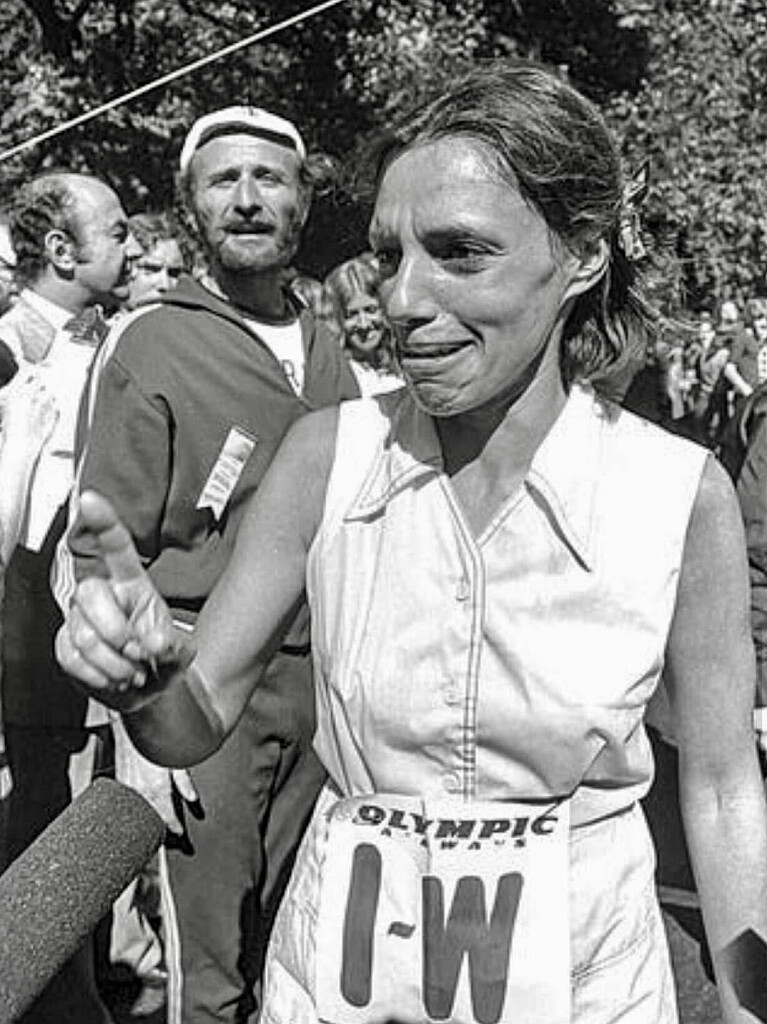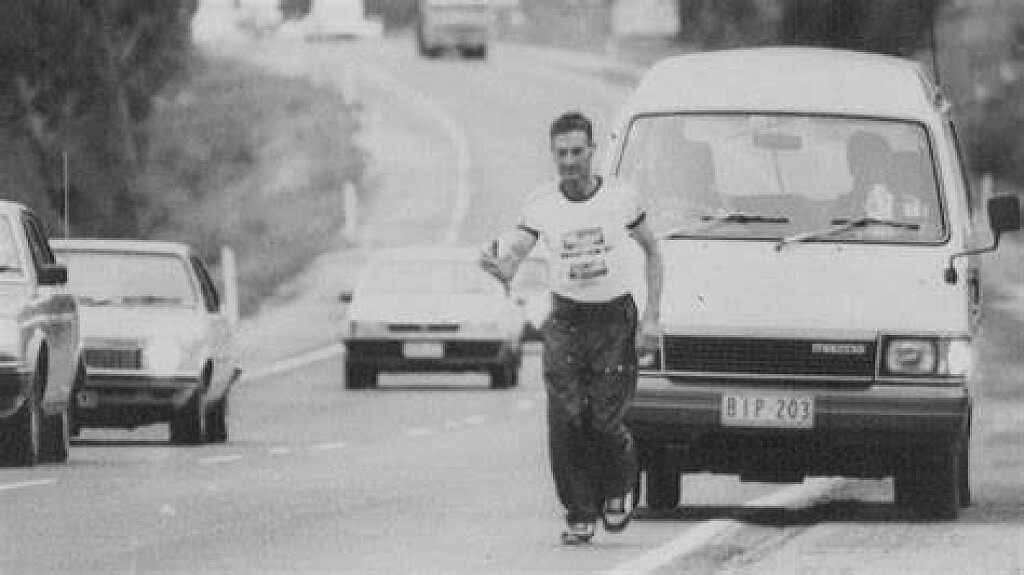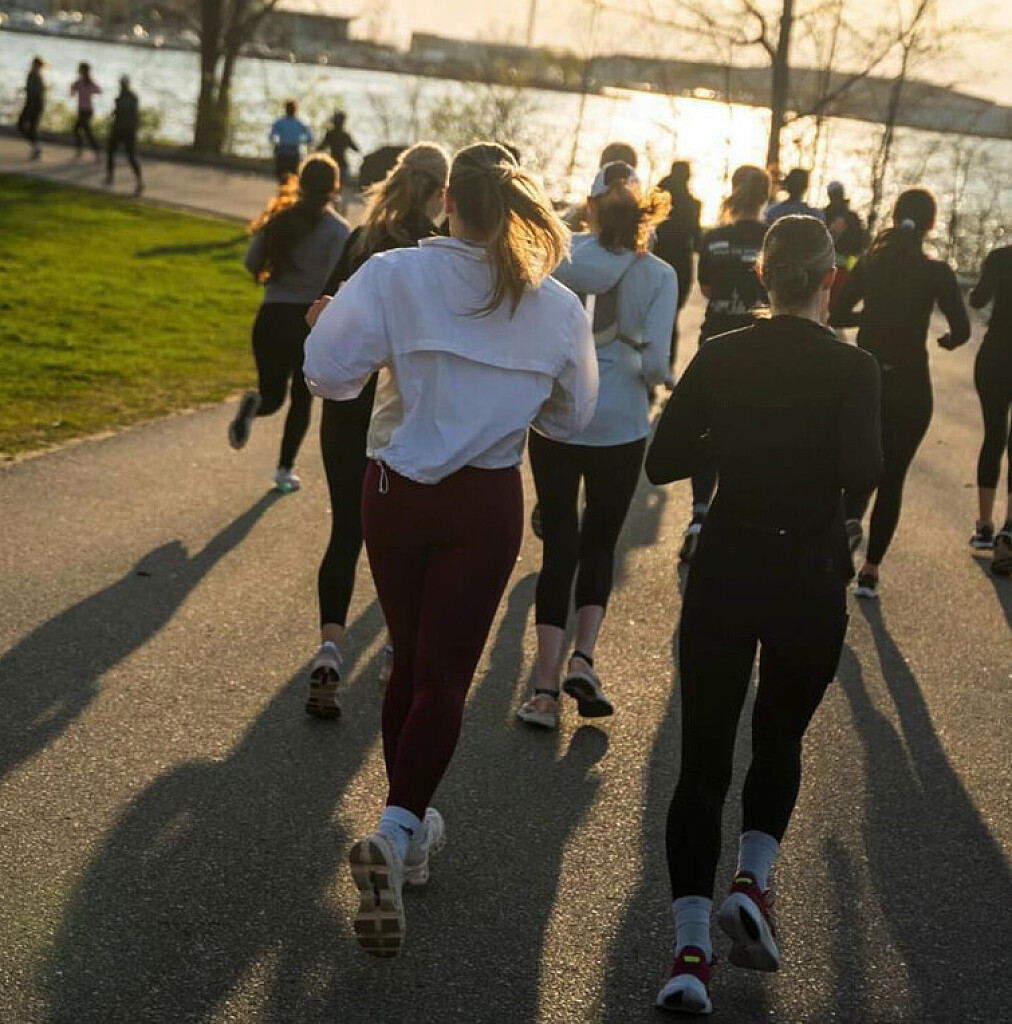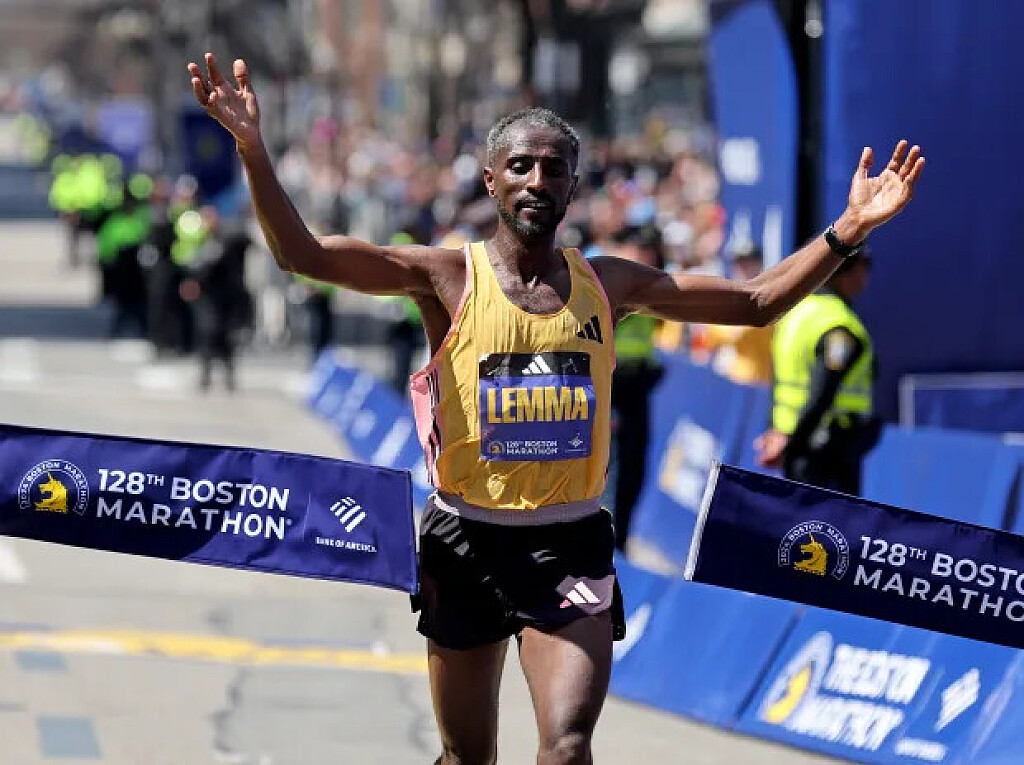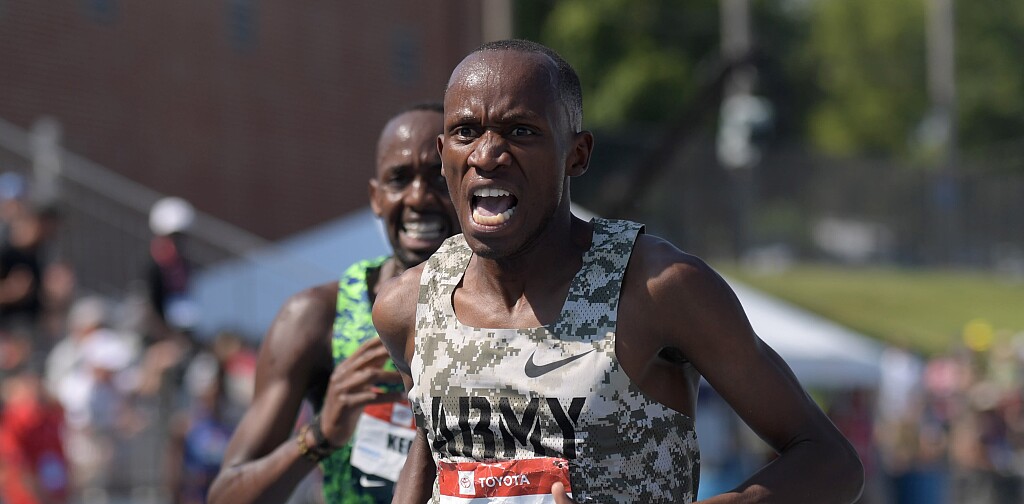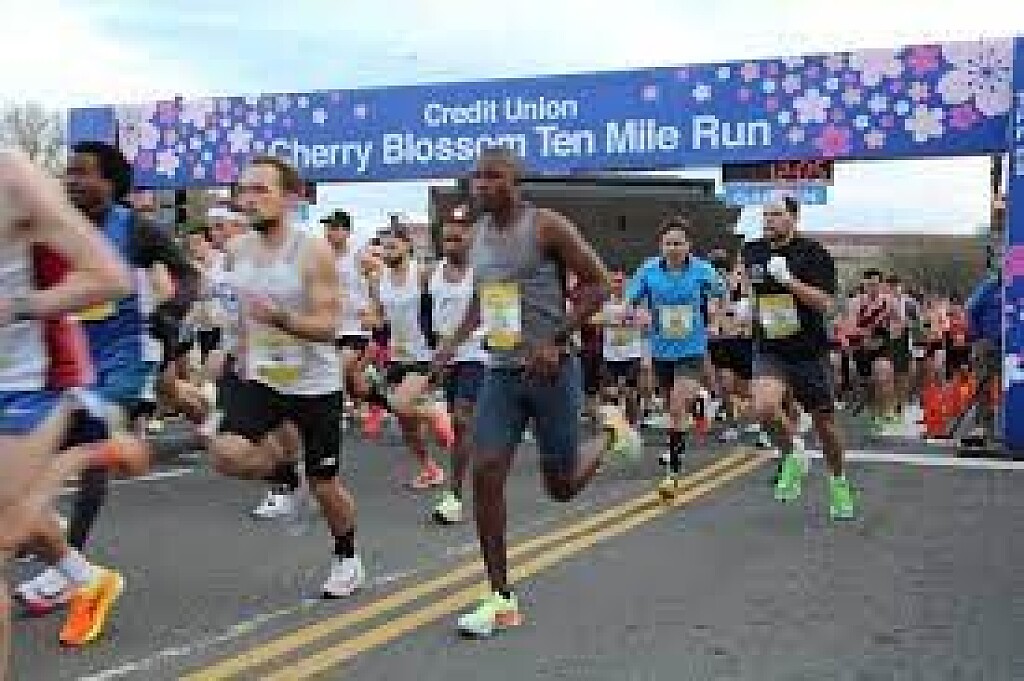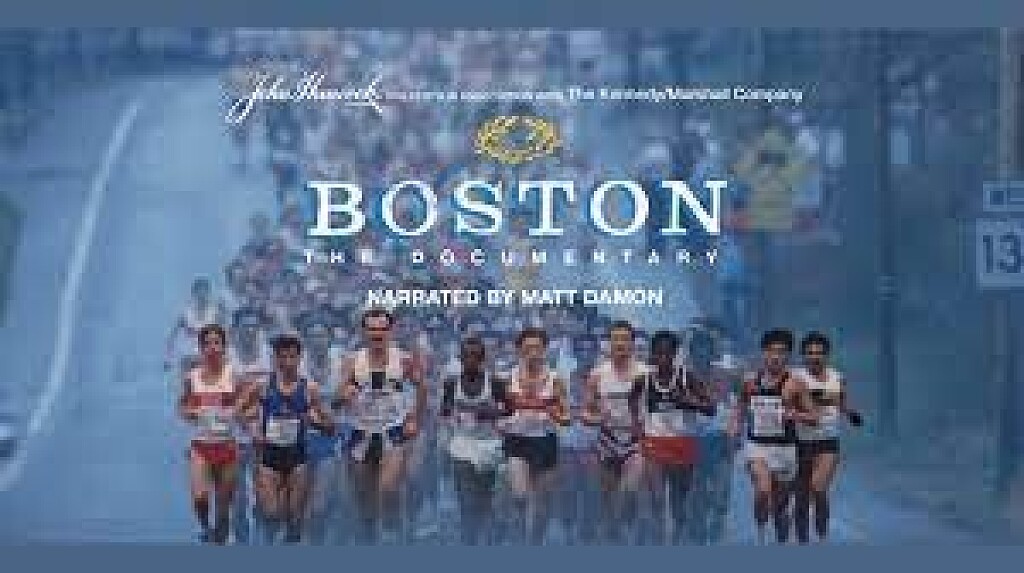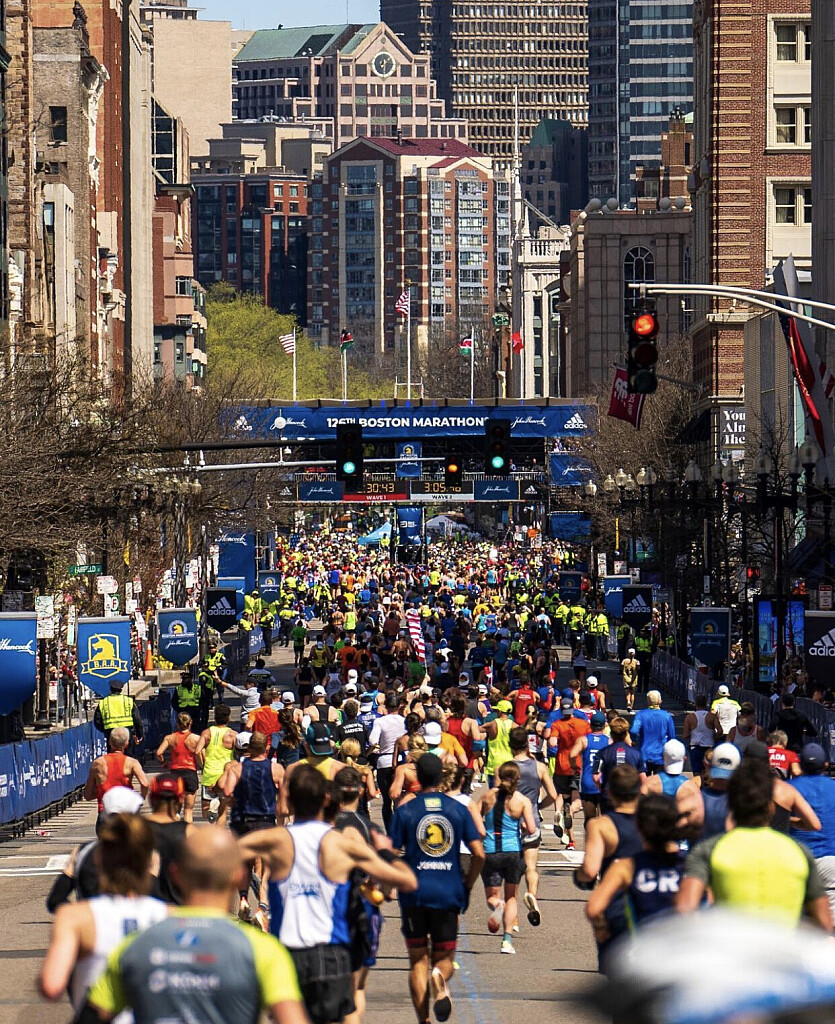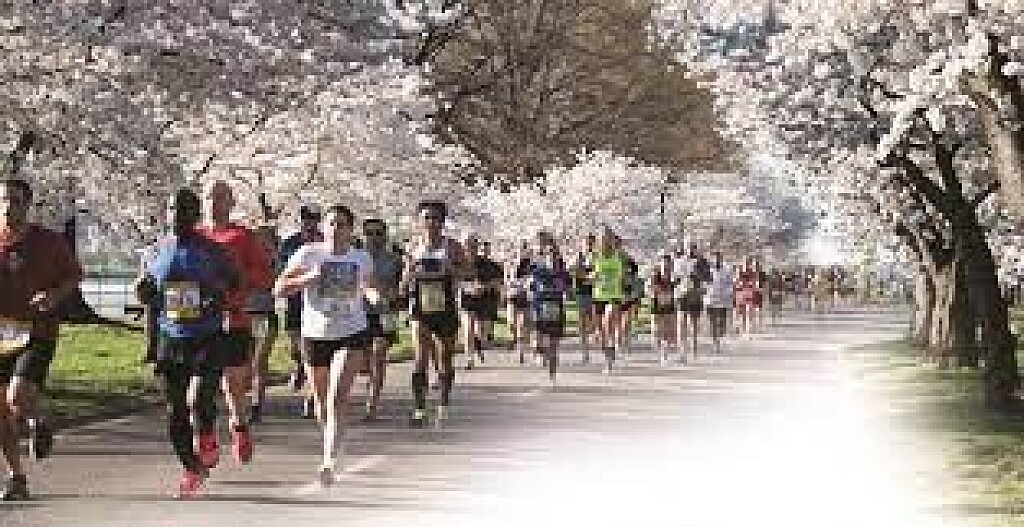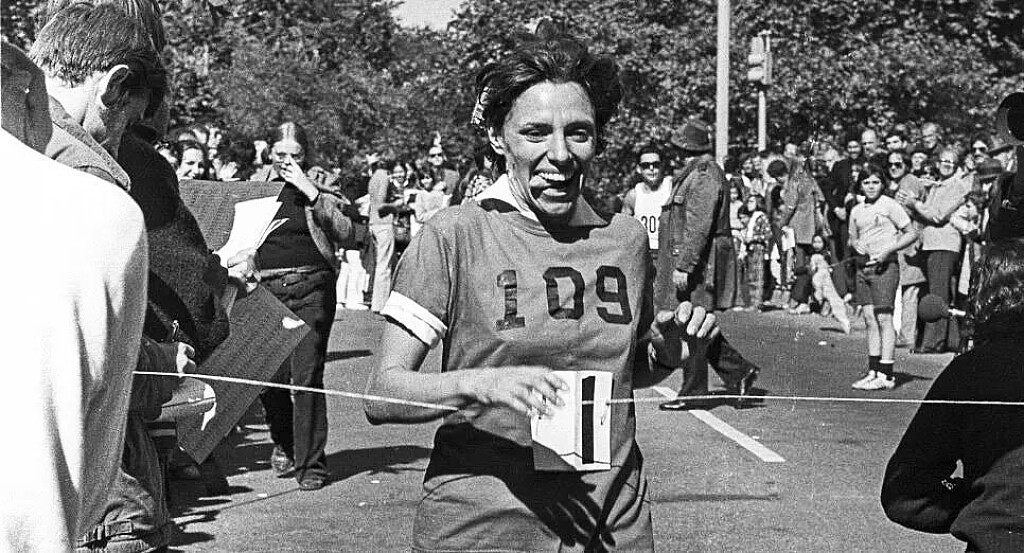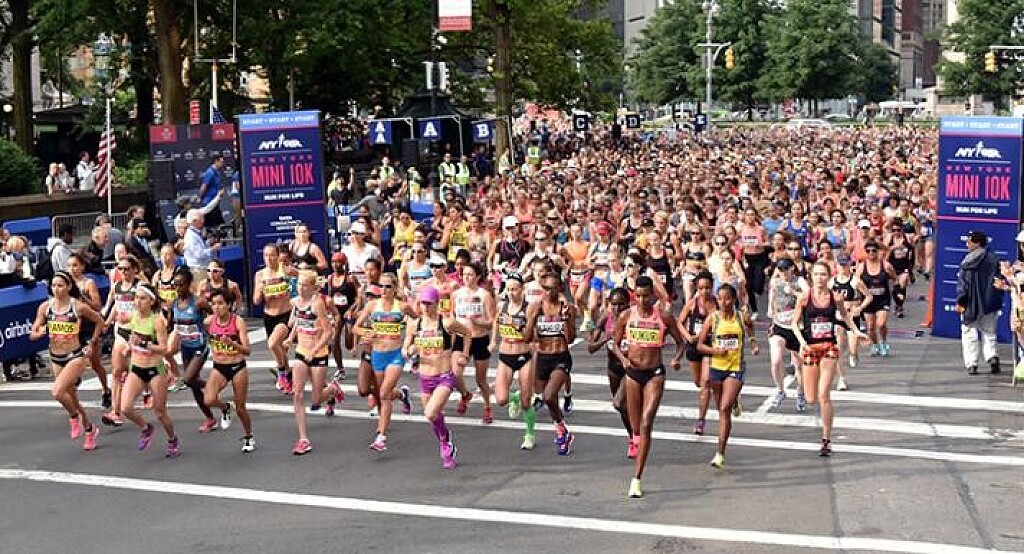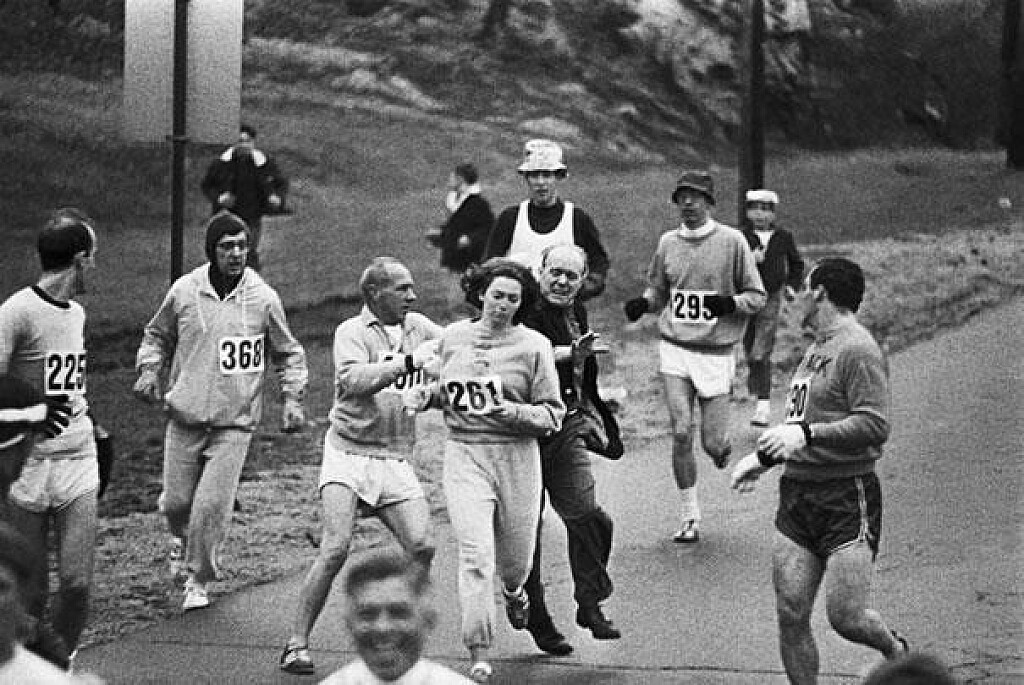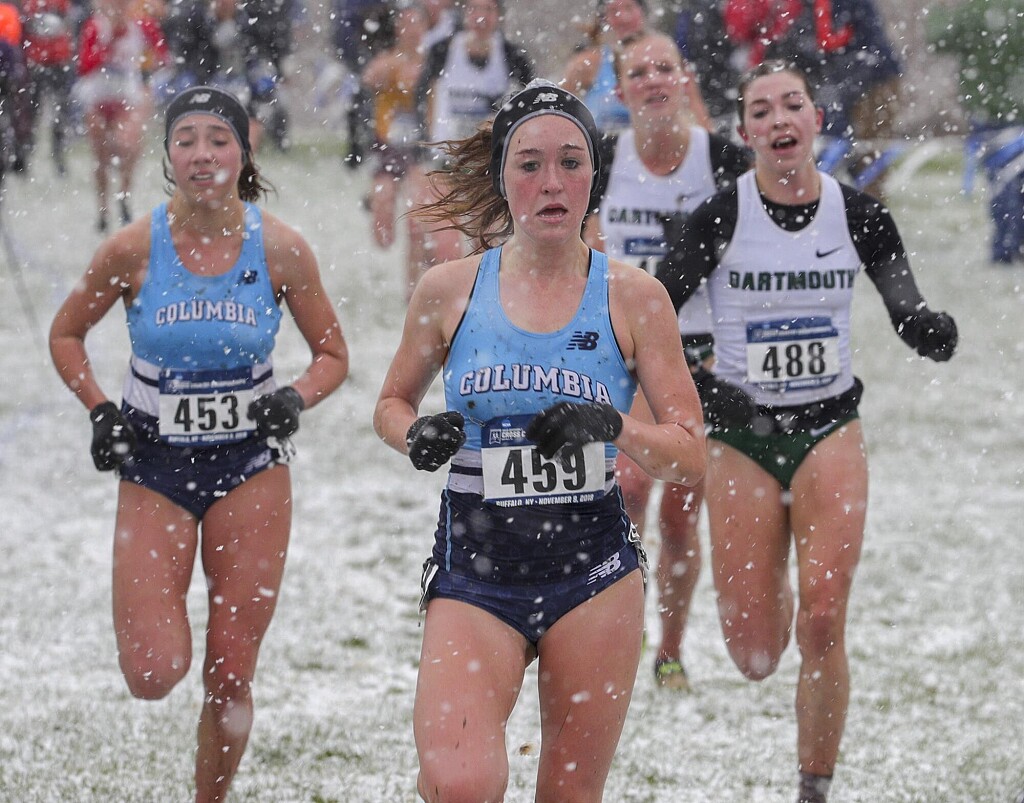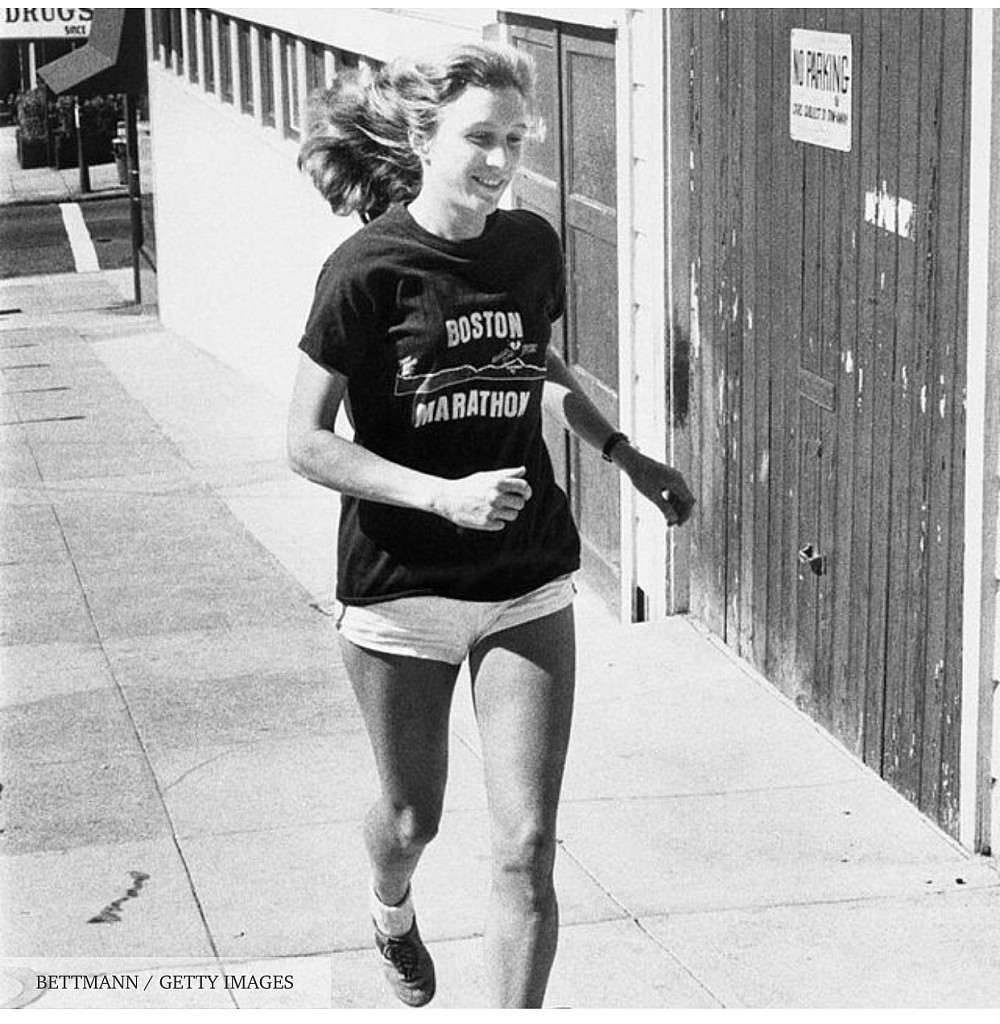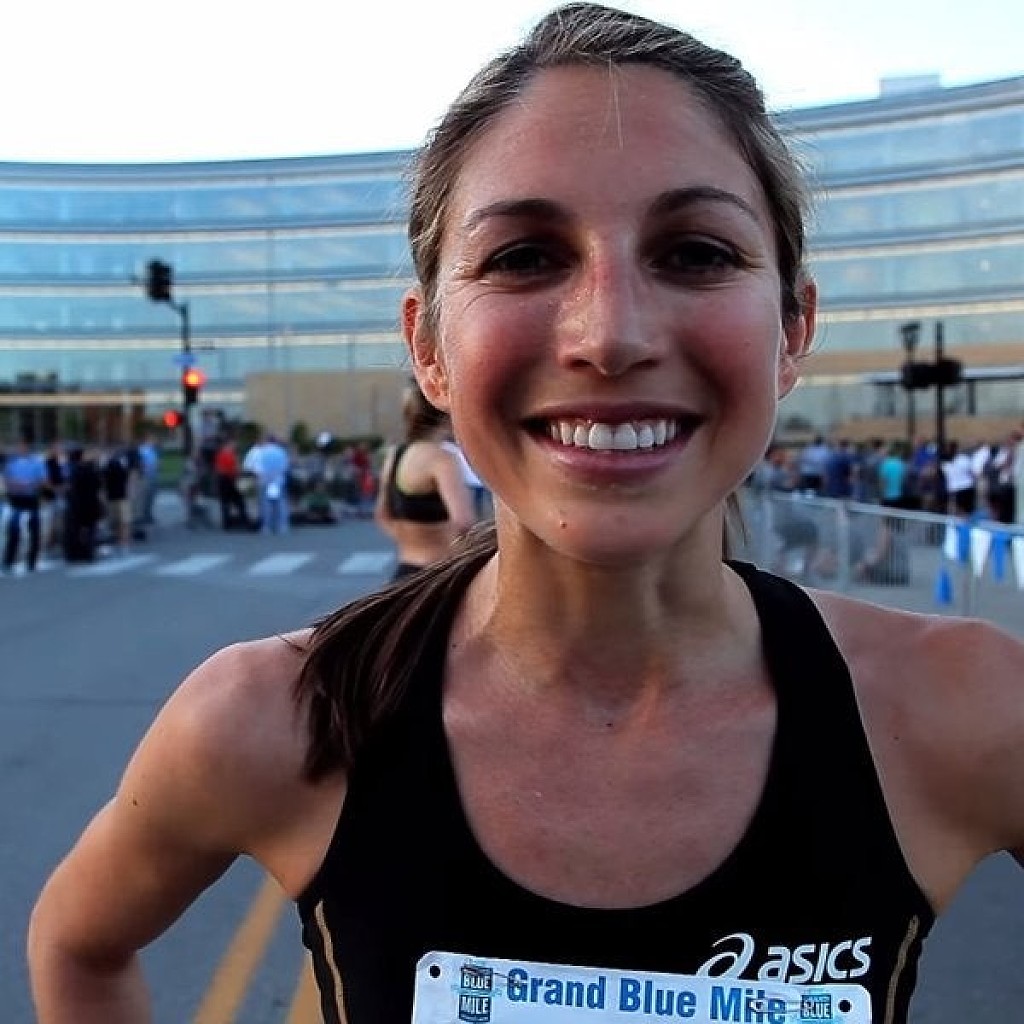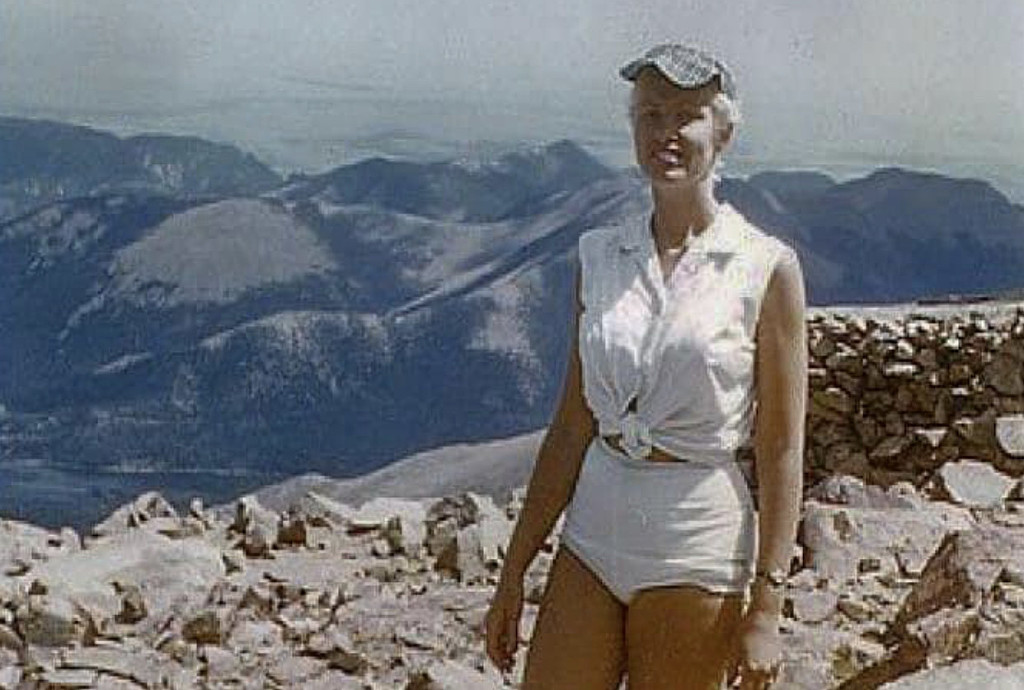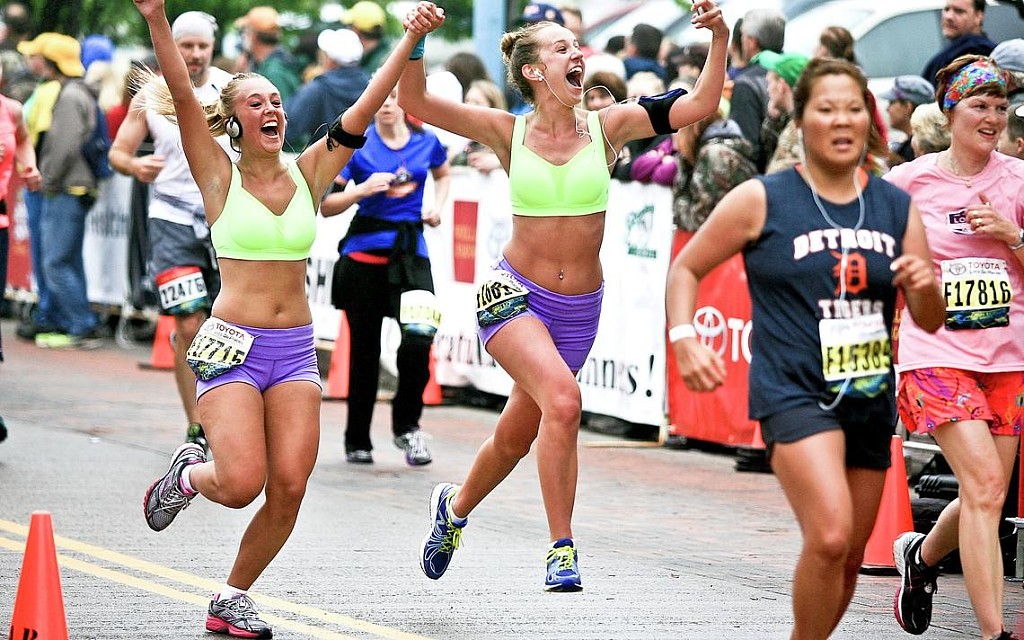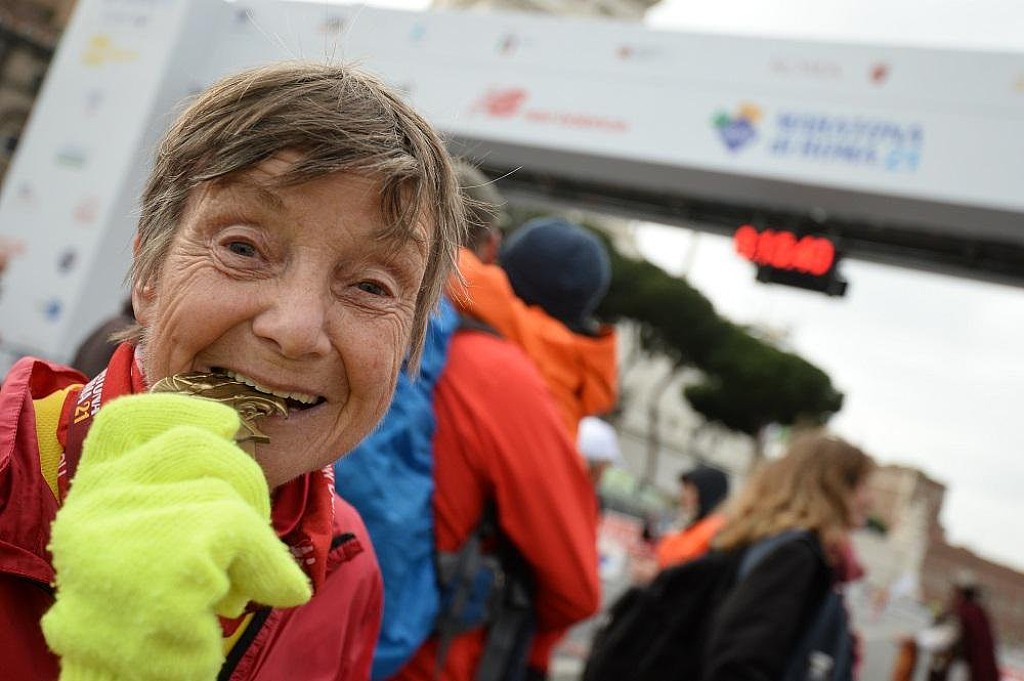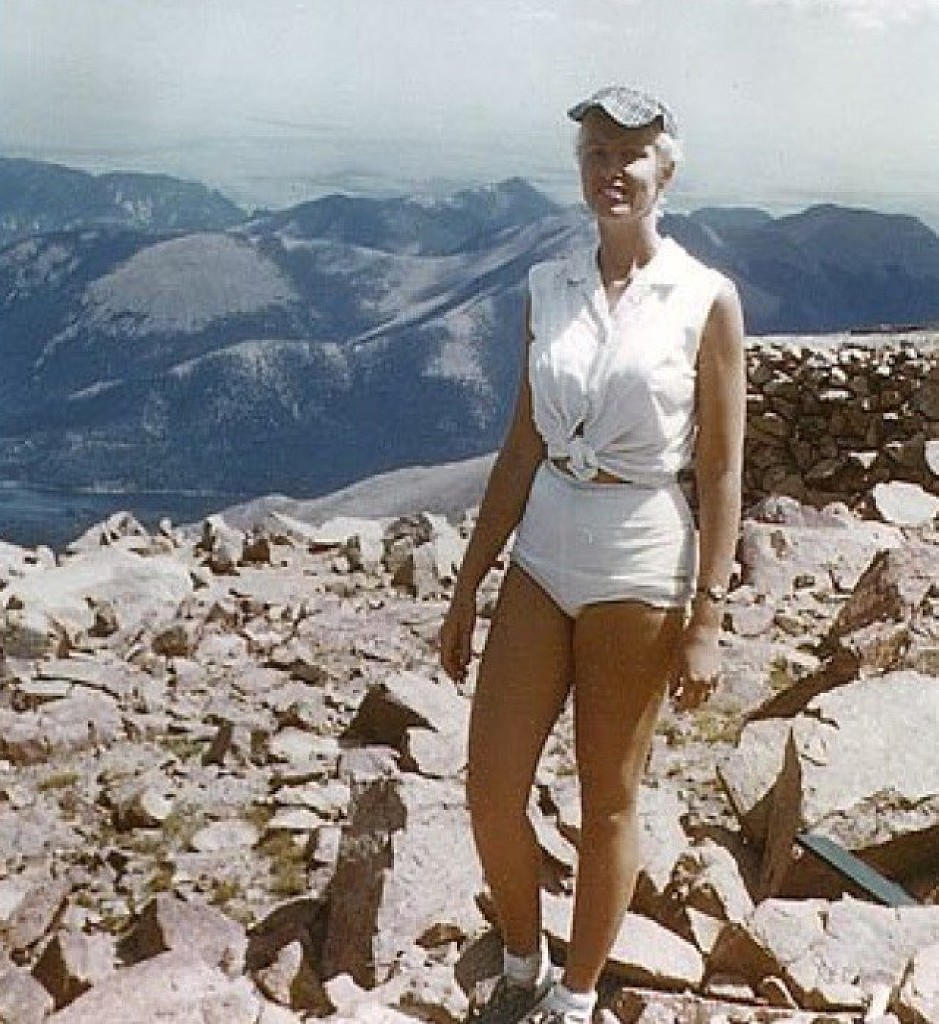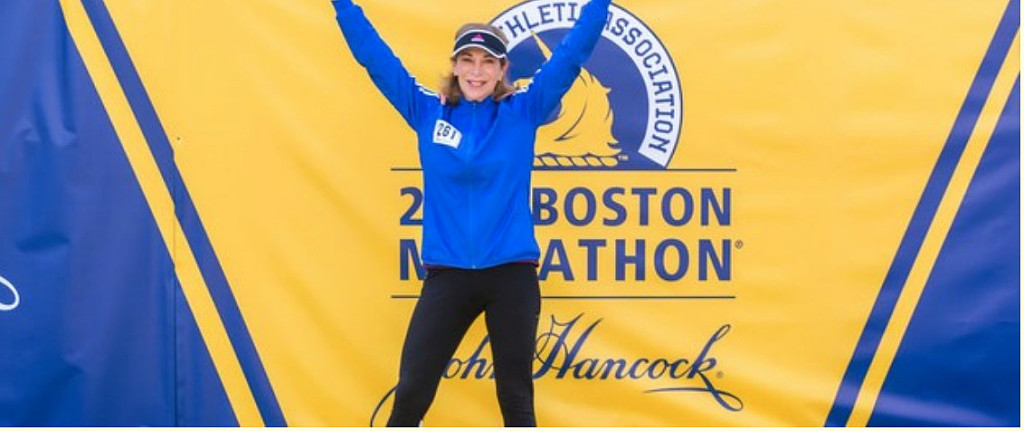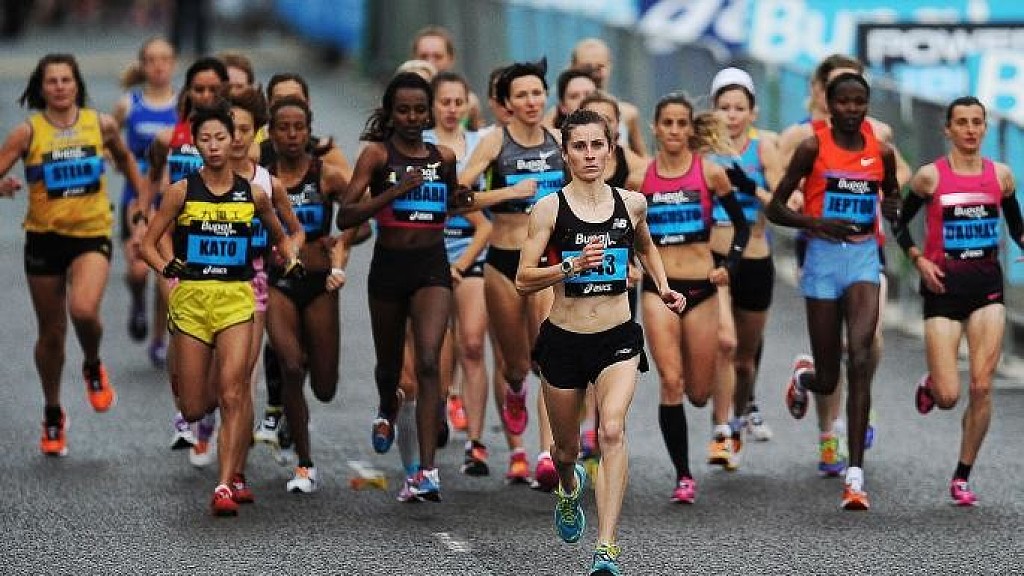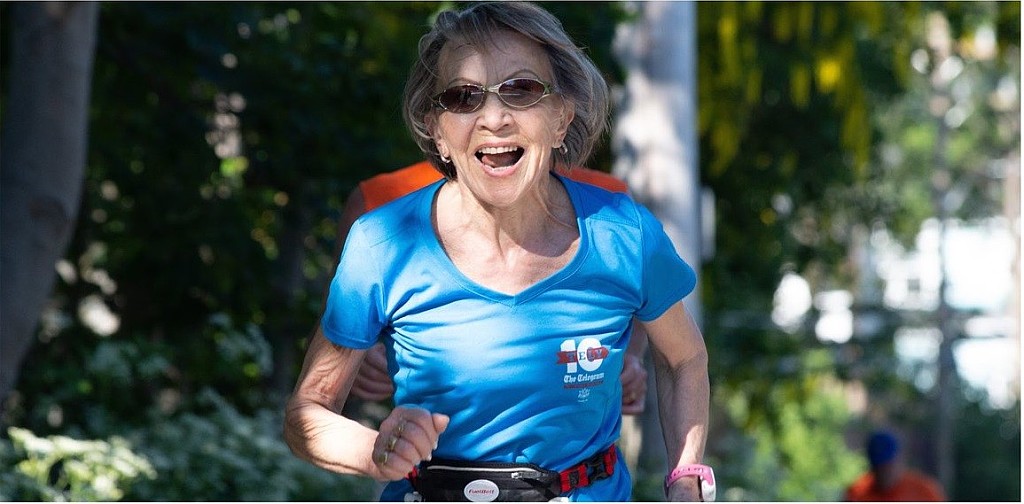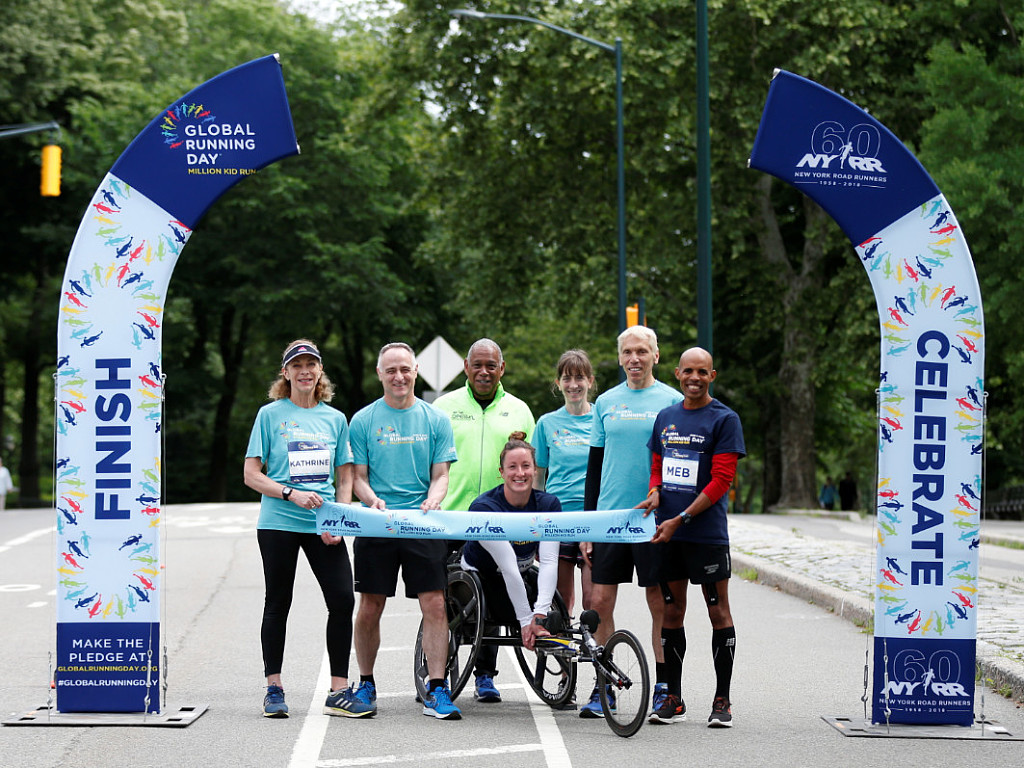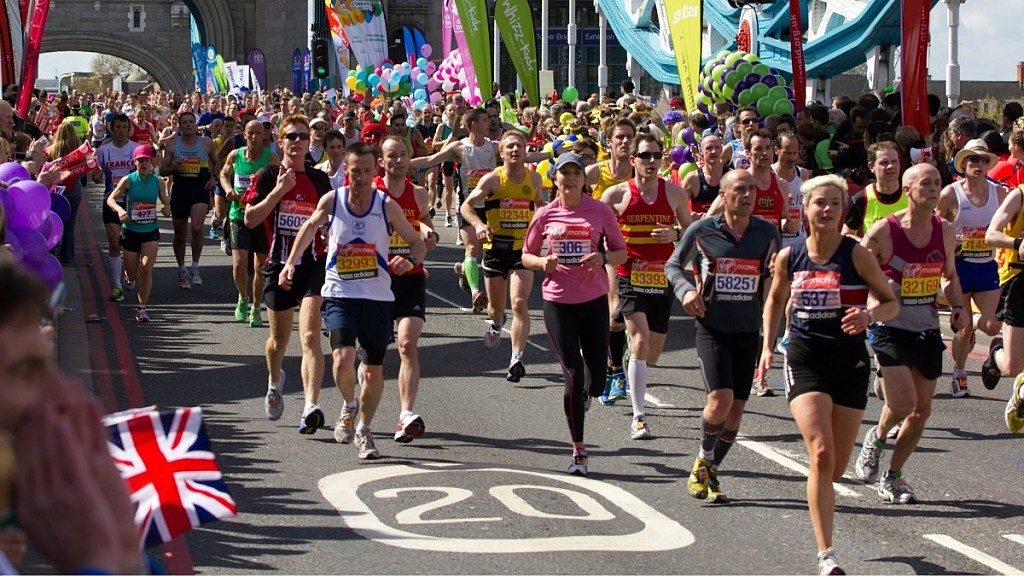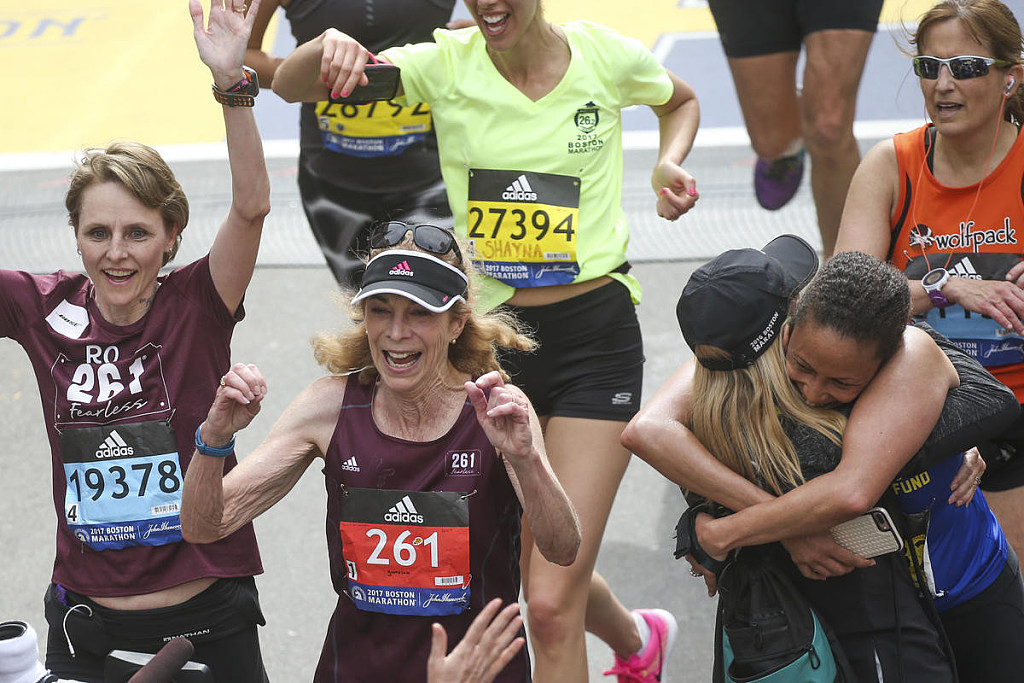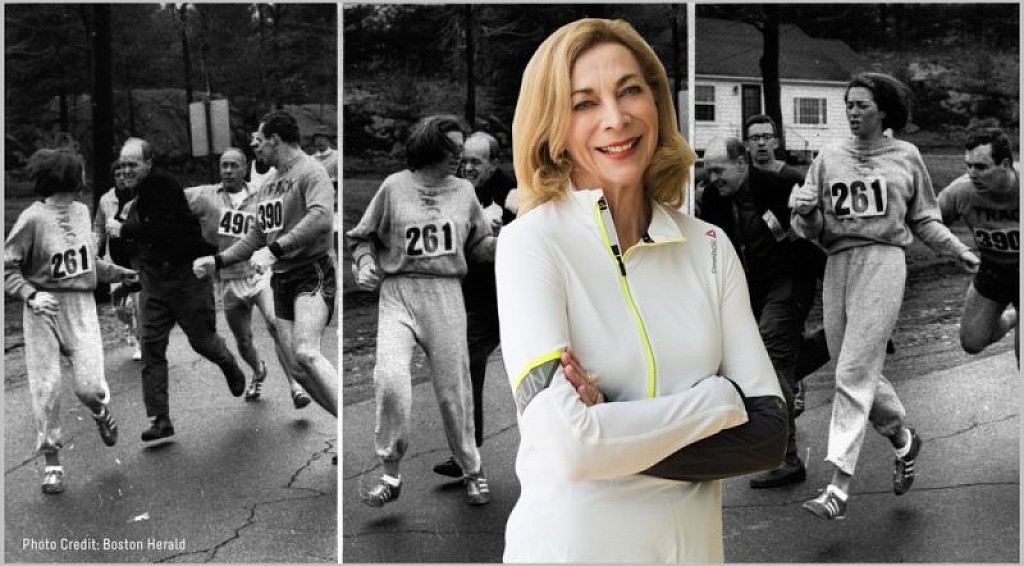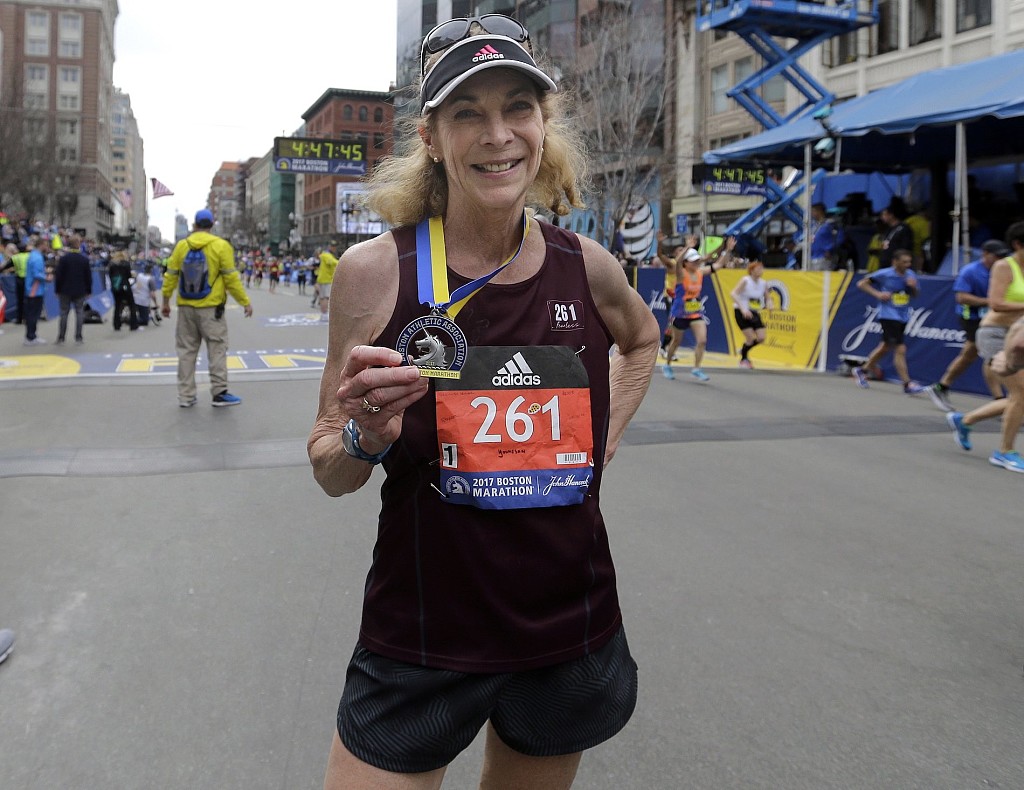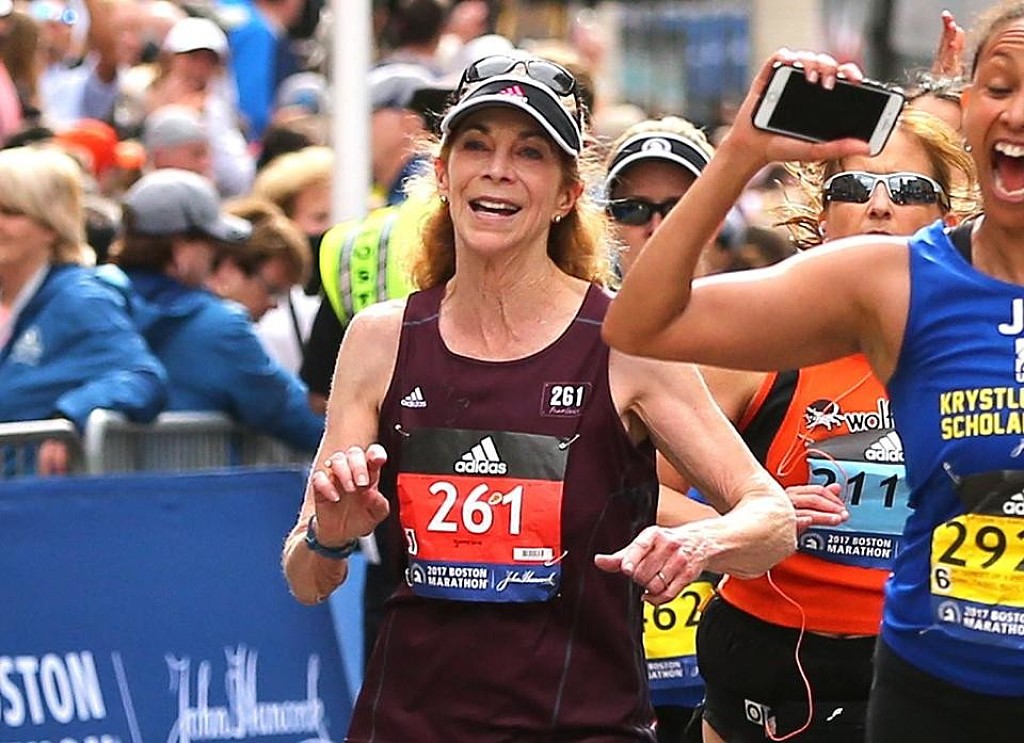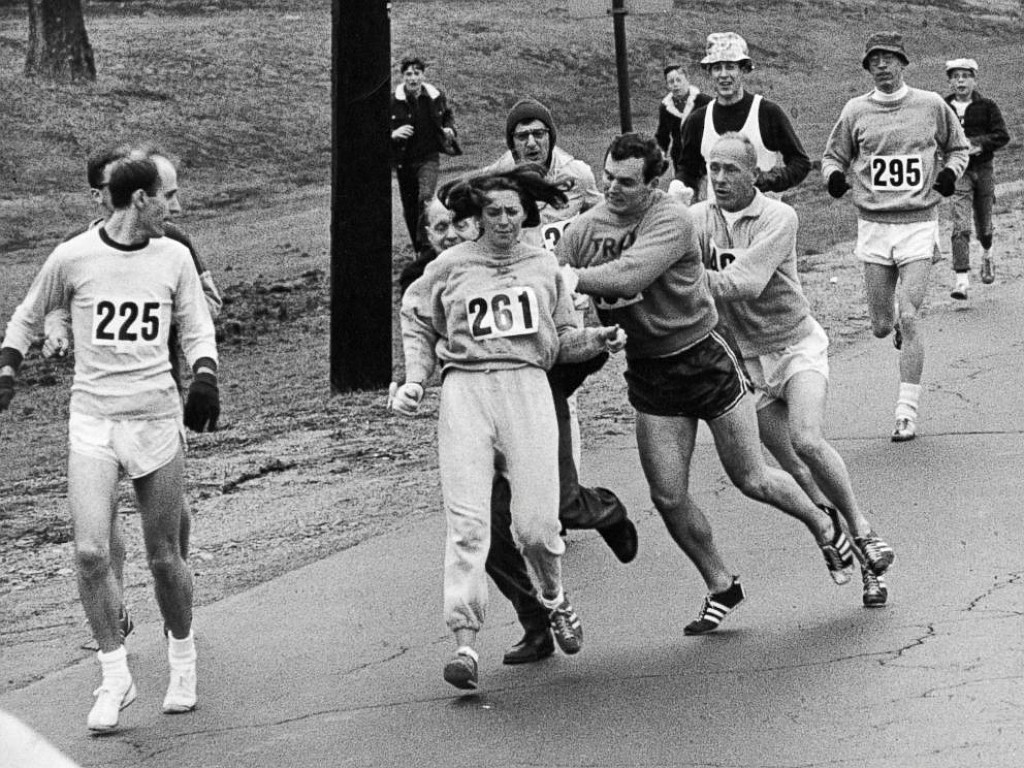Running News Daily
Running News Daily is edited by Bob Anderson. Send your news items to bob@mybestruns.com Advertising opportunities available. Train the Kenyan Way at KATA Kenya and Portugal owned and operated by Bob Anderson. Be sure to catch our movie A Long Run the movie KATA Running Camps and KATA Potato Farms - 31 now open in Kenya! https://kata.ke/
Index to Daily Posts · Sign Up For Updates · Run The World Feed
Articles tagged #Kathrine Switzer
Today's Running News
Nina Kuscsik, Trailblazing Running Pioneer, Passes Away
The global running community is mourning the loss of Nina Kuscsik, a legendary figure whose courage and determination helped redefine the landscape of women’s distance running. Kuscsik passed away at the age of 85, leaving behind a legacy that forever changed the sport.
Nina Kuscsik made history in 1972 when she became the first officially sanctioned female winner of the Boston Marathon, finishing with a time of 2:56:04. That victory wasn’t just a personal triumph—it was a breakthrough moment for women’s participation in marathon running, occurring in the same year Boston formally allowed female entrants.
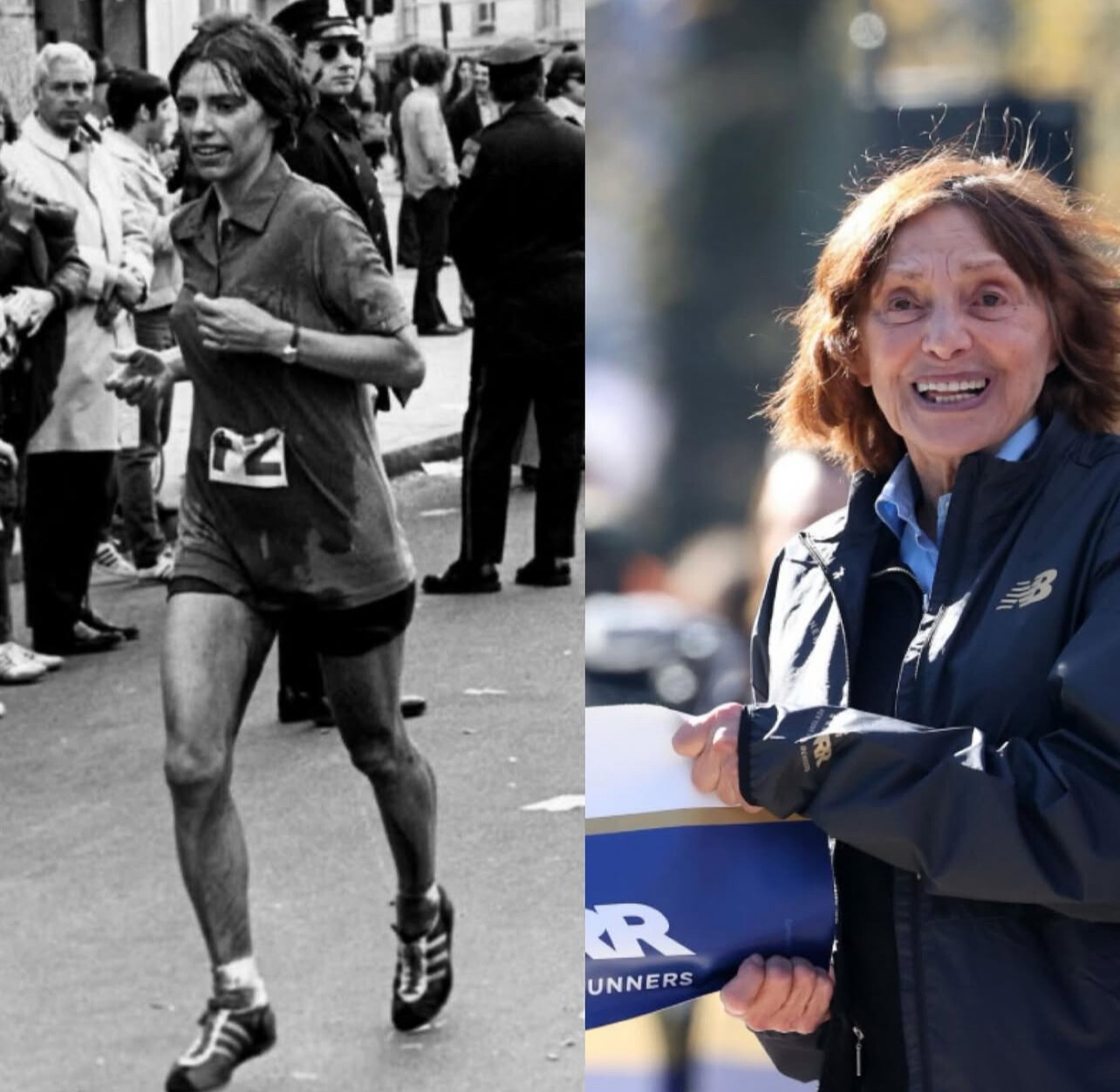
“I am saddened to hear of the passing of Nina Kuscsik,” says Bob Anderson, who was in Boston covering the race as the publisher of Runner’s World at the time. “She was indeed a pioneer. She won the first officially sanctioned women’s Boston Marathon in 1972, with a time of 2:56:04. Roberta Gibb had finished the Boston Marathon in 1966, 1967, and 1968 before Kathrine Switzer, unofficially won as a ‘field invader.’ Also, Sara Mae Berman unofficially completed the 1969 and 1970 Boston Marathons, and Kathrine Switzer officially registered and finished in 1970 after her 1967 incident, paving the way for future generations.”
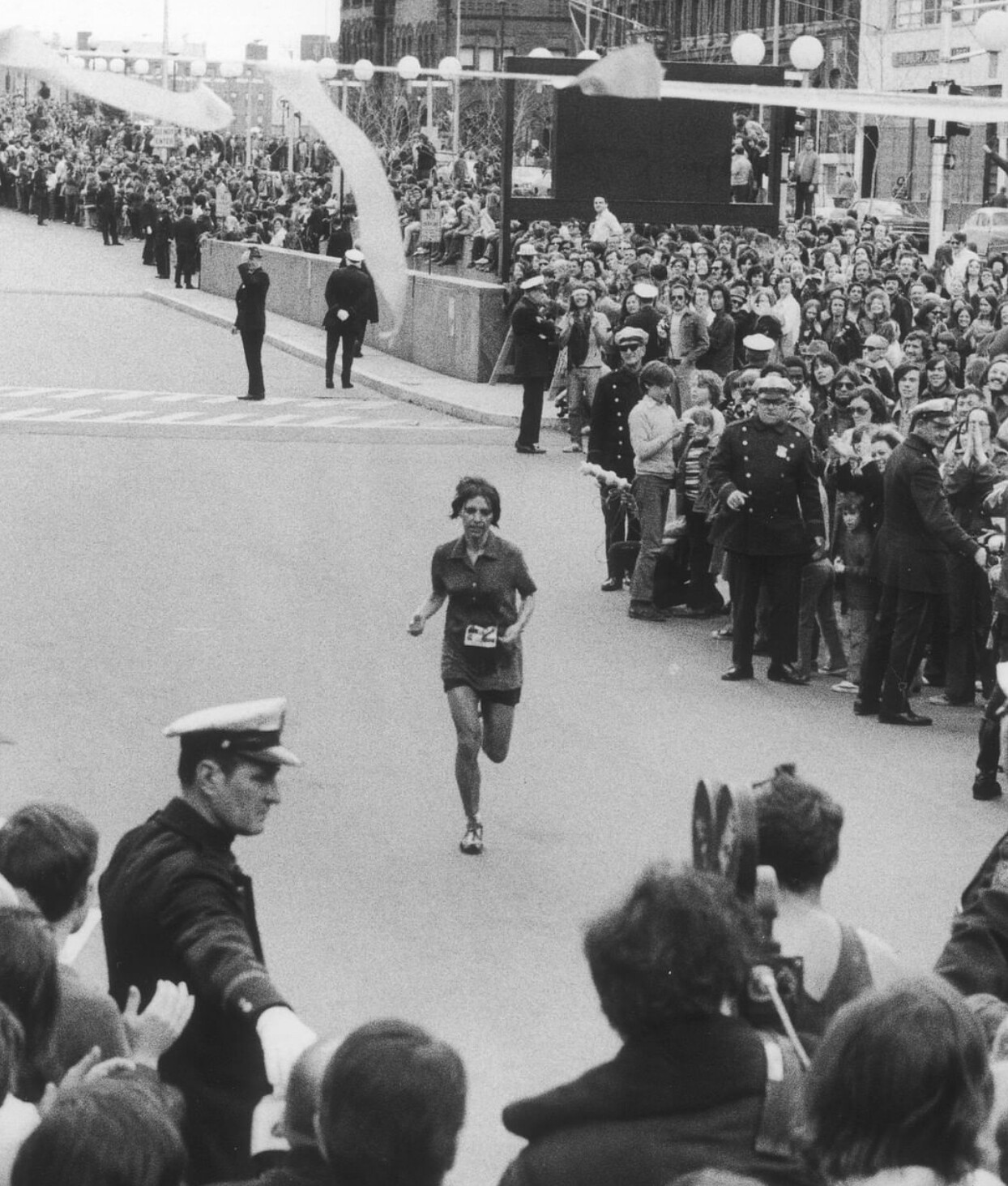
Following her groundbreaking Boston victory, Kuscsik continued to lead as an advocate for equality in sport. She was instrumental in pushing the Amateur Athletic Union (AAU) to change its policies and allow women to compete officially in longer races—efforts that contributed directly to the inclusion of the women’s marathon in the 1984 Olympics.
In 2012, Kuscsik was inducted into the New York Road Runners Hall of Fame, honored alongside fellow legend Miki Gorman. George Hirsch, then-chairman of NYRR, posted a tribute this week:
“So saddened at the loss of the warm, joyful Nina Kuscsik. She was a true pioneer in the world of running. Here I am welcoming Nina (left) and Miki Gorman into the New York Road Runners Hall of Fame in 2012. Nina will be missed by countless friends and admirers.”
Kuscsik didn’t just run races—she opened doors. Her influence extended well beyond finish lines, and her work laid the foundation for generations of women to compete on equal footing. As the world remembers Nina, we also celebrate the progress she helped create—step by step, mile by mile.
by Boris Baron
Login to leave a comment
The Legend of Cliff Young: The potato farmer who miraculously won a 544-mile marathon at age 61
At the start of the 1983 Sydney to Melbourne Ultramarathon, Cliff Young quickly fell behind and seemed on track to finish last. But while the others stopped to sleep, Young kept running at his tortoise pace for five days straight — and won.
In 1983, a 61-year-old Australian potato farmer entered the first ultramarathon between Sydney and Melbourne. Few bet on the farmer winning the race.
Not only did Cliff Young have a strange, slow running stride resembling a shuffle, but he’s said to have shown up to the race wearing work boots and overalls. During the event itself, rather than wearing sleek running clothes like the other competitors, Young donned a cotton t-shirt and long trousers, explaining that it was important to reduce his risks of skin cancer.
But Young had a secret weapon.
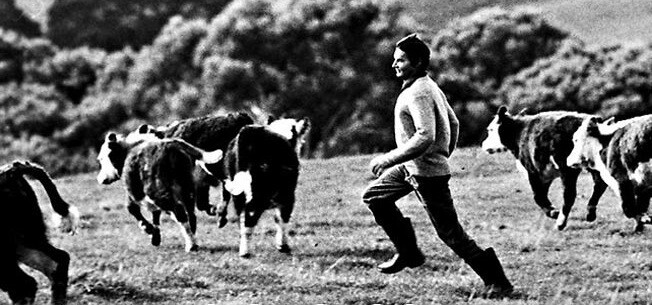
“I grew up on a farm where we couldn’t afford horses or tractors,” Young said in an interview, according to Adventure Journal. “And the whole time I was growing up, whenever the storms would roll in, I’d have to go out and round up the sheep. We had 2,000 sheep on 2,000 acres.”
Rounding up sheep gave Young a taste for long-distance running.
“Sometimes I would have to run those sheep for two or three days. It took a long time, but I’d always catch them. I believe I can run this race.”
In less than six days, Cliff Young ran 544 miles and won the ultramarathon — and broke the previous record by two whole days. His unorthodox style and surprising victory shocked the world. How did a 61-year-old farmer win one of the most challenging races in history?
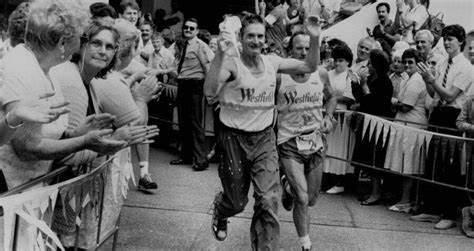
Cliff Young’s Real-Life Tortoise And The Hare Story
From the starting gun, it looked like Cliff Young would be at the back of the pack.
When the ultramarathoners left Sydney, Young quickly fell behind. With his slow signature shuffle, Young could barely match the pace of the other racers. But everything changed the first night of the race.
Although he’d fallen far behind the other runners at the end of the first day, by dawn on the second day Young had a massive lead. The Sydney Morning Herald reports that that was thanks to Young’s trainer, Wally Zeuschner. Known for his tough tactics, Zeuschner reportedly told one athlete that he could take a break when his eyes started bleeding.
In fact, Zeuschner’s eyes helped Cliff Young win the ultramarathon. Young turned in to sleep the first night and Zeuschner set the alarm. But because of his poor eyesight, Young’s trainer set the alarm for 2 a.m., several hours earlier than the planned wakeup call.
When the alarm rang, Young leaped up and began running. It took the groggy racer some time to realize that it was still dark.
Those hours of early morning running put Cliff Young at the head of the pack. And Young turned that accidental advantage into a strategy. Instead of stopping to sleep at night, he kept running.
“I’m just an old tortoise,” Young told reporters during the race, according to The Age. “I have to keep going to stay in front.”
Cliff Young also had an unusual running style. The press dubbed it the “Young-Shuffle,” because Young seemed to shuffle rather than run.
But the shuffle-step gave Young a significant advantage during an ultramarathon. By conserving his energy, Young was able to run longer without rest. His shuffle was also more aerodynamic than other running styles, according to the Sydney Morning Herald.
Not long after the ultramarathon, other runners adopted Young’s signature style. In fact, three subsequent winners of the Sydney to Melbourne ultramarathon took first place using the Young-Shuffle, according to Elite Feet.
Fans and reporters tracked Cliff Young as he inched closer and closer to Melbourne. During days and nights of running, someone asked Young what he planned to do first when he reached the finish line.
“I’m going to the toilet first,” Young declared.
As the days passed, Young remained at the head of the pack. At dawn on the sixth day, Melbourne was in sight. But it would take Young several more hours of running to officially win the race.
When he reached Melbourne, Young barely stopped for the cameras — they had to wait outside while he went to the toilet.
Sharing The Prize Money
In the final leg of the ultramarathon, runner Joe Record thought he might catch Young. As reported by The Age, Record, 41 years old, boasted, “I think I can catch old Cliff. He says he’s a tortoise but I think the old bastard is a hare in disguise.”
But Cliff Young carried the day, reaching Melbourne in the record time of 5 days, 15 hours.
At the end of the race, Cliff Young walked away with $10,000 in prize money. Instead of keeping it for himself, he gave away most of the money to his competitors.
“Joe Record and I had a pact before we ran that if either of us won we would split the prize money between us,” Young told the New Vegetarian and Natural Health magazine in a 1997 interview. “I forgot about Joe and started giving it away left, right and center. I gave $4,000 away to the other runners.”
Luckily, Record didn’t mind when Young handed him $3,000.
Later, when asked about the highlight of the ultramarathon, Young said, “The prize money of ten thousand dollars! Now that’s a helluva lot of potatoes.”
The Legacy Of Cliff Young
When he won the first Sydney to Melbourne ultramarathon, Cliff Young became a hero in Australia. Suddenly, everyone wanted to know about the potato farmer who ran 544 miles.
Reporters pestered Young to learn more about his diet. An avid vegetarian, Young explained how eating grains and fruit powered his runs. “The secret to a long life is preserved pears and jogging,” Young told the Sydney Morning Herald. “It sure beats having a drink in the pub.”
Young also had advice for fellow older runners.
“Get out of your wheelchairs and start doing a few laps, if you can,” he told the New Vegetarian and Natural Health magazine. “If you don’t get any exercise your joints start seizing up like a rusty engine.”
Young never retired from running. He returned to the Sydney to Melbourne ultramarathon the next year, 1984, and came in 7th. In his 70s, Young attempted to run around all of Australia. He only stopped when his support crew member fell ill. In 2003, Cliff Young died at the age of 81.
Cliff Young inspired generations of runners. So did Kathrine Switzer, the first woman to run the Boston Marathon. And don’t forget to check out more uplifting stories from history.
by Genevieve Carlton, Maggie Donahue
Login to leave a comment
Why women-only run clubs are dominating the scene
Amid 2024’s run-mania, with races frequently selling out across Canada, female-exclusive run clubs are gaining momentum. In honour of Sexual Assault Awareness Month, we’re discussing how the sport has evolved, with women’s run clubs paving the way for female runners to feel seen, safe and empowered.
Run clubs are in
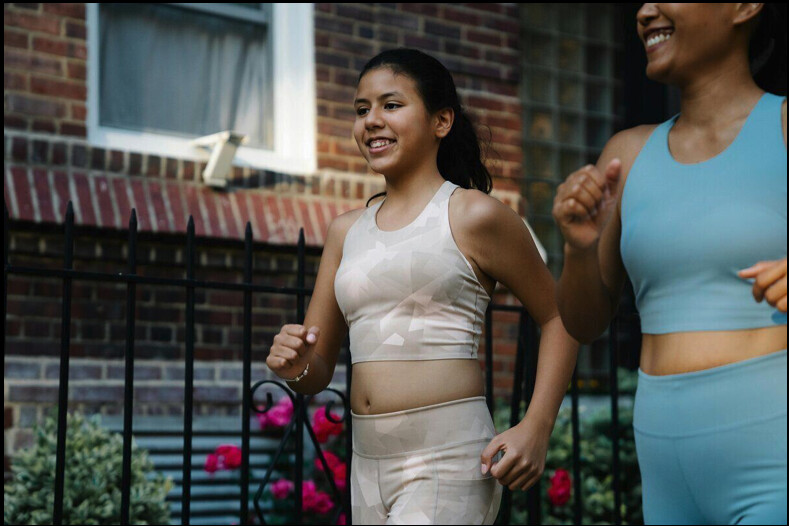

Women’s running has been on the rise since the ’70s, when recreational jogging first became popular. However, the recent surge in gender-exclusive running clubs is a significant development. According to Reddit, this is not just a passing trend. Women’s run clubs have become especially attractive to women who’ve experienced gender-based discrimination or sexual harassment in mixed-gender clubs.“As a woman that has participated in many mixed-company athletic pursuits, [I feel that] men often react poorly to women being skilled or successful in a sport, in addition to the usual perils of being harassed or bothered,” said one Reddit user. Another pointed out that “this obnoxious masculinity is woven into the history of run clubs.”
Confronting patriarchy
Running, like many other sports, was designed by men for men. Women in France began challenging this norm in 1903 with a race in Paris known as “The Race of the Midinettes” (a 12-km walking race for seamstresses or assistants in the Paris fashion industry). While the French press called these midinettes derogatory names like “streetwalkers” (sex workers), feminist scholars such as Florys Castan-Vicenet (in her 2023 report in Front Sports Act Living) strongly argue otherwise, considering them pioneers. Amsterdam’s 1928 Olympic Games marked a revolutionary moment in women’s running. For the first time, female runners were invited to participate in the 800m. This feat was short-lived however, as the event was immediately banned, and would remain so until 1960. In 1967, Kathrine Switzer became the first woman to run the Boston Marathon with an official bib (though she was physically assaulted by the race manager for doing so).
“Female runners were spearheading a revolution, changing common beliefs about the limits of women’s physical endurance,” shared Louise Wood in her story “Into the Boys’ Club”. By the turn of the 21st century, feminist movements were changing the landscape of women’s running.
Women supporting women
During this time, feminist thinkers like Sara Ahmed confronted topics like gender inequity and female objectification that commonly deterred women from joining the sport. “What I hate is, for example when someone comments on your run,” wrote Ahmed in her 2000 novel Strange Encounters. “They mean it as a compliment, but for me, it just emphasizes, ‘I don’t expect this from someone who looks like you.'” As female runners and feminists continued to reshape the narrative, gender-exclusive run clubs emerged, reflecting a significant rise in women’s participation in running. A report by International Journal of Environmental Research and Public Health says between 1953 and 2017, sex differences decreased dramatically in 100-mile ultras worldwide. By 2020, according to RunRpeat, 57 per cent of Canadian runners and 23 per cent of ultramarathon participants identified as female, marking a significant increase.
Strength in numbers
Today, women are choosing to forgo late nights on the town for a good night’s sleep and morning run club with the girls. These clubs are not just about running; they are about women sprinting together through life’s challenges, forming strong bonds and a sense of community that extends beyond the club. Women-only run clubs across Canada, such as Switzer’s 261 Fearless (which has chapters in 14 countries; the Canadian chapter is in Toronto), and runs celebrating women, like Lululemon’s Further 6-day ultra (based in Vancouver), are surging in popularity. Still, in a 2023 study by Adidas, it was reported that 38 per cent of women have experienced physical or verbal harassment while running, with more than half receiving unwanted attention (56 per cent), sexist comments or unwanted sexual attention (55 per cent). According to a 2024 study by Asics, a startling number of Canadian women have cited “lack of safe spaces” as a barrier to running.
Chix Run (located in Toronto and Calgary) has been dedicated to offering women this safe space. Since founding the club four years ago, Amanda Richardson, 42, has observed a significant improvement in the sport’s female representation. “Toronto run clubs used to be focused just on performance, but now it’s all about community, where women are out there connecting on topics like motherhood, marriage or their love of coffee—a post-run highlight.”
The club strives to take the emphasis off competing and winning to make running more about having fun, being active with other women and creating friendships. “Many people have noticed running is advertised as a place to date,” Richardson laughs. “Turning up to a running club where you know it’s all women there, free to say what you want to say, be who you want to be, they don’t have to worry about how they look; there is no hidden agenda.”
Girlhood and good vibes
According to Strava, women under 25 are the fastest-growing community using the app today, promising a more balanced and inclusive future for running. The Girls run the 6ix run club has quickly become a regular hotspot for young female runners in Toronto. The club was founded in December by Jill Amirault, 26, and Claire Milburn, 23, and already has 5,000 Instagram followers.“I think for someone new to running, it can be really intimidating to go to a gender-diverse run club, because men are typically competitive,” says Amirault. “Some women need that safe space, similar to a gym with a ‘women only’ section.” The club embarks once a week on a 6-km route through the city, in which its members can be found swapping stories about dating misadventures and connecting about girlhood. For a long time, there was a lack of female-exclusive run clubs in Toronto, says Amirault.
“Now, with more female run clubs and influencers, people are certainly beginning to notice that this is an environment where women can succeed,” says Amirault. “Pace doesn’t matter; what’s important is that we motivate, connect and celebrate our womanhood.”
by Running Magazine
Login to leave a comment
Who is Sisay Lemma, the winner of the 2024 Boston Marathon?
Sisay Lemma was born in 1990 in the Oromia Region of Ethiopia. He is the winner of the 2024 Boston Marathon, with a time of 2:06:17.
Sisay Lemma is an Ethiopian long-distance runner who specializes in the marathon. He is the winner of the 2024 Boston Marathon, with a time of 2:06:17.
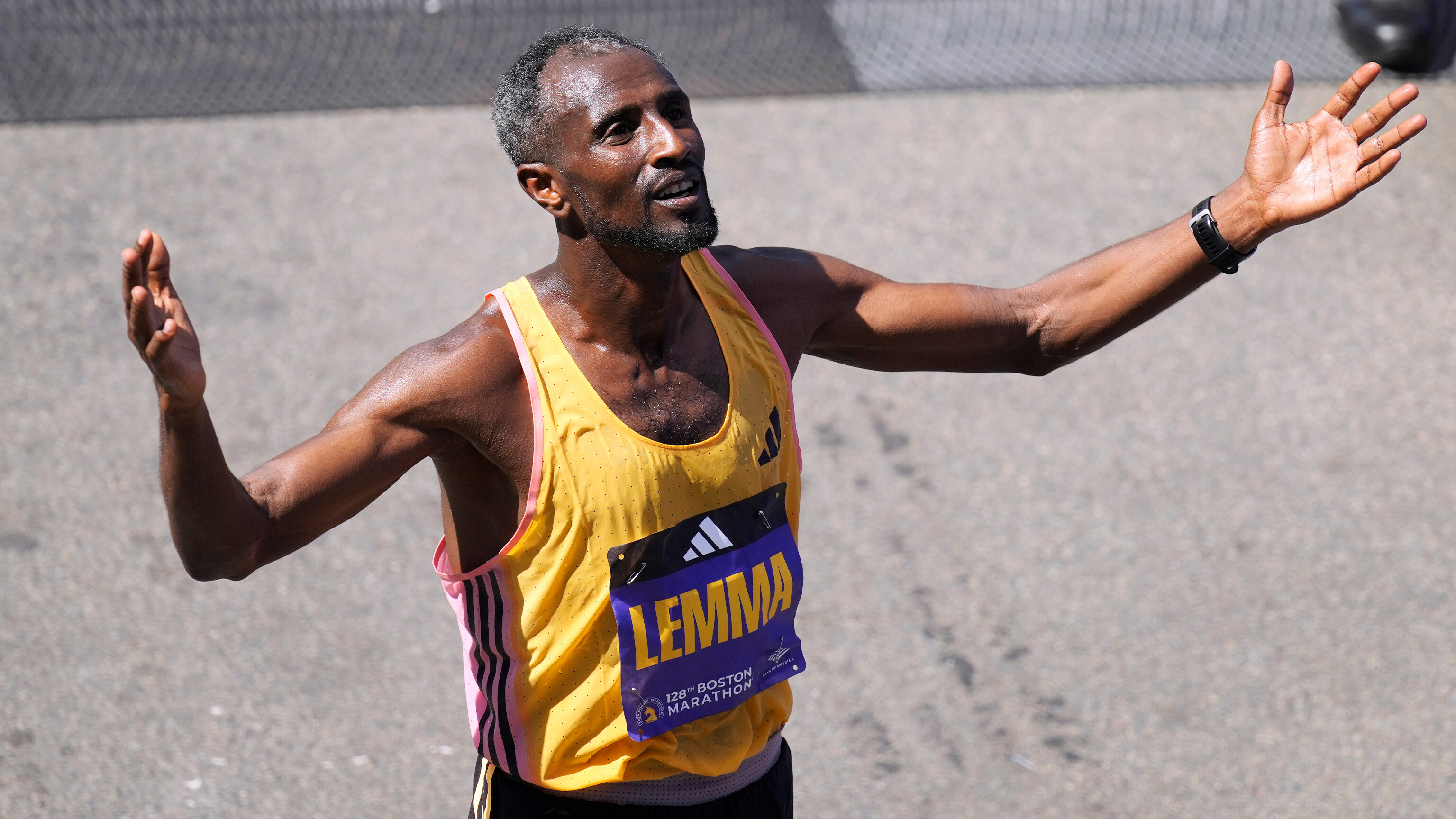
This was his first victory at the Boston Marathon, but he has previously won other major marathons, including the 2021 London Marathon and the 2023 Valencia Marathon. Lemma is also a three-time bronze medalist at the World Athletics Championships.
Lemma was born in 1990 in the Oromia Region of Ethiopia. He began running at a young age, and quickly showed promise. He made his international debut in 2013, and won his first major marathon in 2018, when he won the Rotterdam Marathon.
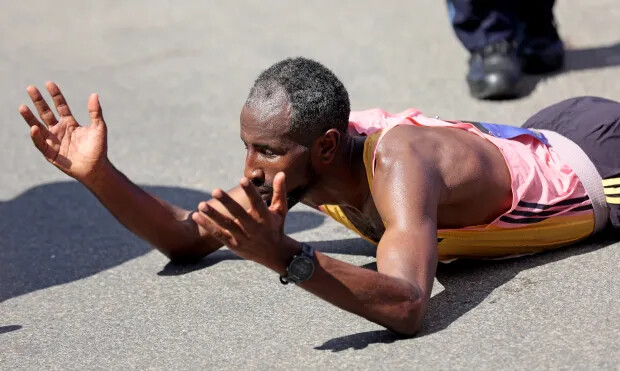
Lemma is known for his strong finishing kick. He has often won races by coming from behind in the final stages. He is also a very consistent runner, and has never finished a marathon outside of the top 10.
Lemma is a rising star in the world of marathon running. He is still relatively young, and has many years of good running ahead of him. He is a strong contender for medals at the major marathons, and the Olympic Games.
Here are some of Sisay Lemma’s career highlights:
Winner of the 2024 Boston Marathon
Winner of the 2021 London Marathon
Winner of the 2023 Valencia Marathon
Three-time bronze medalist at the World Athletics Championships
Winner of the 2018 Rotterdam Marathon
Personal best of 2:01:48 for the marathon
The Boston Marathon: The King of Marathons
The Boston Marathon is an annual foot race held in Boston, Massachusetts, United States. It is considered to be the most prestigious marathon in the world, and is one of the world’s oldest continuously run sporting events. The race is traditionally held on the third Monday in April, and it follows a 26.2-mile (42.2 km) route through the streets of Boston and the surrounding towns.
The Boston Marathon was first held in 1897, and it was inspired by the success of the marathon race at the 1896 Summer Olympics in Athens, Greece. The race was originally intended to be a qualifier for the 1897 Summer Olympics, but it quickly became a popular event in its own right. The Boston Marathon has been held every year since 1918, with the only exceptions being in 1918 due to World War I, and in 2020 due to the COVID-19 pandemic.
The Boston Marathon is known for its challenging course, which features several hills, including the infamous Heartbreak Hill at mile 20. The race is also known for its large and enthusiastic crowds, which line the streets throughout the course to cheer on the runners.
The Boston Marathon has been won by some of the greatest marathon runners in history, including Dick Hoyt, Bill Rodgers, Joan Benoit Samuelson, and Kathrine Switzer. The race has also been the site of several world records, including the first sub-2:00 marathon in 1978 by Geoffrey Hirt.
The Boston Marathon is more than just a race; it is a tradition and an institution. The race is a symbol of Boston’s resilience and spirit, and it is a source of pride for the city’s residents. The Boston Marathon is also a major fundraiser for charity, and it has raised millions of dollars for local charities over the years.
by Laura Islas
Login to leave a comment
Boston Marathon
Among the nation’s oldest athletic clubs, the B.A.A. was established in 1887, and, in 1896, more than half of the U.S. Olympic Team at the first modern games was composed of B.A.A. club members. The Olympic Games provided the inspiration for the first Boston Marathon, which culminated the B.A.A. Games on April 19, 1897. John J. McDermott emerged from a...
more...USA Record For Hillary Bor Yields $59,000 Payday At Cherry Blossom 10 Mile
The 50th edition of the Credit Union Cherry Blossom 10 Mile here this morning ended with a bang when Olympic steeplechaser Hillary Bor not only won the men’s division of the USATF 10 Mile Championships, but also claimed a $50,000 bonus for breaking Greg Meyer’s 40-year-old national record by just two seconds.
Bor, 33, who represents Hoka One One and wore bib 13, clocked 46:11, three seconds behind overall race champion Tsegay Kidanu of Ethiopia. Including his prize money, Bor collected a total of $59,000.
“I came here to break the record and the weather wasn’t going to stop me,” Bor told Race Results Weekly, referring to the unusually cold temperatures and strong winds. “It’s something I’ve been working for since October last year.”
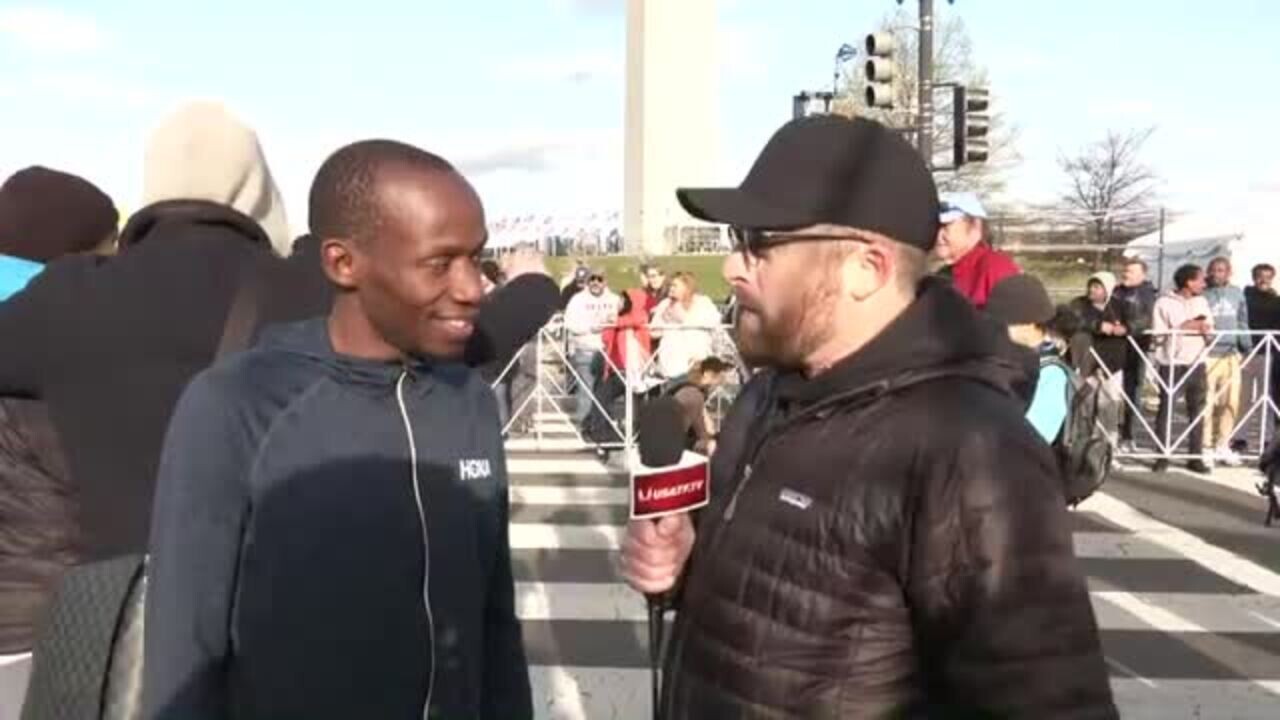
Last October Bor won the USATF 10 Mile Championships in St. Paul, Minn. He ran 46:06 in that race, a championships and course record, but that course was 31 meters downhill and not eligible for record setting. However, Bor and coach Scott Simmons realized that breaking Meyer’s mark was within his capabilities, especially because a faster time run by two-time Olympic medalist, Galen Rupp, was never ratified by USATF. Rupp ran a 10 mile split of 45:54 at the Row River Half-Marathon in Dorena, Ore., in October, 2020, but the paperwork for verifying that record was never completed or approved.
“My coach knew I was in really good shape to run 45 (minutes),” Bor said. “But, the weather’s not good today. The last two miles was just the wind on our face the whole time.”
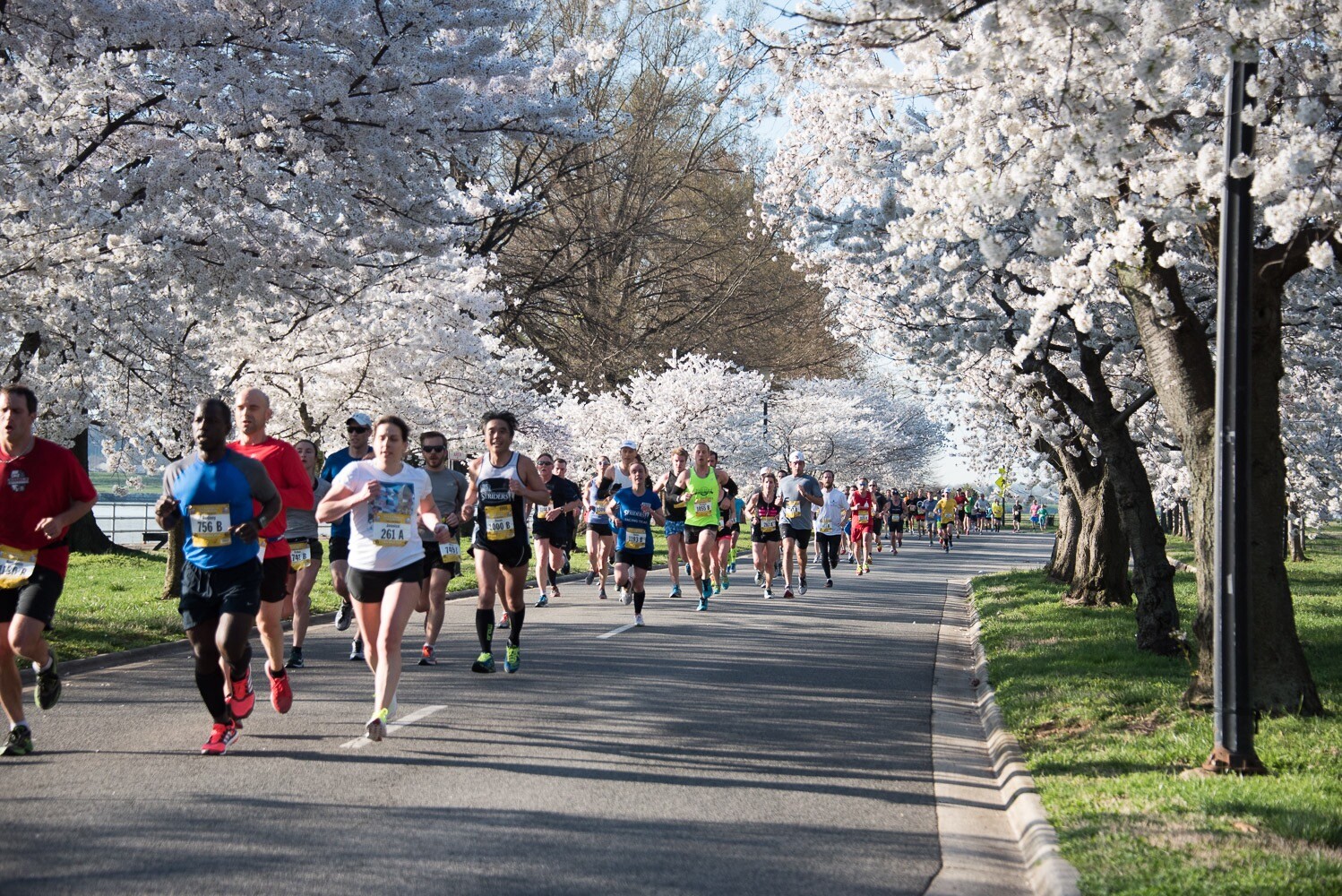
Indeed, it was in those last two miles that Bor and Kidanu did their best to push each other. Kidanu, who represents Asics, was just trying to keep up the pressure on Bor.
“The wind was very strong and it made it very tough,” Kidanu told Race Results Weekly through a translator. He continued: “At the beginning there were a lot of us, but later only a few of us. But the wind made it very difficult. Two of us were able to prevail and we battled one another. In the end, I was able to win.”
In the final sprint to the line, Bor wasn’t really sure where he stood against the clock. The wind was so strong that the 9-mile marker blew down, despite being weighted with sandbags. Also, Bor started the race without his watch.
“Today, I didn’t have my watch so that was not really good because I didn’t know the splits,” Bor said, looking slightly embarrassed. “When I saw the split at 8 miles I knew I needed to run 4:45, but the wind was too much. I just put my head down and just grind, and grind, and grind.”
Biya Simbassa (Under Armour) finished a distant third in 47:09 and finished second in the national championships division. Kenya’s Charles Langat (Asics) was fourth in 47:25, and Jacob Thomson (Under Armour) took fifth –and third in the national championships– in 47:27.
Bor, who will return to the steeplechase during the track season, said that today’s race was all about self-belief.
“It shows if you put something in your head you can accomplish it,” he said.
The women’s competition was a tale of two races.
In the overall competition, Uganda’s Sarah Chelangat (Nike) surged away from the field just before the five mile mark. Her six-mile split was a snappy 4:56, and that put her 22 seconds ahead at that point. Despite running directly into the wind (and alone) in the final miles, she was able to extend her lead to 30 seconds by the ninth mile, and 33 seconds by the finish. Her winning time of 52:04 was excellent given the conditions, but she fell well short of the 51:23 world best for an all-women’s race which would have given her a share of the race’s $50,000 bonus pool.
Behind Chelangat, there was a heated battle for both second place overall and the USATF title. In the ninth mile, Emma Grace Hurley (Atlanta Track Club Elite), Sara Hall (Asics), Nell Rojas (Nike), and Molly Grabill (Unattached) separated themselves from the rest of the pack, all of them trying for the national title. As they crested the final hill before the course turns slightly downhill to the finish line, Hall and Rojas were locked in a sprint for the win. Hall, who is running the Boston Marathon in 15 days, got the best of Rojas, 52:37 to 52:38.
Hall, who turns 40 on April 15, almost skipped today’s race. She just returned from a family trip to Ethiopia where her training didn’t go well because she got sick.
“Honestly, I feel so thankful for today because four days ago I wasn’t going to race,” Hall told Race Results Weekly. “I had COVID last week and training was just so rough. I had a fever. I had two different viruses back to back.”
But like Bor, Hall had the power of self-belief working for her today.
“I think my whole career I’ve just chosen to show up,” Hall said, wrapped in an American flag. “So, just today I decided to show up and I’m really glad I did, especially with Asics sponsoring this event.”
While the wind –which Rojas called “nasty”– was a challenge, Hall saw it as an opportunity to prepare mentally for Boston where conditions can be difficult, too. She thought about the 2018 race where temperatures were just above freezing and athletes had to run through a driving rain storm.
“I was thinking about Boston because, you know, 2018 with that headwind and the storm,” Hall said. “I have Boston in two weeks, so this is just a good time to practice.
Like Bor, Hall had thought about trying for a share in the record bonus pool, but discarded that idea when she felt the power of the wind.
“Normally, I would have wanted to go for the record out here, but with the significant wind I didn’t know if that was going to be in the cards, so I just chose to compete,” she said. “I think this was a great opportunity to do that with Boston coming up.”
With her win here today, Hall has won a total of 12 national titles, four at 10 miles (2017, 2018, 2019, and 2023).
Hurley finished fourth (third American) in 52:41, and Grabill got fifth (fourth American) in 52:42. Defending champion Susanna Sullivan, who led most of the first half of the race, finished seventh (sixth American) in 53:25. She’s running the TCS London Marathon in three weeks and has been doing heavy mileage.
“I’m ready to run a marathon,” she said, smiling, as she changed into warm clothes in the athlete recovery area.
Some 16,000 runners competed today after about 6,000 ran the companion 5-K yesterday (which took place in the rain). Several former race champions were on hand to celebrate the 50th edition, including Kathrine Switzer (1973), Greg Meyer (1983), Eleanor Simonsick (1982 and 1983), and Bill Rodgers (1978 through 1981). Race director Phil Stewart reflected on how the race had endured for so many years and through so many cultural and political changes.
“Through Watergate, gas crises, the fall of the Berlin Wall, the invention of the internet, the first and second Iraq Wars, the 2008 financial crisis, America’s first Black President, two impeachments, an insurrection and the War in Ukraine, runners have returned each spring for what is known as the ‘Runners Rite of Spring,'” Stewart said at last night’s pre-race dinner.
by David Monti
Login to leave a comment
Cherry Blossom Ten Mile Run
The Credit Union Cherry Blossom is known as "The Runner's Rite of Spring" in the Nation's Capital. The staging area for the event is on the Washington Monument Grounds, and the course passes in sight of all of the major Washington, DC Memorials. The event serves as a fundraiser for the Children's Miracle Network Hospitals, a consortium of 170 premier...
more...Defending Champions Return to Run 50th Anniversary Credit Union Cherry Blossom 10 Mile
Organizers of the 50th annual Credit Union Cherry Blossom 10 Mile (CUCB) announced today the first of two rounds of news about this year’s invited field; look for the second announcement to come out on Wednesday, March 29. Today’s announcement features past champions and top-5 finishers expected to toe the respective men’s and women’s starting lines on Sunday, April 2. (The elite women will start first, at 7:18 a.m., followed by the men and the masses at 7:30 a.m.)
Three past champions are part of the women’s elite field: Susanna Sullivan, last year’s women’s champion from Reston, VA; 2021 champion Nell Rojas from Boulder, CO; and 2013 champion Caroline Rotich, a Kenyan who lives in Colorado Springs, CO. As part of the 50th celebration two additional former champions are entered: Colleen De Reuck from Boulder, CO, who won the race in 1998 and still holds the women’s course record of 51:16; and 1973 winner Kathrine Switzer.
Other top women finishers from past 10 Miles include: Carrie Verdon from Boulder, CO, who placed second last year; Paige (Stoner) Wood, last year’s third place finisher from Flagstaff, AZ; Sara Hall, also from Flagstaff, who placed fourth in 2014; and Flagstaff’s Diane Nukuri, who was fifth in 2018.
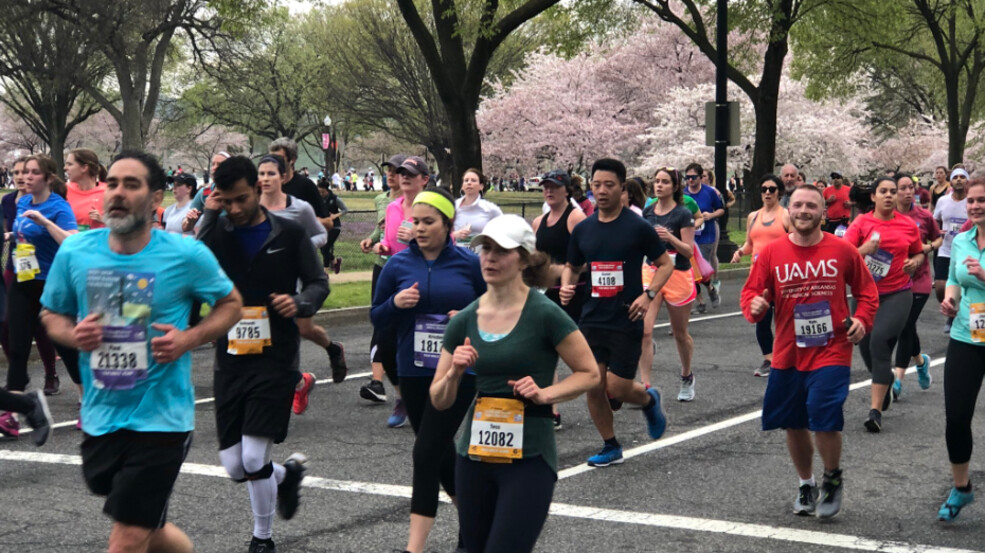
In the men’s race, the top-three finishers from 2022 return. All hailing from Kenya, they include champion Nicholas Kosimbei, second-place runner Wilfred Kimitei, and third-place finisher Shadrack Kimining. They’ll be joined on the starting line by second-place finisher in 2021 Abbabiya Simbassa from Flagstaff, AZ. Returning for the 50th running and starting a little bit farther back in the pack will be Bill Rodgers, from Boxborough, MA, who won the race four consecutive times between 1978 and 1981; placed second in 1982 and third in 1983; and has run CUCB a total of 22 times. Greg Meyer, whose American record of 46:13 still stands 40 years later, will be present for the 50th celebration, and will be holding the tape for the first American male finisher, who will be in hot pursuit of Greg’s mark — there’s a $50,000 shared bonus on the line for any American Records or World Bests set at the event.*
“It’s always a vote of confidence in the reputation of the event to see a large number of top finishers from previous years coming back. I am excited about this year’s set of repeaters, both past and present. This is another factor that will make our 50th anniversary special,” said Event Director Phil Stewart.
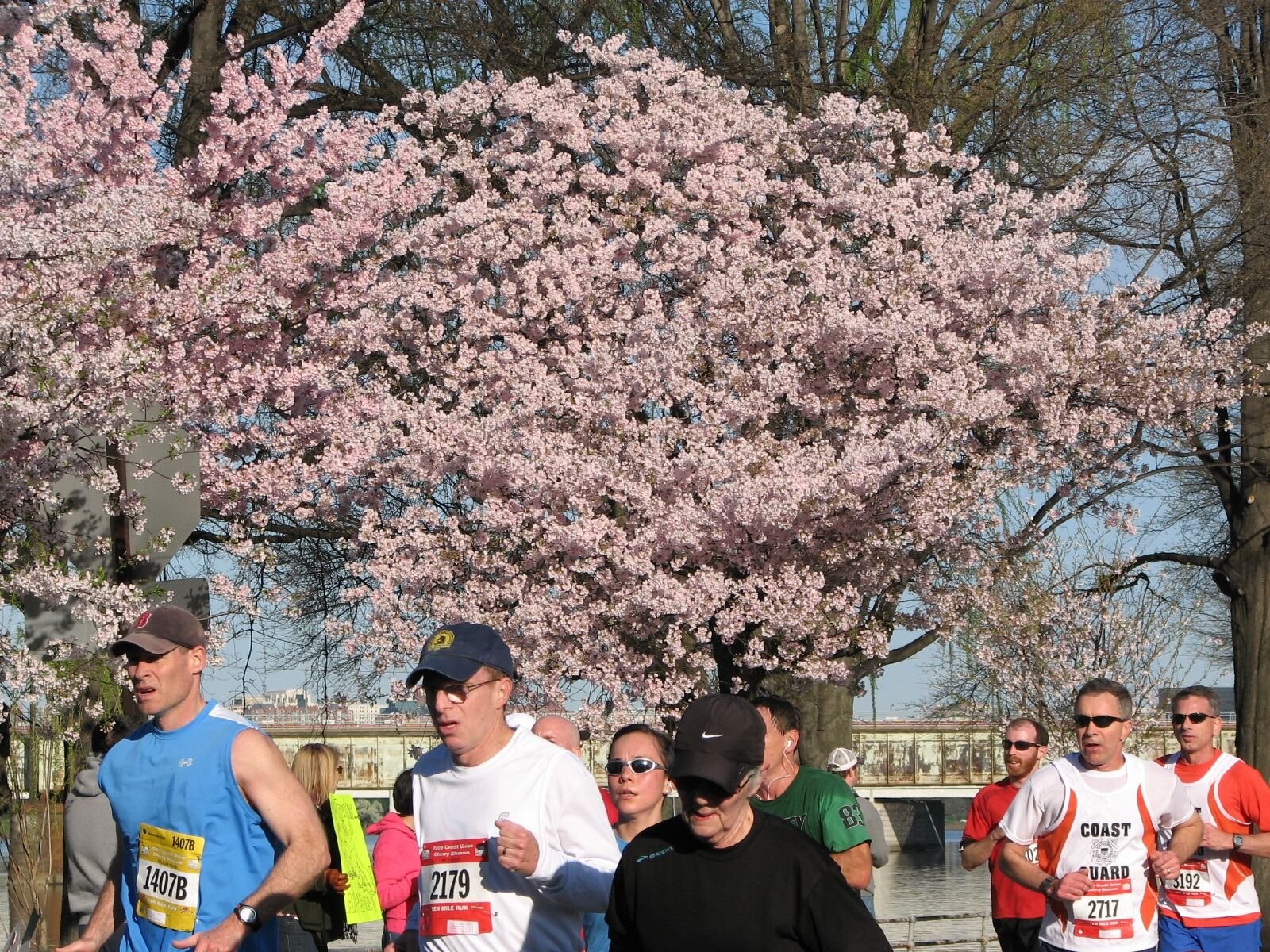
This year, international elite runners will be competing for $40,000 in prize money. The prize purse for Americans totals $25,000, and American runners placing in the top-10 overall are eligible to receive both open and American-only prize money. There is an additional $6,000 in RRCA RunPro Alumni Development Awards — runners eligible for the RRCA awards can also collect top-10 open and/or top-10 American payouts.
There is also a time-based set of bonus payments on offer for fast times:
• $50,000 to be shared by any runners setting a World Best or American Record*• Time incentives of $1,000 for the 1st male to run sub-46 minutes and 1st female to run sub-52 minutes, with an additional $750 on offer should a second male and/or female achieve those same sub-46 and sub-52 minute milestones.
The 10 Mile will serve as the USATF 10 Mile Championships, the RRCA National 10 Mile Championships, and the 2022-2023 Professional Road Racing Organization (PRRO) Circuit Championship.
Winners of the individual 2022-2023 PRRO Circuit events will be eligible for the $10,000 PRRO Super Bonus by winning the PRRO Championship (the bonus is split if an eligible male and female win the Championship). Susanna Sullivan and Nicholas Kosimbei are eligible for the PRRO Super Bonus. Any non-eligible winner of the PRRO Championship Super Bonus will earn $2500.
* If World Best times and American Records for men and women are set by the winners at the event (e.g. four records set), the $50,000 record bonus would be split into four $12,500 shares. If only one World or American record is set for either men or women, the athlete setting the record would get the full $50,000. If an American sets an American record and no other World or American records are set, he or she would receive the entire $50,000 as well. Currently, the times to beat are as follows:• Haile Gebreselassie’s (ETH) World Athletics Best of 44:24, run at the Tilburg 10 Mile in Tilburg, Netherlands, September 4, 2005;• Keira D’Amato’s World Athletics Best in a women’s only race of 51:23, run at the UpDawg 10 Mile in Washington, DC, November 24, 2020;• Greg Meyer’s American Record of 46:13, run at the Cherry Blossom 10 Mile in Washington, DC, March 27, 1983; and• Keira D’Amato’s previously mentioned World Best 51:23, which is also the American Record for a women’s only race.
For reference, the fastest CUCB time among the men’s field announced today is Kosimbei’s 45:15, which tied the event record set by Kenya’s Allan Kiprono in 2012. Among the elite women, Nell Rojas’s 52:13 from 2021 is the best CUCB finish time among this year’s elite entrants. Abbabiya Simbassa’s 46:18 from 2021 is the best CUCB mark among the American men, while Nell’s 52:13 is, of course, the leading mark among the American women.
The inaugural Cherry Blossom Ten Mile in 1973 was won by Sam Bair, in a time of 51:22; the women’s winner was Kathrine Switzer, in a time of 1:11:19; 127 men and 12 women ran that first race. Bill Rodgers holds the honor of most victories, with four consecutive wins between 1978 and 1981. Three women have each won the race three times: Julie Shea (1975-77), Lisa Weidenbach (1985, '89 and '90) and Lineth Chepkurui (2008-10). Ben Beach leads all Cherry Blossom finishers with an active streak of 49 years. A comprehensive media guide detailing a wide variety of statistics from the first 49 CUCB races is available here.
Thanks to Credit Union Miracle Day’s title sponsorship since 2002, the Credit Union Cherry Blossom Run has raised over $10.2 million for the Children’s Miracle Network Hospitals, including $323,000 in 2022.
About the Credit Union Cherry Blossom 10 Mile:
The Credit Union Cherry Blossom races, organized by Cherry Blossom, Inc., a 501c(3) chapter of the Road Runners Club of America, are known as “The Runner’s Rite of Spring®” in the Nation’s Capital. The staging area for Sunday’s 10 Mile is on the Washington Monument Grounds, and the course passes in sight of all of the major Washington, DC Memorials. In 2023, the reimagined Saturday 5K will stage on Freedom Plaza and traverse the route of Presidential Inaugurations down Pennsylvania Avenue before crossing the National Mall in the shadow of the Capitol Building and returning by the same route. The Kids Run is staged on the grounds of the National Building Museum. All events serve as a fundraiser for the Children’s Miracle Network Hospitals, a consortium of 170 premier children’s hospitals across North America. About one-third of the funds raised support Washington, DC’s own Children’s National (“Children’s Hospital”). The event also funds the Road Runners Club of America’s “Roads Scholar” program designed to support up-and-coming U.S. distance running talent.
Credit Union Miracle Day, Inc., a consortium of credit unions and credit union suppliers, is the title sponsor of the Credit Union Cherry Blossom 10 Mile, 5K, Kids Run and Virtual Run. Current presenting sponsors include ASICS, REI Co-op and Wegmans; supporting sponsors include CACI, Co-op Solutions, CUNA Mutual Group, FinisherPix, Gatorade Endurance, Guayaki, MedStar Health, PSCU, Potomac River Running, Suburban Solutions, The MO Apartments and UPS.
The 10 Mile is a proud member of the PRRO Circuit (PRRO.org), a series of this country’s classic non- marathon prize money road races with circuit stops in Washington, DC; Spokane, WA; and Utica, NY. The 2023 10 Mile will serve as the 2022-2023 PRRO Championship.
In addition to being sanctioned by USA Track & Field and the Road Runners Club of America, the Credit Union Cherry Blossom races have earned Gold Level Inspire Certification from the Council for Responsible Sport in recognition of its legacy of commitment to sustainability and thoughtful resource management.
To learn more, visit CherryBlossom.org and follow the event on social media @CUCB and #CUCB2023.
by David Monti
Login to leave a comment
Cherry Blossom Ten Mile Run
The Credit Union Cherry Blossom is known as "The Runner's Rite of Spring" in the Nation's Capital. The staging area for the event is on the Washington Monument Grounds, and the course passes in sight of all of the major Washington, DC Memorials. The event serves as a fundraiser for the Children's Miracle Network Hospitals, a consortium of 170 premier...
more...Documentaries every runner should watch
If you’re tired of wasting time scrolling through Netflix searching for the right movie or show to watch, we’ve got you covered. There are plenty of movies out there on running, but we’ve selected five of the best documentaries for you to watch. Before you get started on these films, though, be warned: sudden bursts of inspiration are highly likely while watching these flicks, so be ready to feel the need to go for a run after viewing.
The Barkley Marathons: The Race That Eats Its Young
This film was released in 2014, and it tells the story of the Barkley Marathons, race founder Laz Lake and the runners who dream of finishing the event. Producers followed the 2012 event, before which only 10 people had completed the Barkley Marathons, but that number is up to 15 today. The documentary brought this race into the mainstream, and although viewership was likely primarily runners, it captivated non-running audiences as well.
Boston: The Documentary
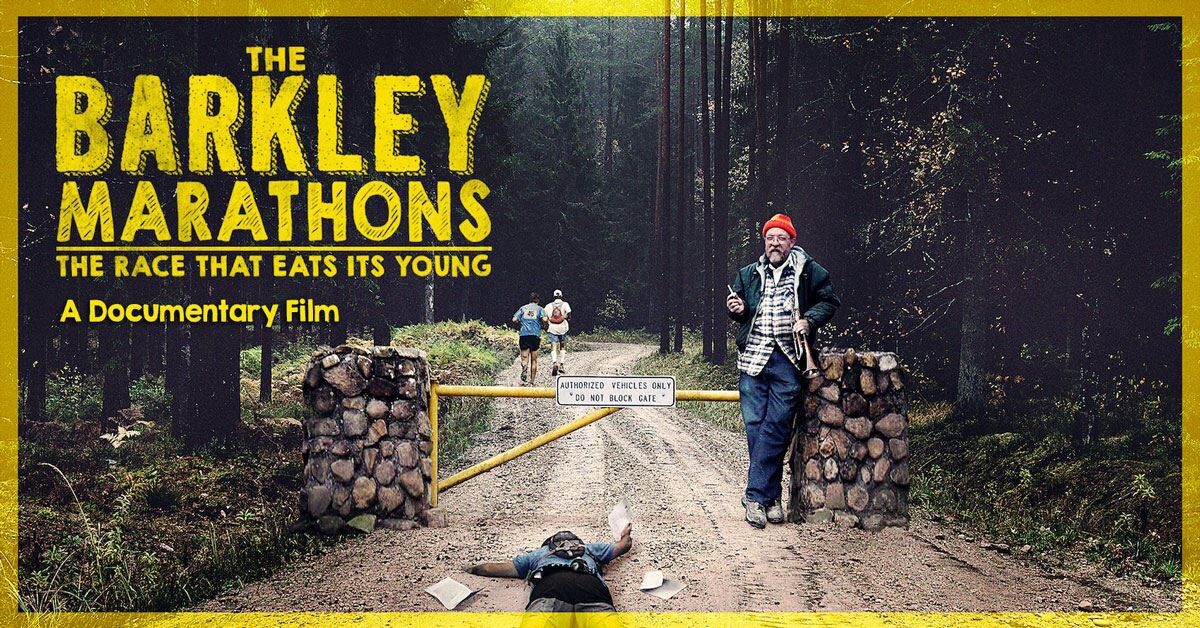
This 2017 documentary covers the history of the Boston Marathon, from its humble beginnings in 1897 right up to modern times. The film, which is narrated by Boston native Matt Damon, follows legends of the race (like the event’s first official female participant, Kathrine Switzer), 2014 winner Meb Keflezighi and four-time winner Bill Rodgers, as well as other past champions. In addition to the race’s history, the documentary looks to the future as organizers worked past the tragic events of 2013 and towards the Boston Marathons yet to come.
The Runner
In Oct. 2022, The New Yorker released a short, 17-minute documentary called The Runner that follows an Indigenous Canadian ultrarunner named Darius Sam. The film documents a 100-mile run in 2020 that Sam set out to complete to raise money and awareness for mental health. Since then, Sam has continued with ultrarunning, and in 2021 he became the youngest male to run the Moab 240, a behemoth of a race through Utah. Sam’s efforts have also led to a whopping $150,000 raised for mental health charities.
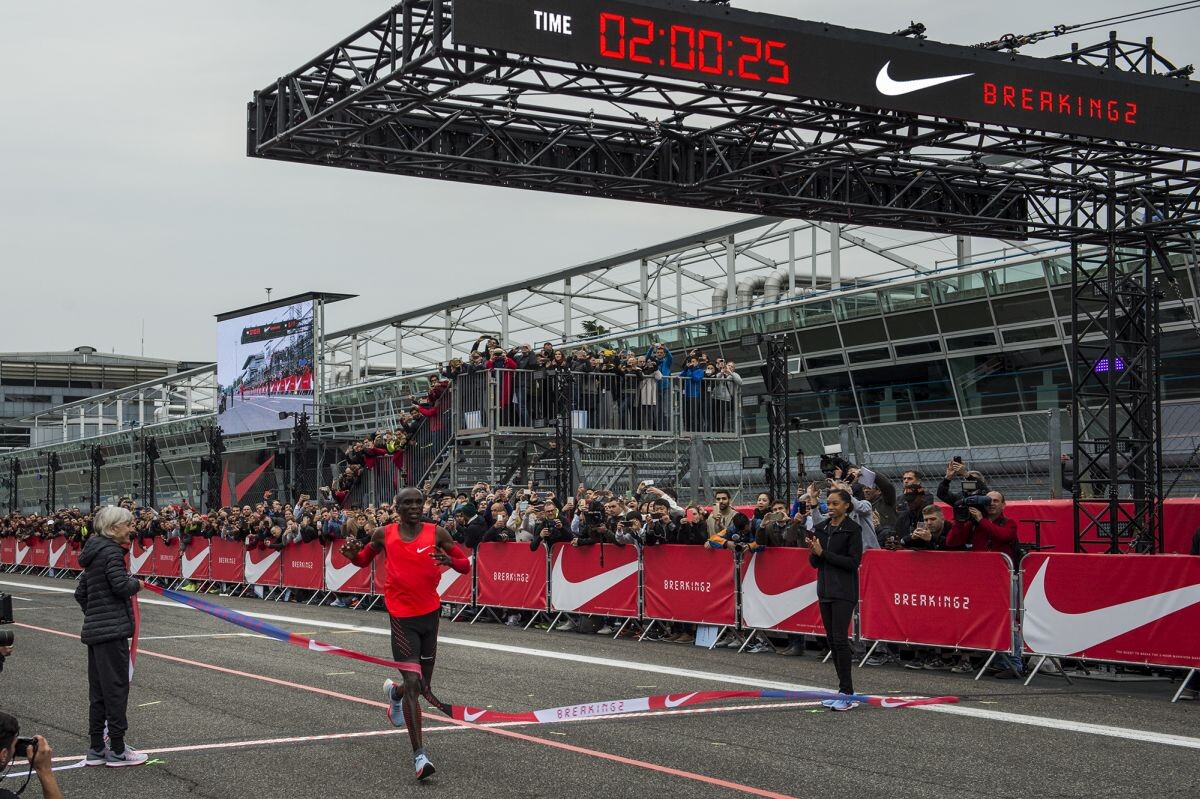
Breaking2
This documentary was produced by National Geographic and Nike, and it followed the build-up to the first-ever sub-two-hour marathon attempt, Nike’s Breaking2 project, in Italy in 2017. The film dives into the lives of the three Breaking2 athletes (Eliud Kipchoge, Zersenay Tadese and Lelisa Desisa), the months of planning that went into the attempt and the run itself. Although it ended up being unsuccessful (Kipchoge ran 2:00:25), it was still thrilling to watch, and the documentary is just as exciting.
Icarus
Although this Oscar-winning documentary is not a running-specific film, it should still be at the top of every runner’s must-watch list. The Netflix film intended to focus on doping and how difficult (or easy) it is to get away with cheating in elite sports, but it quickly turned into a story about doping in Russia, which ultimately led to the downfall of a years-long program that involved countless Russian athletes and sports officials.
by Ben Snider-McGrath
Login to leave a comment
Did You Know the Boston Athletic Association Has a Membership?
Joining isn’t as simple as you might think.
The 1983 Boston Marathon champion Greg Meyer is a member of the Boston Athletic Association (B.A.A.). So is Bobbi Gibb, women’s champion during the “pioneer era” of the marathon in 1966, ’67, and ’68.
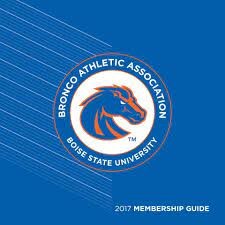
But Kathrine Switzer, who made headlines in Boston in 1967, is not. Nor is Meb Keflezighi, the 2014 champion.
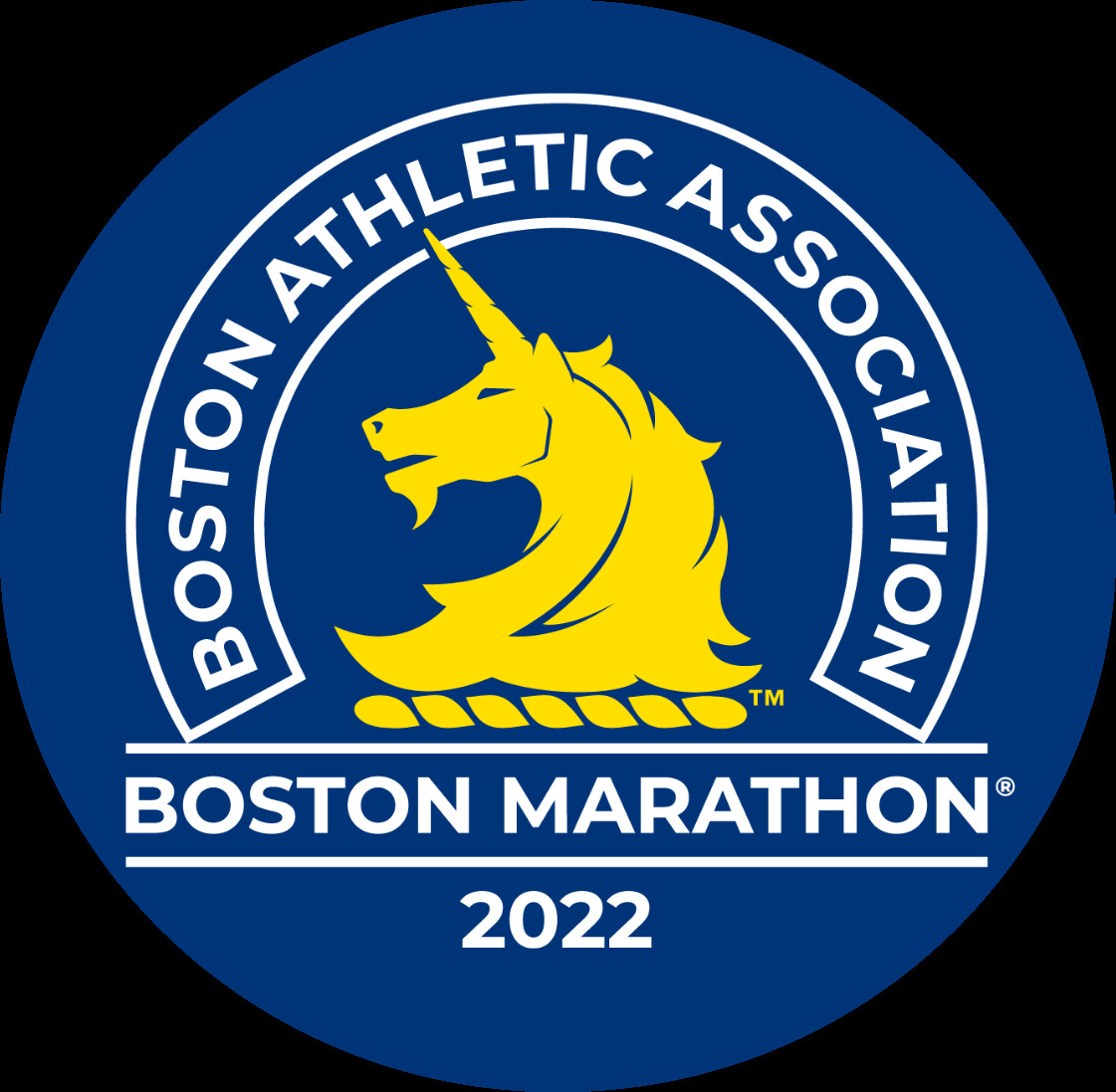
Tom Grilk, the CEO who retired in April, has been a member since 1987. The new CEO, Jack Fleming, is not.
Michael O’Leary, M.D., a surgeon at Brigham and Women’s Hospital and chairman of the B.A.A.’s Board of Governors (which is essentially the same as a board of directors) has been a member of the B.A.A. since 1989. All 13 Governors (10 men, three women) are members—they have to be, in order to be picked to serve on the board.
Scott Peterson, a Miami-area corporate finance professional, is a member, and he has his membership listed prominently on his LinkedIn profile. When asked by Runner’s World about it, Peterson, a marathon veteran, called the group “like-minded people who support the running community.” He said, “It’s a real honor for me and anyone to be part of the membership of B.A.A.”
But what is this selective group, exactly? Who are they? And how are they chosen?
A local mystery
Information about membership on the B.A.A. website is scant, which cloaks the group—intentionally or not—in secrecy. Several people who are deeply involved in the Boston-area running community told Runner’s World they did not know such a group existed. (There is also a B.A.A. Running Club, which is open to runners in the Boston area, but it is different from the membership.)
Chris Lotsbom, a B.A.A. spokesperson, answered multiple questions from Runner’s World about the membership via email. He said the group currently has 174 people.
He also explained that the membership model goes back to the B.A.A.’s founding in 1887. The marathon started 10 years later, in 1897.
The organization had, in its earliest days, a building with a pool, indoor track, bowling alley, and boxing room, among other amenities, like a golf club, for its dues-paying members. The B.A.A. was similar to other athletic clubs across the country, most notably the New York Athletic Club, which still exists.
In the 1930s, during the Great Depression, the B.A.A. lost its headquarters building and its other properties. All that remained was the marathon, the bylaws of the organization, and a small group of members.
The members kept the B.A.A. and the marathon going. And they remain to this day, written into the organization’s bylaws to promote “the common good and the health and welfare of the general public and the encouragement of the general public to improve their physical condition.”
Tom Derderian, executive producer of Boston: The Documentary and author of Boston Marathon: Year-by-Year Stories of the World’s Premier Running Event, takes a skeptical view of the leadership back in the day.
“The B.A.A. expected that their investments in the 1920s would continue to grow,” he wrote to Runner’s World. “The stock market crash and Depression and World War II removed all B.A.A. assets, leaving the Association with only its name, an indoor track meet, the Boston Marathon—and the founding attitude that only B.A.A. members could know what was best.”
The modern-day membership
Today, as with any group, some members are actively engaged in day-to-day matters of the organization, attending meetings, voting, lending expertise, or volunteering at B.A.A. events. Others are not involved at all.
“For us today, membership is a valuable asset when tapped into,” Fleming said in a call with Runner’s World. “There’s still work to be done, but leadership and staff rely on the members for a variety of things. They serve on committees. They provide guidance in areas, their expertise. So finance, real estate, of course, running, community, the professional side, technology.”
For example, when the B.A.A. wanted to buy a building in Hopkinton near the marathon starting line, the organization got real estate advice from some of the members during the process.
They have also helped with recent diversity initiatives.
“Several B.A.A. members were significant in the establishment of the Boston Running Collaborative, which seeks to increase the fitness and participation of minorities in running,” Lotsbom wrote. “In this respect, membership is a resource which complements the staff’s day-to-day work.”
The way the bylaws are written, the Board of Governors are nominated from the membership. So the 174 members influence the direction of the B.A.A. through the Governors, who oversee the CEO.
The B.A.A. doesn’t track the demographic makeup of the membership, but Lotsbom wrote that, since 2010, the group has attempted to improve its diversity.
Thaddeus Miles, who founded the Run to Wellness 5K in Roxbury several years ago, was invited to join the membership two years ago by Tom Grilk. Miles recently showed up at his first in-person membership meeting post-pandemic. He counted only one other Black member among what he estimates were 50 attendees, plus Adrienne Benton and Keith McDermott, who are on the Board of Governors.
Three people who are familiar with the membership said that many members work in the medical professions or financial services industry in the Boston area.
There is a family component as well, according to the B.A.A. O’Leary’s father, also a physician, was a member of the B.A.A. who was responsible for the physicals administered to marathon runners in Hopkinton during the race’s earlier years. A descendant of Walter Brown, who founded the Boston Celtics and was the B.A.A. president from 1941–64, still starts a division of the marathon to this day.
Members pay a nominal fee—$50—each year to belong. In exchange, they get one waiver each year into the marathon. They still have to pay the entry fee ($375), but they can run themselves without qualifying, transfer the waiver to a friend or family member, or donate the number to a charity.
Miles, who is on the steering committee of the Boston Running Collaborative, gives his waiver for a marathon entry every year to a runner of color who otherwise wouldn’t be able to qualify for the race.
For the thousands of runners every year who try to qualify but fail, or who fundraise for one of the charity teams as a way of gaining entry to Boston, the existence of a small membership group might rankle. Lotsbom said fewer than 180 entries are allocated for members annually (out of a field size of 30,000) and less than half are ultimately used.
“The B.A.A. gets to choose whom they want to invite to run the race, and the B.A.A. decides the terms by which it will invite people to participate in its iconic annual event,” said Robert Wang, the founder of the World Marathon Majors Challenge group on Facebook. (The group’s 18,000 runners are seeking to run all six of the Abbott World Marathon Majors, but they have no official affiliation with that organization.)
“If the B.A.A. wanted to invite everyone whose last name starts with ‘Y’ to run the Boston Marathon, that would absolutely be the organization’s prerogative,” Wang said.
I’d love to be a member. How do I sign up?
There’s the rub. Right now, no such sign-up mechanism exists. You have to know a current member or someone on the Board of Governors.
“Potential members are traditionally nominated by a board member or another current member, and apply with a résumé along with specific comments as to why they wish to join the B.A.A.,” Lotsbom wrote. “From there, the nominees are seconded by a Governor, and voted on by the board. The membership is made up of those who have expressed an interest in the B.A.A., B.A.A. activities, and its mission.”
Fleming acknowledged that the relative obscurity of the membership and the lack of clear guidelines for becoming a member could be improved.
“We should make it known more,” he said. “And we should have more public ways of making it easier to have their interest become known. Raise your hand. We should make it easier for that to occur.”
In an era when running’s leaders are trying to make the sport more inclusive, how does the B.A.A.’s membership fit into the landscape? Is it a quirky echo of the organization’s past? Or an impediment to diversity in today’s world? Does a quiet group of invitation-only members pass the sniff test in 2022?
Tiffany Chenault, a sociology professor at Salem State University who is an ambassador for the Boston chapter of Black Girls Run and part of the Boston Running Collaborative, said in a call that she didn’t recall hearing about the membership, and she wondered how much influence the group holds.
“I’m curious,” she said. “I have questions.”
John Hanc, a longtime Runner’s World contributing editor and author of The B.A.A. at 125: The Official History of the Boston Athletic Association 1887-2012, knew of the group’s role in the B.A.A.’s founding, but he didn’t realize it still existed.
“Today we know the B.A.A. for the marathon and its other major running events,” Hanc said.
“But we have to remember that its history is rooted in the 19th century. Back then, it was very much an athletic club, with all of the exclusivity and, by 21st century standards, perhaps unnecessary and stuffy protocol that came with institutions like it at the time. Over the decades, the organization has morphed into a powerful force in the modern running movement. But some vestiges of that past still remain. While we of course want to see greater diversity in every aspect of the sport, this remnant of the old B.A.A. strikes me as fairly harmless.”
The B.A.A. in 2022 is facing very modern challenges, however. John Hancock, the longtime marathon sponsor, announced that 2023 would be its final year. Will a company want to replace Hancock? And critics have said the B.A.A. has been slow to embrace diversity in its ranks and events. Where does the membership group fit into that?
Does a leadership structure that evolved from the 19th century, and with a Board derived from a membership group, still serve the organization?
Derderian isn’t certain.
“It is a human tendency for those in charge to conclude that only they know enough to be in charge, since they have always been in charge,” he wrote, “and to keep things from changing, they have to continue to exclude control from outside.”
by Runner’s World
Login to leave a comment
Organizers of the 50th running of the Credit Union Cherry Blossom 10 Mile Run announced today that next year’s race will offer a $50,000 record bonus
$50,000 World and American Record bonus pool* and hosting PRRO and RRCA Championships are just a few of many highlights planned to commemorate 50 years of world class road racing in our Nation’s Capital.
October 7, 2022, Washington, DC: Organizers of the 50th running of the Credit Union Cherry Blossom 10 Mile Run (CUCB) announced today that next year’s race will offer a $50,000 record bonus, to be divided equally* among any man and woman setting a World Athletics World Best and/or American 10 mile record at The Runner’s Rite of Spring® on April 2, 2023.
The bonus payouts will be in addition to $69,000 in guaranteed prize money, with $44,000 paid to the top ten men and women in the international field and $25,000 to the top ten American men and women (double dipping allowed for the Americans). The race was one of the first U.S. events to pay prize money back at the dawn of the prize money era in 1984 when the total purse was $13,400, split evenly among the top men and women.
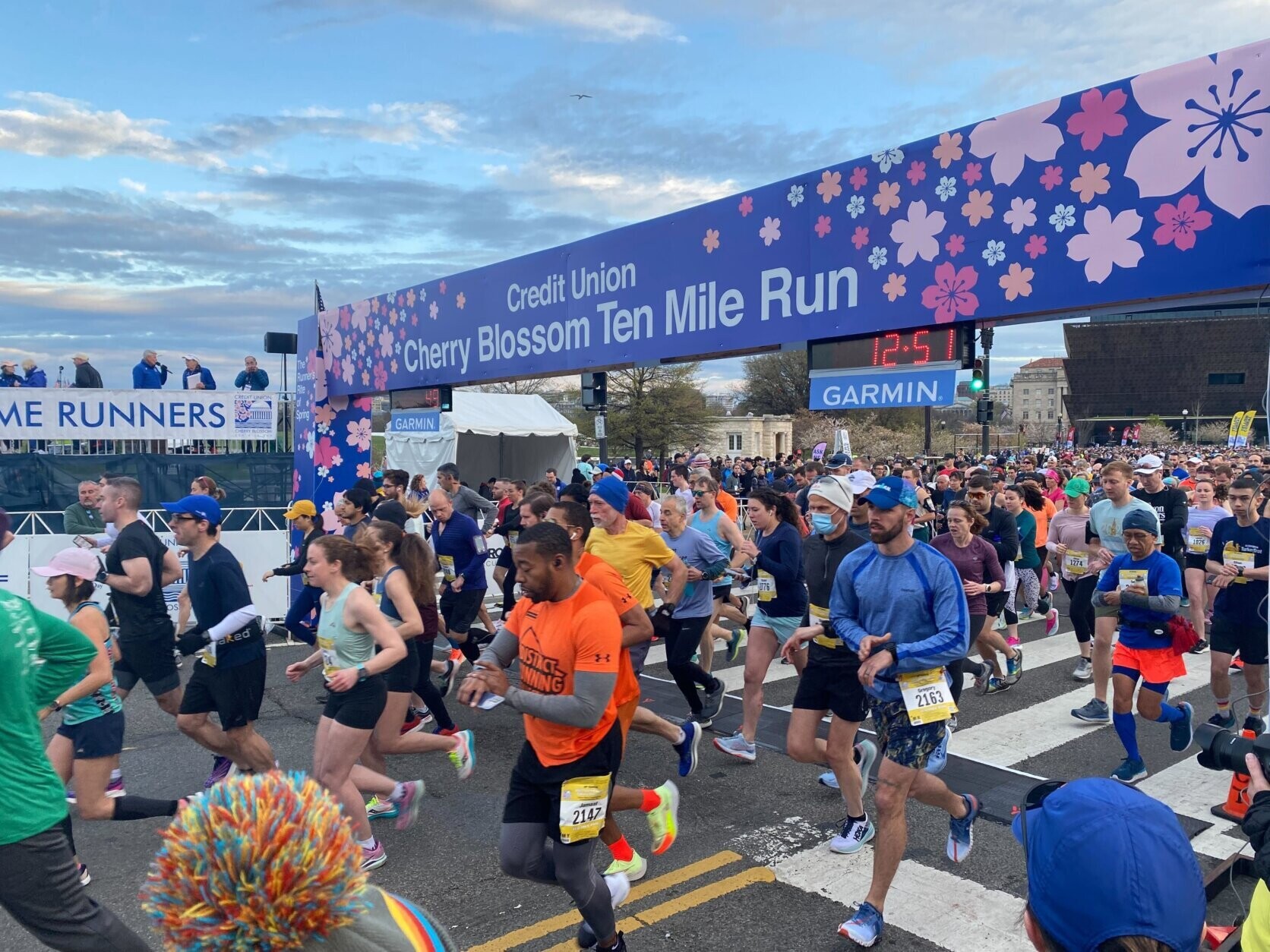
* If World Best times and American Records for men and women are set at the event (i.e. four records set), the $50,000 would be split into four $12,500 shares. If only one World or American record is set by either a man or a woman, the athlete setting the record would get the full $50,000. If an American sets both the World and American records, and no other records are set, he or she would receive $50,000.
Currently, the times to beat are as follows:* Haile Gebreselassie’s (ETH) World Athletics Best of 44:24, run at the Tilburg 10 Mile in Tilburg, Netherlands, September 4, 2005;* Keira D’Amato’s World Athletics Best in a women’s only race of 51:23, run at the UpDawg 10 Mile in Washington, DC, November 24, 2020;* Greg Meyer’s American Record of 46:13, run at the Cherry Blossom Ten Mile in Washington, DC, March 27, 1983;* Keira D'Amato’s previously listed World Best 51:23 is also the American Record for a women’s only race.
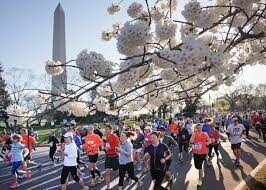
The 10 Mile will serve as the Road Runners Club of America National 10 Mile Championship and the 2022-2023 PRRO Circuit Championship. Winners of the 2022-2023 PRRO Circuit events will be eligible for the $10,000 PRRO Super Bonus by winning the PRRO Championship (the bonus is split if an eligible male and female win the Championship).
Event Director Phil Stewart said, “Our 50th anniversary will be like no previous edition of the race, with the largest prize pool of guaranteed and bonus money ever, and featuring the RRCA and PRRO Championships. The race has always been a leader in the support of elite competition and we want to highlight this heritage in a big way in this special year.”
The inaugural Cherry Blossom 10 Mile in 1973 was won by Sam Bair, in a time of 51:22; the women’s winner was Kathrine Switzer, in a time of 1:11:19; 127 men and 12 women ran that first race. Bill Rodgers holds the honor of most victories, with four consecutive wins between 1978 and 1981. Three women have each won the race three times: Julie Shea (1975-77), Lisa Weidenbach (1990-1992) and Lineth Chepkurui (2008-10). Ben Beach leads all Cherry Blossom finishers with an active streak of 49 years. A comprehensive media guide detailing a wide variety of statistics from the first 49 CUCB races is available here.
Other significant highlights of the 50th anniversary celebration will be announced in mid-October, including the procedures for entering the lottery for race registration and changes in the 5K.
Thanks to Credit Union Miracle Day’s title sponsorship since 2002, the Credit Union Cherry Blossom events have raised over $10.2 million for the Children’s Miracle Network Hospitals, including $323,000 in 2022.
About the Credit Union Cherry Blossom 10 Mile:
The Credit Union Cherry Blossom 10 Mile, organized by Cherry Blossom, Inc., a 501c(3) chapter of the Road Runners Club of America, is known as “The Runner’s Rite of Spring®” in the Nation’s Capital. The staging area for the event is on the Washington Monument Grounds and the course passes in sight of all of the major Washington, DC Memorials. The event serves as a fundraiser for the Children’s Miracle Network Hospitals, a consortium of 170 premier children’s hospitals across North America. About one-third of the funds raised support Washington, DC’s own Children’s National (“Children’s Hospital”). The event also funds the Road Runners Club of America’s “Roads Scholar” program designed to support up-and-coming U.S. distance running talent.
Credit Union Miracle Day, Inc., a consortium of credit unions and credit union suppliers, is the title sponsor of the Credit Union Cherry Blossom 10 Mile, 5K and Kids’ Run. Current presenting sponsors include ASICS, MedStar Health and Wegmans; supporting sponsors include CO-OP Financial Services, CUNA Mutual Group, PSCU, Potomac River Running, Gatorade Endurance, Suburban Solutions and UPS.
The event is a proud member of the PRRO Circuit (PRRO.org), a series of this country’s classic non- marathon prize money road races with circuit stops in Washington, DC; Spokane, WA; and Utica, NY.
In addition to being sanctioned by USA Track & Field and the Road Runners Club of America, the Credit Union Cherry Blossom events have earned Gold Level Inspire Certification from the Council for Responsible Sport in recognition of its legacy of commitment to sustainability and thoughtful resource management.
by Runners Web
Login to leave a comment
Cherry Blossom Ten Mile Run
The Credit Union Cherry Blossom is known as "The Runner's Rite of Spring" in the Nation's Capital. The staging area for the event is on the Washington Monument Grounds, and the course passes in sight of all of the major Washington, DC Memorials. The event serves as a fundraiser for the Children's Miracle Network Hospitals, a consortium of 170 premier...
more...Nina Kuscsik to Receive Abebe Bikila Award at 2022 TCS New York City Marathon
Nina Kuscsik, a trailblazer for women’s running, will receive the Abebe Bikila Award this year, an honor which is presented each year from New York Road Runners (NYRR) to an individual who has made an outstanding contribution to the sport of distance running. The award will be presented to Kuscsik at NYRR’s Night of Champions during TCS New York City Marathon race week.
“I am very proud. It was such a long time ago when I was advocating for more opportunities in women’s running; it just seemed like the right thing to do,” Kuscsik said. “I attended all the meetings of the AAU in person, and I learned how to file appropriate legislation.
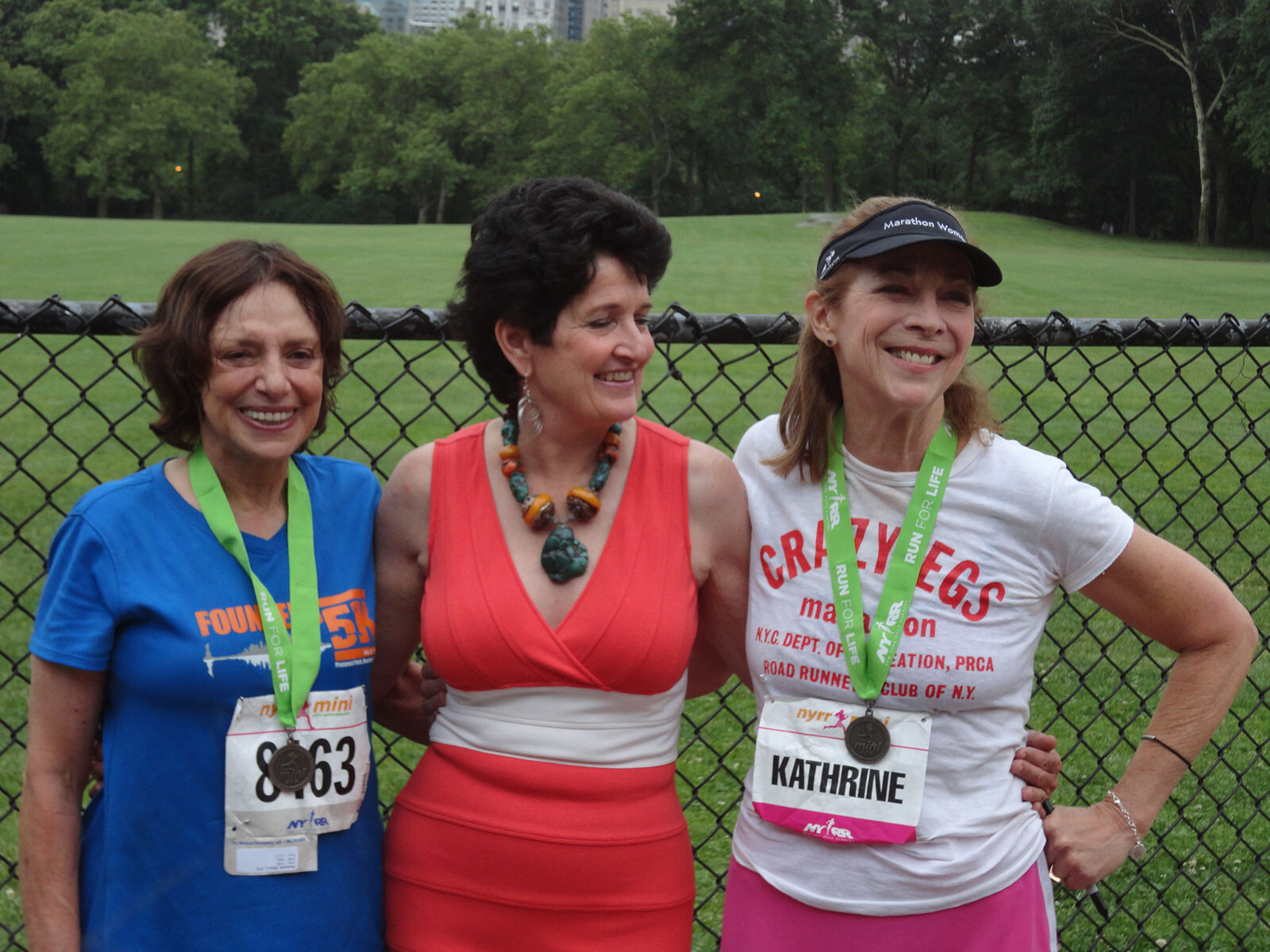
I also had other men and women helping me so that we could get the rules changed, so myself and other women runners would have the right, and be eligible, to run marathons. It is so wonderful to see the results of it all today.”
Kuscsik transformed the sport of running by breaking through the “boys’ club” barrier to change the rules so they included women. After she ran the 1969 Boston Marathon — unofficially, as women weren’t allowed to enter — she presented a proposal to the Amateur Athletic Union, asking for an end to the ban on women entering races. The committee agreed to raise the maximum distance of AAU-sanctioned events for women from five to 10 miles and added that “certain women” could run marathons. The rules still required a separate women’s start.
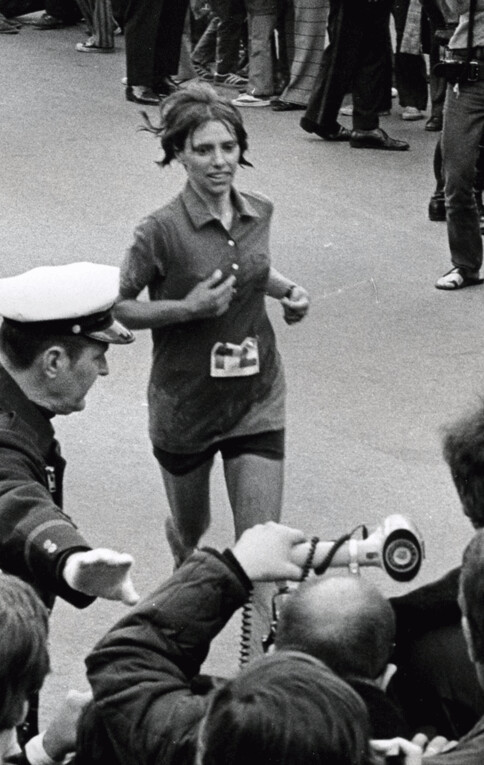
On June 3, 1972, together with NYRR president Fred Lebow and Kathrine Switzer, Kuscsik helped launch the Crazylegs Mini Marathon, the world’s original women-only road race now known as the Mastercard New York Mini 10K.
Four months later, on October 1, 1972 at the New York City Marathon, Kuscsik and five other women huddled together just before the Central Park start. When the gun went off, they sat down, protesting the women’s separate-start status. After the press got their story, the women got up and started with the men’s start. Kuscsik won the race, becoming the first woman to triumph in New York and Boston in the same year. Those six women — Lynn Blackstone, Jane Muhrcke, Liz Franceschini, Pat Barrett, Cathy Miller, and Kuscsik — are known around the world today as the “Six Who Sat.” This Saturday will mark exactly 50 years since their actions changed the trajectory of women’s running for the generations that followed.
Kuscik would return to New York in 1973 to win the marathon once again, and in 1977, she completed the annual NYRR 50-Mile in Central Park in 6:35:53, an American record. She was then among the group that successfully lobbied for a women’s marathon to be added to the 1984 Olympics.
by Running USA
Login to leave a comment
TCS New York City Marathon
The first New York City Marathon, organized in 1970 by Fred Lebow and Vince Chiappetta, was held entirely in Central Park. Of 127 entrants, only 55 men finished; the sole female entrant dropped out due to illness. Winners were given inexpensive wristwatches and recycled baseball and bowling trophies. The entry fee was $1 and the total event budget...
more...Peres Jepchirchir, Senbere Teferi and Sara Hall Headline 50th New York Mini 10K
With one month to go until the 50th anniversary of the Mastercard® New York Mini 10K, New York Road Runners (NYRR) announced today that Olympic, TCS New York City Marathon, and Boston Marathon champion Peres Jepchirchir, United Airlines NYC Half champion and 5K world-record holder Senbere Teferi, and two-time Mastercard® New York Mini 10K champion Sara Hall will headline the professional athlete field for this year’s race.
The Mini 10K, which began in 1972 as the first women-only road race known as the Crazylegs Mini Marathon, has gone on to garner more than 200,000 total finishers to date. Former NYRR President Fred Lebow named the race after the miniskirt, which back then was in vogue. A total of 72 women finished the first race, and three weeks later, Title IX was signed into law, guaranteeing girls and women the right to participate in school sports and creating new opportunities for generations of female athletes.
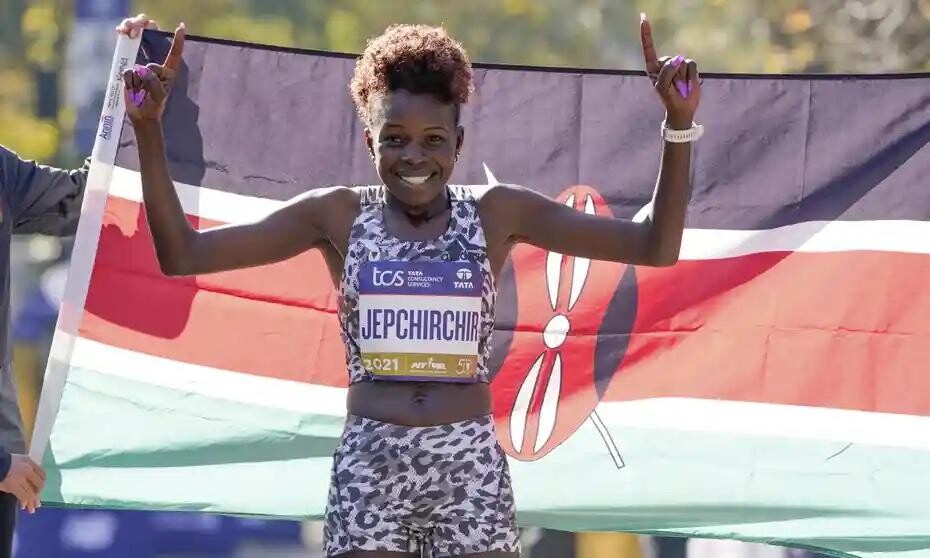
Jepchirchir, of Kenya, is the only athlete – male or female – to have won the Olympic, New York City, and Boston marathons, and is also a two-time world champion in the half marathon. Last year, she won gold in the Tokyo Olympic marathon by 16 seconds, and then four months later ran the third-fastest time in TCS New York City Marathon history (2:22:39) to win the race in her U.S. debut. In April, in a back-and-forth race that came down to the final mile, she fended off Ethiopian Ababel Yeshaneh to take the Boston Marathon title in her debut in the event and will now be racing the Mastercard® New York Mini 10K for the first time.
“I have heard about the Mini and how it is a wonderful celebration of women and running,” Jepchirchir said. “It is very important to me that I use my success to inspire young women and girls coming after me. It is very special to be able to return to New York City after my marathon victories in New York and Boston to be a part of the 50th anniversary of this race.”
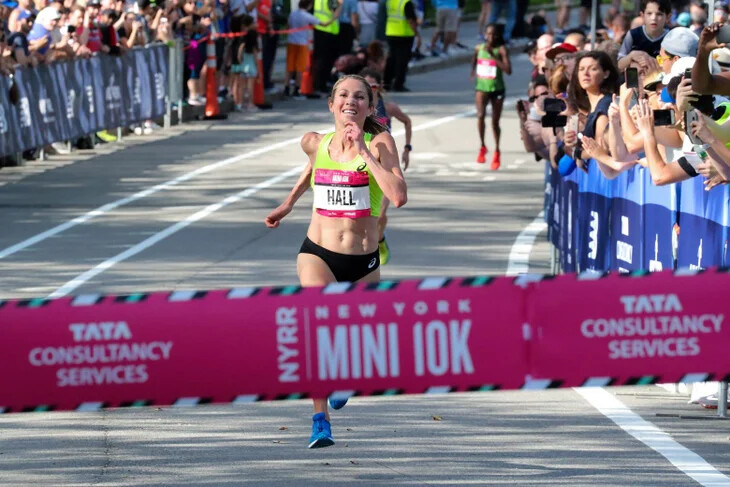
Teferi, of Ethiopia, is a two-time Olympian, two-time world championships silver medalist, and the 5K world-record holder. Earlier this year, she set both the course and event records at the United Airlines NYC Half, finishing in a time of 1:07:35 to win the race. She followed that up a month later by winning the B.A.A. 5K in a course-record time of 14:49. In her NYRR race debut, Teferi won the 2019 UAE Healthy Kidney 10K with a time of 30:59, breaking the previous course record set in 2014 by Joyce Chepkirui.
“My first race in the United States was in New York City in 2019, and I broke the event record at the Healthy Kidney 10K in Central Park,” Teferi said. “Then, earlier this spring, I broke the event record at the United Airlines NYC Half, again crossing the finish line in Central Park. I cannot promise another record on June 11, but I am happy to return to Central Park for my first Mini 10K, and look forward to be joined by thousands of my sisters-in-running.”
Hall, of the United States, who has 10 national titles to her name, ran what was then an American record-breaking 1:07:15 half marathon at the Houston Half Marathon in January. She was the runner-up at the 2020 London Marathon and that same year clocked what was then the second-fastest marathon ever by an American woman at The Marathon Project. She is the two-time reigning champion of the Mastercard® New York Mini 10K, having won the 2019 event that also served as the USATF 10 km championships and then following it up in 2021 with another victory.
“My three races at the Mini have all aligned with big important milestones in the history of the event: The first time hosting the USA Championships in 2019, the first big NYRR race coming out of the pandemic in 2021, and now the 50th anniversary in 2022,” Hall said. “I’m very aware that many of the opportunities I’ve had as an athlete are because of the groundbreaking work of the women who came before me, and of my duty to inspire the young women who will follow me, including my daughters. I will do everything I can to honor all of them with another top finish on June 11.”
The Mastercard® New York Mini 10K will offer $45,000 in total prize money, including $10,000 to the winner of the open division and $2,500 to the winner of the wheelchair division. The professional athlete races will be streamed live on USATF.TV beginning at 7:40 a.m. ET. Mastercard® will serve as title sponsor of the event for the second time, and as part of its on-going partnership with NYRR will also serve as the presenting sponsor of professional women’s athlete field.
To mark the 50th anniversary, several legends and pioneers of the sport will also be joining the Mastercard® New York Mini 10K race weekend festivities this year, including Jacki Marsh-Dixon, the first Mini 10K champion; Kathrine Switzer, the 1974 New York City Marathon champion who also ran the first Mini 10K; Deena Kastor, Olympic medalist and 2004 Mini 10K champion; and Lynn Blackstone, Pat Barrett, Jane Muhrcke, and Nina Kuscsik, four of the “Six Who Sat” at the 1972 New York City Marathon. Both Switzer and Blackstone will run the Mini 10K again this year.
by Letsrun
Login to leave a comment
New York Mini 10K
Join us for the NYRR New York Mini 10K, a race just for women. This race was made for you! It’s the world’s original women-only road race, founded in 1972 and named for the miniskirt, and it empowers women of all ages and fitness levels to be active and to look and feel great on the run. Every woman who...
more...1967 Flash Back - It is hard to believe this happened just 55 years ago and since then there has been 212,054 women Boston Marathon finishers
Kathrine Switzer wasn’t going to be stopped. As the daughter of a major in the United States, failure was never an option. While studying at Syracuse University, a coach once told her that a “fragile woman” could never run in the Boston Marathon.
This only encouraged her further. Undeterred, she trained in secret and entered the race in 1967.
Rather than simply letting her run, officials reacted negatively and even tried to pull her from the race. Fortunately, Kathrine Switzer was running alongside her boyfriend, who helped fend off those around her. She finished the competition in just over four hours
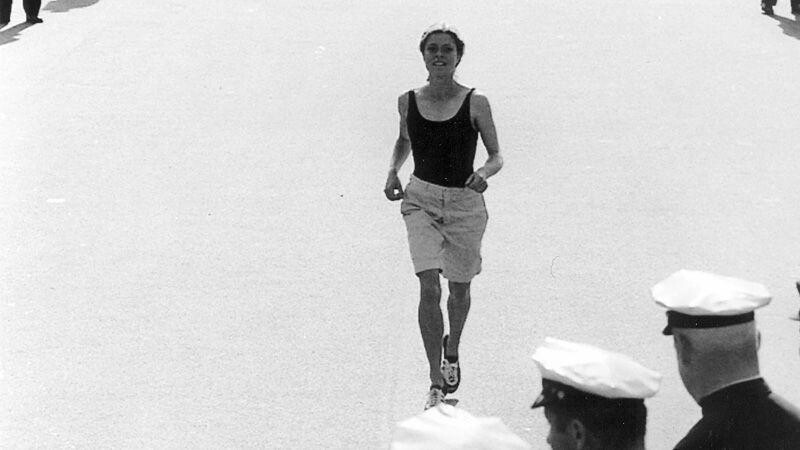
Since then (up to the 2019 event) there has been 212,054 women finishers out of 252,209 entries.
Actually the year before Bobbie Gibb (photo 2-3) had finished the Boston Marathon without the public attention Switzer got in 1967.
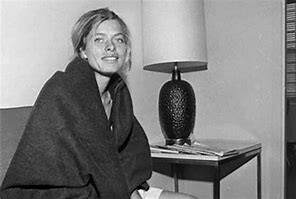
Before 1966, the longest Amateur Athletic Union (AAU)-sanctioned race for women was one and a half miles. Until 1972, when the first women's division marathon opened, the Boston Marathon was an AAU men's division race. Under the AAU rules, women are not qualified to run in men's division races.
Gibb trained for two years to run the Boston Marathon, covering as much as 40 miles in one day. On writing for an application in February 1966, she received a letter from the race director, Will Cloney, informing her that women were not physiologically capable of running marathon distances and that under the rules that governed amateur sports set out by the AAU, women were not allowed to run more than a mile and a half competitively.
She realized that it was more important than ever to run and that her run would have a social significance far beyond just her own personal challenge.
After three nights and four days on a bus from San Diego, California, Gibb arrived the day before the race at her parents' house in Winchester, Massachusetts. On the morning of Patriots' Day, April 19, 1966, her mother dropped her off at the start in Hopkinton.
Wearing her brother's Bermuda shorts and a blue hooded sweatshirt over a black, tanked-top swim suit, she hid in the bushes near the starting pen. After the starting gun fired, she waited until about half the pack had started and then jumped into the race.
Login to leave a comment
NCAA Cross-Country Distances Still Aren’t the Same for Men and Women. Run Equal Wants to Change That
(A proposal has been submitted to the NCAA to equalize the men’s and women’s cross-country race distances by 2023.)
“I came by the 6K mark and thought, ‘F—, it’s going to be a long day,’” Cooper Teare says of this year’s 10,000-meter NCAA men’s cross-country championships. At the 6K mark, he was still with the leaders, but in the late stages of the race he collapsed from exhaustion, got back up, fell down again, and crawled across the finish line. The fastest collegiate miler of all time finished fourth to last. “The 10K is a different beast,” he says.
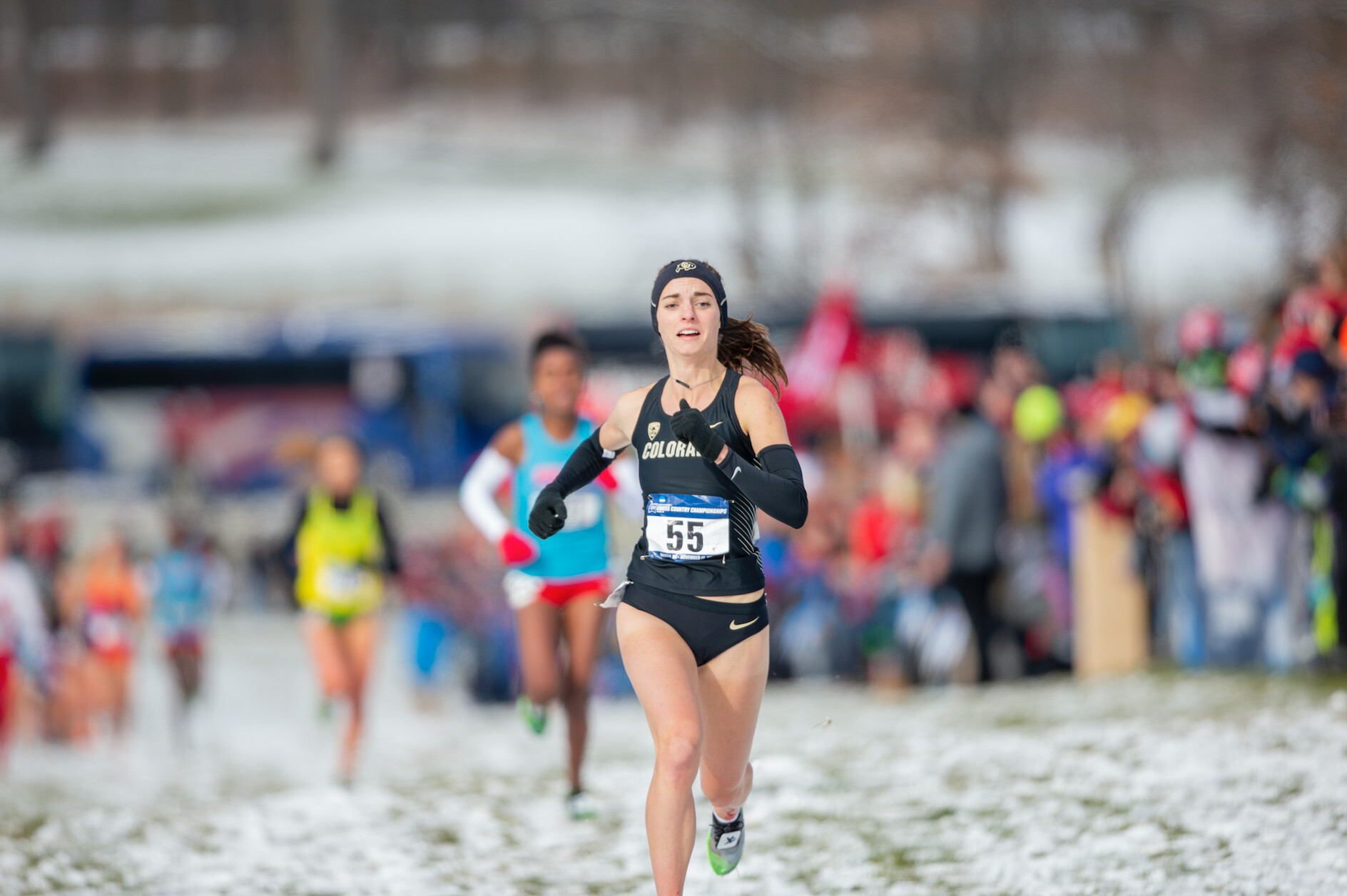
For the women, though, the race ends at 6K, where Teare wished it would’ve ended while his competitors surged forward. The fastest miler in the women’s race, Whittni Orton, was ultimately crowned the champion. Two different race distances, frankly, make men’s and women’s cross-country two different sports.
On January 5, Run Equal submitted their first proposal to the NCAA, in which their main demand was that men and women race the same distance in cross-country, across all three divisions, by 2023. In accordance with their petition, which had been circulating online for months, they proposed that everybody race 8,000 meters all season. Equalize the distances, they say. Run equal.
“Requiring women to race shorter distances is gender bias and sends an unmistakable message, intended or not, that women are not as capable as men,” the proposal says.
Molly Peters, the head cross-country coach for men and women at St. Michael’s College, started Run Equal by herself but always knew she wouldn’t be able to accomplish anything substantial alone. “The NCAA isn’t going to take ‘little me’ at my little college seriously,” Peters says.
To gain credibility, Peters assembled a team of pioneers in women’s running who share her view that the distances should be equal. Joan Benoit won the first ever women’s Olympic marathon. Lynn Jennings was a three-time cross-country world champion. Kathrine Switzer was the first woman to ever run the Boston Marathon.
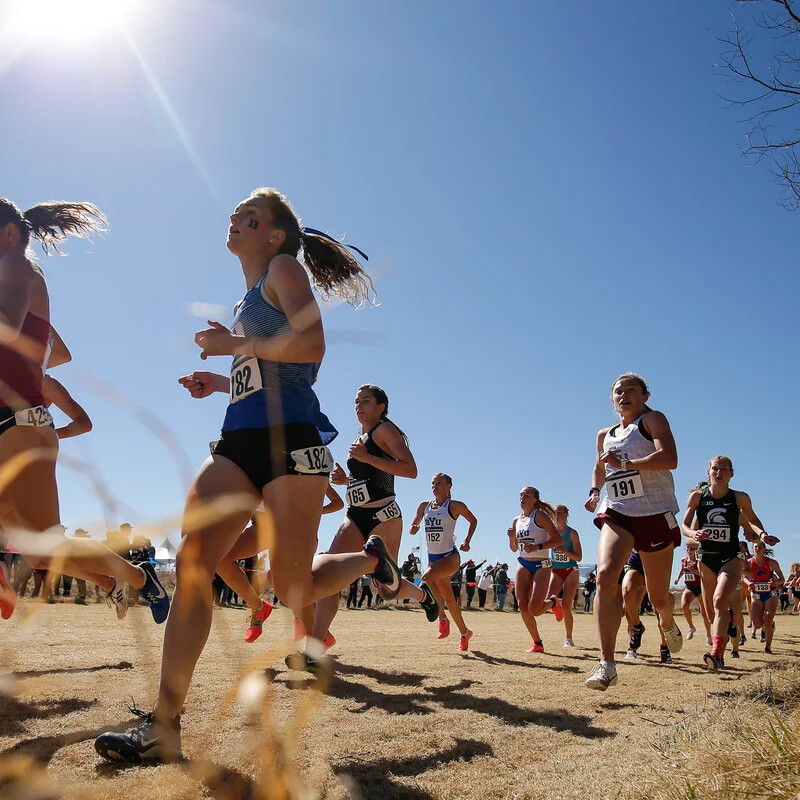
The hope is that when prominent athletes sign and share the petition, it’s like a snowball. “When you get these big names on board, the NCAA will eventually have to answer to them,” Peters says.
Another one of the big names is Molly Huddle, a 10-time NCAA All-American and former American record holder in the 5,000 meters. “I always thought it was kind of weird we didn’t run the same distance, and here we are 20 years later still doing the same thing,” Huddle says. “I think it’s been stuck this way for so long just because we haven’t all really talked about it out in the open all at once.”
From 1928 to 1960, women were prohibited from competing in any event longer than 200 meters at the Olympics because it was thought that the strenuous aerobic activity would harm her ability to bear children. Now it’s commonly understood that the old rationale was wrong; to relegate women to a shorter distance event seems like a blind faith preservation of a tradition based on a misconception, a simple deferment to the status quo that favors an antiquated model.
Kara Goucher, the three-time NCAA champion and double Olympian, concurs. “You don’t see women running 3,000 meters on the track while the men run 5,000,” she says. “Women run the marathon too. They run hundred-milers. They can handle a few extra kilometers in cross-country.”
Goucher says her college coach at the University of Colorado, Mark Wetmore, used to joke, “The men get to enjoy their time for 30 minutes, and you girls only get to enjoy 16 or 17 minutes. They get to be in the spotlight for much longer. That’s not fair.” There’s a truth at the joke’s center: The men’s race is presented as a more serious affair, the main event of the day.
When Goucher won her NCAA cross-country title in 2000, it was the first year the women had ever raced 6K. It had previously been standard for women to race 5K. When the increase in distance first took effect, Goucher says, everybody thought participation among women would drop dramatically, that they wouldn’t be able to field full teams. That didn’t happen. The number of women participating in Division I cross-country steadily increased for the next five years.
While there may be popular support for increasing the women’s race distance, there’s no consensus around what the race distance should be. The proposal submitted to the NCAA calls for 8K for all because Peters and many of her allies see that distance as “a great compromise.” But others disagree.
“I like the 10K at the national championships. It makes it harder,” Goucher says. “But what’s most important is that they’re equal.” Goucher believes there should be a meaningful differentiation between track and cross-country. She says, “They’re different sports, and they should require different types of athletes.”
Huddle offers a different perspective. “Back when I was running I wanted to run 8K, what the guys do all season,” she says.“I’m not so sure about 10K. That’s a daunting distance to jump up to as a freshman—for the men too.”
Peters understands the challenges of organizing an initiative like this and isn’t necessarily worried about the contention. She also spearheaded the movement to equalize the NCAA’s race distances in nordic skiing, which has some similarities with cross-country: both sports are endurance races, and they both traditionally have required women to race a shorter distance than men. Her initiative, which was fittingly called Ski Equal, was mostly successful.
After pressure from Peters and some of the sport’s top athletes, the NCAA Ski Committee opted for an incremental transition to hosting equal distance races between genders. This year, seven of the eight races on the formal circuit were equal in distance. Last year only two were. A few years before that none of them were.
As a sport, cross-country hasn’t yet seen the changes that nordic skiing has, even though the conversation about equalizing race distances isn’t new. There still isn’t a single opportunity for women to race longer than 6K during the NCAA season. But maybe now the time is finally right.
While the USATF cross-country championships have been 10K for both men and women since 2015, other governing bodies are now beginning to make changes to reckon with the implicit messaging behind the history of unequal race distances. European Athletics recently announced that for the first time in 2023 they will lengthen the women’s race distance to match the men’s. Soon the unequal race distances will be unique to the NCAA.
“There’s pressure right now for the NCAA to push for gender equality,” says Peters, referencing the recent Kaplan Reports, which aim to provide a thorough review of gender equality issues in various NCAA championships. The reports followed a TikTok videothat went viral in March showing the dramatic differences between the men’s and women’s practice facilities at last year’s NCAA March Madness basketball tournaments. People are seriously talking about gender equality in sports right now; the window is wide open.
Regardless of the changes that happen in other sports, during the upcoming cross-country season Peters plans to host some women’s 8Ks at her college, where she’s the meet director. Rather than wait for governing bodies to comply with her vision, she’ll model the system she wants to see. “It pains me to host races that aren’t equal,” she says. “I guess it’ll soon be time to put my money where my mouth is.”
by Matt Wisner (Women’s Running)
Login to leave a comment
Joan Ullyot a pioneer for women’s running has died
Women’s Running Pioneer Joan Ullyot Dies at 80
She started running at age 30 and was instrumental in lobbying for the women’s marathon to be included in the Olympic Games.
Dr. Joan Ullyot, whose running achievements and medical expertise made her a major pioneer of women’s running, died on June 18, at her home in Snowmass Village, near Aspen, Colorado. She was 80. The cause was a heart attack.
Ullyot’s book, Women’s Running, published in 1976, was the world’s first on the subject, and she was a leader as a writer, speaker, medical scientist, activist, and role model for all women who begin to run relatively late in life, in her case at 30.
Growing up in Pasadena, California, Ullyot went to Wellesley College, but at that time she was so uninterested in running that she never troubled to watch the Boston Marathon go by. A talented linguist, she aspired to the Foreign Service, until she learned that women diplomats were not permitted to marry. Switching to medicine, she attended the Free University of Berlin, and entered Harvard Medical School, becoming one of its early women graduates.
She held a fellowship in cellular pathology at the University of California, married, and had two sons, before growing discontent with her 30-year-old body.

“I was the ultimate creampuff. If I could become an athlete, anyone could do it,” she is quoted as saying in Running Encyclopedia.
She gave credit for her venturing into running to Dr. Kenneth Cooper’s seminal book Aerobics, and to assistance from the family black lab, who towed her up the local hill on her experimental first runs, as she told Gary Cohen in an extensive 2017 interview.
Her first race was San Francisco’s iconic Bay to Breakers, and within a few months she had run her first marathon, placing 13th at Boston in 1974, only the third time the race was officially open to women. Quickly, Ullyot began applying her varied intellectual skills and high energy to the totally new field of women’s running.
Within two years, she was winning races like Lilac Bloomsday in Spokane and Hospital Hill Run in Kansas City, representing the U.S. as both a marathoner and interpreter at the International Women’s Marathons in Waldniel, Germany, writing articles and columns for Runner’s World and Women’s Sport and Fitness, and traveling the world as a groundbreaking speaker.
“I talked all around the country on the same ticket as George Sheehan and Joe Henderson. It was great fun,” she said in the Cohen interview.
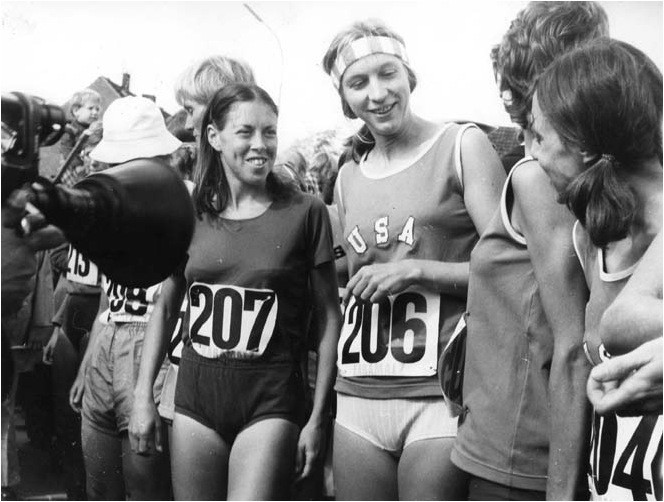
Absorbed in this new area of knowledge, she switched her medical specialty from pathology to exercise physiology. In 1976, only three years after she took her first running steps, she had researched and published Women’s Running with the World Publications division of Runner’s World.
She sold the idea to editor Joe Henderson and publisher Bob Anderson as a way of dealing with the numerous queries she was receiving, as a Runner’s World columnist, from new women runners. The book was a bestseller, and she followed with Running Free (1980; her own story plus profiles of runners such as Sister Marion Irvine) and The New Women’s Running (1984).
Ullyot’s own racing continued to progress, as she followed Arthur Lydiard’s training principles with guidance from U.S. marathoner Ron Daws. She ran Boston 10 times, winning the masters race in 1984, at age 43, with a 2:54:17. She won 10 marathons outright, and finally broke 2:50 at age 48, with her 2:47:39 personal record on the time-friendly St. George Marathon course.
She chose her races like her wines, with catholic enthusiasm, and was a loyal supporter of San Francisco’s local DSE (Dolpin South End Runners) events as well as eagerly taking international opportunities with the Avon Circuit and extending her active career through ultraracing.
Her medical standing made her an important advocate for women’s distance running in the years of lobbying and protest that led ultimately to the inclusion of all women’s events in the Olympic Games.
“Her research was presented…to the International Olympic Committee by the Los Angeles Olympic Committee before the vote to include the women’s marathon in the 1984 Games,” said former world record holder Jacqueline Hansen in an online tribute this week. That credit is also given in the citation for Ullyot’s induction into the Road Runners Club of America Hall of Fame in 2019.
Ullyot and her second husband, scientist Charles Becker, moved in the early 1990s to Snowmass. She coached the Aspen Runners Club for about 10 years from 1993, and kept in shape by biking until a nearly fatal crash. In her later years, she focused on walking.
Many tributes this week have recalled her high intelligence and zest for life.
“In the weeks leading to her unexpected death, Joan was characteristically high energy and had a blast,” wrote her son Ted Ullyot.
“In the 1970s, as we all worked to break down the myths that restricted women from running, Joan was our medical beacon, a feisty example of transformation from zero to 2:47 marathon, and an unstoppable personality, bigger than life, opinionated at the top of her mighty lungs, and with an unstinting appetite for fun and capacity for wine,” said Kathrine Switzer.
Ullyot also sustained her lifetime devotion to travel, reading, and friendships. These included many who were her competitors and collaborators in the 1970s and ’80s, years when their pioneering generation created, advocated, fought for, and left strong the visionary new sport of women’s road running.
by Runner’s World (Roger Robinson)
Login to leave a comment
Sara Hall will aim to defend her Mini 10K title as professional athletes return to NYRR races for the first time since 2019 due to pandemic
The 2021 Mastercard New York Mini 10K, the world’s original women-only road race, is expected to host approximately 1,200 runners on Saturday, June 12, including the return of professional athletes to New York Road Runners races for the first time since 2019. It will be the first regularly scheduled and largest NYRR race to take place since the COVID-19 pandemic began and will follow comprehensive health and safety guidelines and procedures.
“We are thrilled to be bringing back the Mastercard New York Mini 10K and our professional athletes for a race that has inspired and empowered women in the running community and beyond for nearly 50 years,” said NYRR interim CEO Kerin Hempel. “NYRR will ensure a smooth and safe experience for all involved in the event through the health and safety guidelines we have developed with the City of New York and medical experts.”
The event, taking place in Central Park, will operate under NYRR’s Return to Racing guidelines. Health and safety procedures were developed under the guidance of public health officials and medical experts and in partnership with the City of New York and the NYC Department of Parks & Recreation. As part of NYRR’s commitment to health and safety, guidelines for the general runner field will include masks, temperature checks, increased and staggered starts, self-hydration options, hand sanitation stations, and limited race amenities to uphold adherence to social distancing. Race registration for the general public will open on April 22.
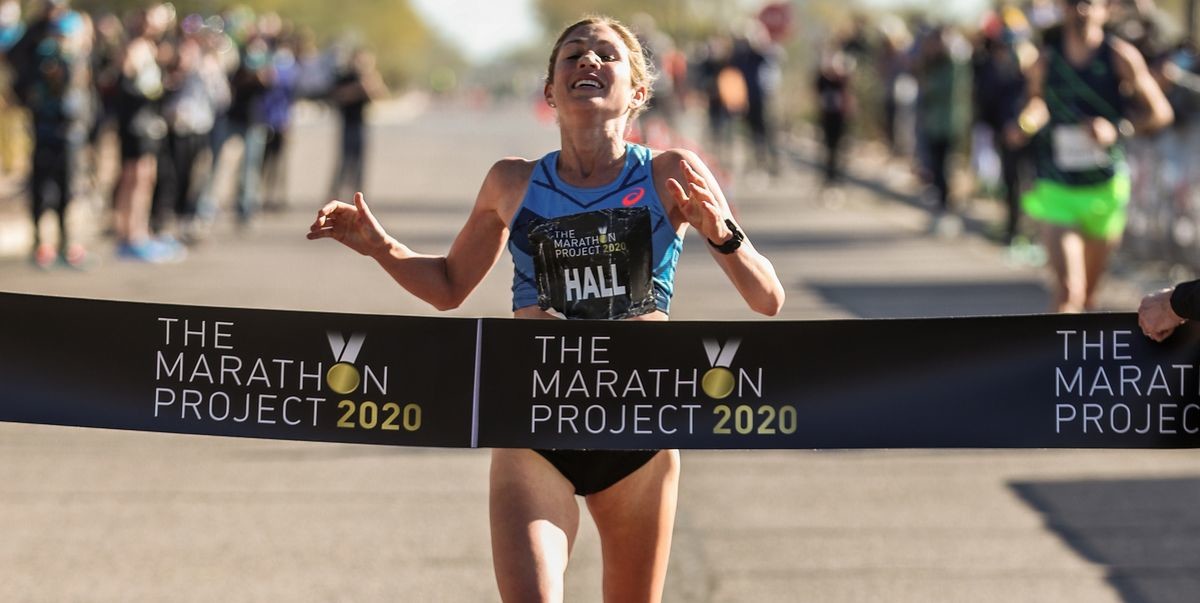
Sara Hall will headline the professional athlete field, looking to defend her title from 2019, when she finished first in a time of 32:27 in a race that doubled as the USATF 10 km Championships. Hall, who has eight national titles to her name, was runner-up (2:22:01) at the 2020 Virgin Money London Marathon last October and then in December clocked the second-fastest marathon ever by an American woman (2:20:32) at The Marathon Project in Chandler, Ariz. The year prior, she was the top American finisher and fifth overall (2:22:16) at the Berlin Marathon. Hall is the only athlete in history to have won the Mini 10K, the New Balance 5th Avenue Mile, and the Abbott Dash to the Finish Line 5K in New York.
“The Mini is such a great celebration of women, history, and running, and it was an honor to add my name to the winners’ list in 2019,” Hall said. “It’s been such a groundbreaking race in so many ways, so it seems fitting that it will be one of the first big events in New York City since the pandemic began. I’ve been really lucky to benefit from some cool new race opportunities over the last year, and it’s exciting to see the return of established and historic events like the Mini.”
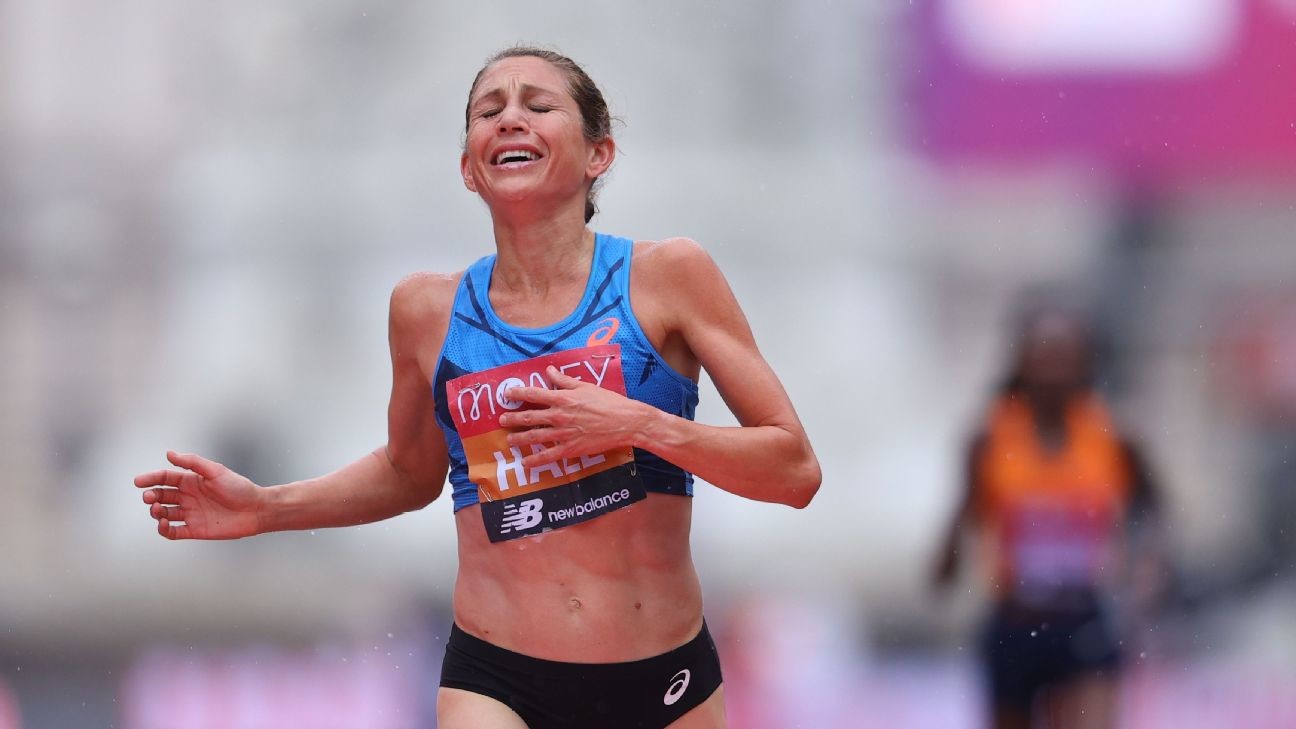
The professional athletes taking part will be in a controlled environment. The field will be required to provide proof of a negative COVID-19 test before traveling to New York and will undergo daily COVID-19 testing and tracing while in New York for the race. There will be a separation of the pro field and general field at the start, no guests will be allowed to accompany the athletes, and they will be required to wear masks at the start and finish. Additionally, there will be an elimination of touchpoints, including no large gatherings or in-person meetings until race morning.
The full professional athlete field – both the open division and wheelchair division – will be announced closer to the race; the event is the only all-women professional wheelchair race in the world.
The Girls’ Run at the Mastercard New York Mini 10K, a 1-mile race for girls ages 12-18, will follow the adult race, and there will also be a Virtual Mastercard New York Mini 10K, which runners can participate in from anywhere in the world from June 12-20.
Mastercard will serve as title sponsor of the event for the first time after becoming NYRR’s newest foundation partner in 2020. As part of its long-term partnership with NYRR, Mastercard will also serve as the presenting sponsor of professional women’s athlete fields at NYRR events and provide support to NYRR’s Run for the Future program.
“The New York Mini 10K is a momentous symbol of the perseverance and dedication shared by women all around the New York running community," said Cheryl Guerin, Executive Vice President of North America Marketing & Communications at Mastercard. "We are proud to partner with New York Road Runners on bringing this special race back and inspiring all New Yorkers to prioritize their health, wellness and exercise in their daily lives.”
From those who led the way 49 years ago, such as legends Kathrine Switzer and Nina Kuscsik and the event’s inaugural champion Jacqueline (Marsh) Dixon, to the more than 200,000 women who have finished the race since 1972, the Mini 10K has served as one of the most impactful women’s races in running history.
The event was founded as the world’s original women-only road race in 1972, and was first called the six-mile Crazylegs Mini Marathon. The Mini 10K got its current name when race founder Fred Lebow convinced the sponsor to support a six-mile “mini” marathon—named for the miniskirt, a big fashion trend of the times. Seventy-two women finished that first race, which helped show that women deserved to run in road races as much as their male counterparts. Three weeks later, Title IX was signed into law, guaranteeing women the right to participate in school sports and creating new opportunities for female athletes. The International Olympic Committee added the women’s marathon to the Olympic program for the first time at the 1984 Los Angeles Games, a decision sparked by the growth of women’s road racing, which was led by the success of the Mini.
Login to leave a comment
New York Mini 10K
Join us for the NYRR New York Mini 10K, a race just for women. This race was made for you! It’s the world’s original women-only road race, founded in 1972 and named for the miniskirt, and it empowers women of all ages and fitness levels to be active and to look and feel great on the run. Every woman who...
more...Pikes Peak Marathon legend Arlene Pieper Stine, the first woman to run a sanctioned marathon, has died
Eight years before Kathrine Switzer shocked the world by running the Boston Marathon, Arlene Pieper Stine did her 26 miles in the Pikes Peak Marathon, with a 9-year-old daughter in tow
Arlene Pieper Stine got into the Pikes Peak Marathon in 1959 as a stunt to market her Colorado Springs health club. When she finished, the 29-year-old mother of three was in the record books as the first woman to finish a sanctioned marathon. Unlike the Boston Marathon, the Pikes Peak race never had a prohibition on women participating.
One of Colorado mountain running’s most beloved heroes used to climb up the ladder next to the sign draped across the town of Manitou Springs’s main drag — “Welcome, Pikes Peak Runners” — so that she could send off the hundreds of runners who had packed the narrow street to head off for the summit of the 14,115-foot mountain more than 13 miles and 7,800 of vertical gain in the distance. Then they would turn around for the return trip.
“Runners, ready,” she said into the microphone in the absolute still morning of sun, rain, or even snow of late August. “Go!” said Arlene Pieper Stine.
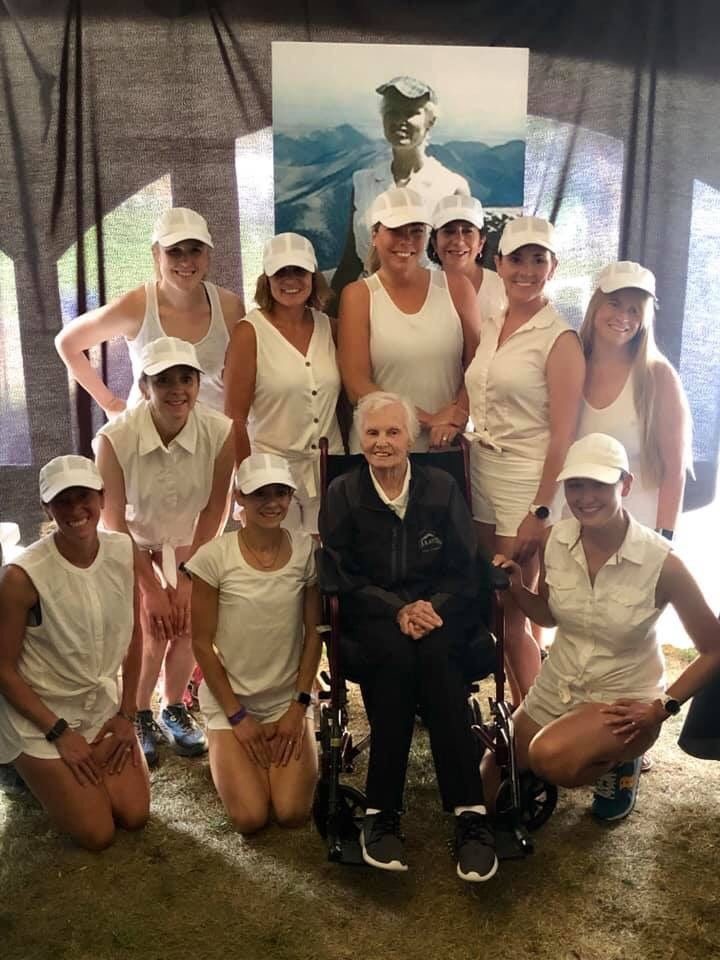
Pieper Stine became the race’s folk hero in 2009 when race officials went looking for the former Colorado Springs resident and health club owner so that they could bring her back to her hometown with some news: Not only had she been the first woman to complete the Pikes Peak Marathon — the punishing switchbacks, rocky single-track, and finally, the last few miles above timberline at over 12,000 feet — but she was the first woman to complete any sanctioned marathon, eight years before Kathrine Switzer became the first woman to complete the Boston Marathon in 1967.
Fifty years after she finished the full “out and back,” as Peak marathon veterans refer to the course, with a time of 9 hours and 16 minutes, Pieper Stine was once again at the start line.
Pieper Stine died Feb. 11, 2021, a month shy of her 91st birthday, as she was trying to build up her strength after battling COVID-19, her daughter Kathy Pieper said.
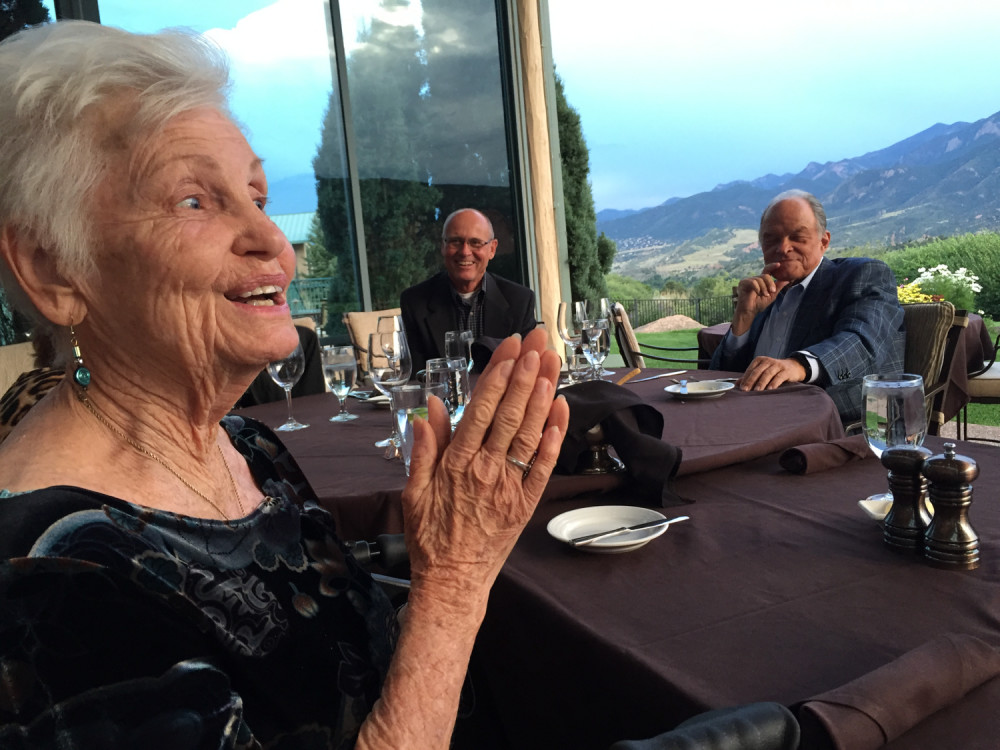
“She got cards and letters from runners and it meant so much to her,” Pieper said. “And I was able to go into her assisted living facility — all covered up — to see her. She ran such a good race.”
She became a role model and inspiration for women runners who looked to her for her boldness and independent spirit — a wife, mother, business owner, and runner who hiked and ran on Pikes Peak with her family in the 1950s, dressed for the race in white sleeveless blouse, white shorts, white headwrap, and tennis shoes from Woolworths.
“We didn’t carry water or have aid stations in those days,” she said in a 2014 interview. “I still remember it like it was yesterday. You can be a wonderful wife and mother, but it showed me that if there’s something you really want to do, you should go for it.”
Year after year, Pieper Stine was as much a part of the race as the unpredictable weather, the friendliness and camaraderie of the runners whether elite or there for a bucket list challenge, or because life wouldn’t be the same without that weekend in late August that turned Manitou Springs into an excited, nervous, and glad-to-be alive running party.
“If I can do it, so can you,” she told the runners who thronged around her in Memorial Park at the Race Expo, at the pre-race spaghetti dinners, or on the streets of town.
From the first time that she and Pieper returned to Manitou Springs in 2009 for the 50th anniversary celebration of the race that they had run together — Arlene at age 29 and Kathy at age 9 — Pieper Stine became living reminders of the beauty and challenge of running the Peak.
“‘It’s a beautiful day for a race,’ I remember her saying as we passed runners that day,” Pieper said of the race she did with her mother in 1959. “And she kept that same attitude every year. She never could believe that runners would come up to her and say ‘Can you just touch my hand for luck?’ or ‘It’s so good to see you again.’ She remembered everyone and had wanted to say something to them all. She could barely walk 10 paces down the sidewalk and people would say, ‘Can I get your picture? Can I get your autograph?’ It was just the thrill of her life when [race organizers] found her.”
In 2019, to mark the 60th anniversary of Pieper Stine’s marathon step for woman runners everywhere, a group of women runners dressed in white sleeveless blouses, white shorts, and headscarves and hats gathered to run up Pikes Peak to mark the occasion. And like the rock star of the trail running world she was for women, Pieper Stine showed up for the celebration.
Four years earlier, in 2015, I had the opportunity to celebrate Pieper Stine myself. The night before the marathon, I joined the Peak Busters gathering at the Manitou Springs City Hall and was reassured by Arlene, as I had come to know her. I had come back from falls and injuries like everyone else on the peak, since my first marathon on the mountain, in 2004.
At that time, Arlene was using a wheelchair after hip surgery. It was my second out and back and I was eager but nervous. “Good luck,” she said. “You’ll have a great time!” I bent down and she took her hand in mine. “OK,” I said, feeling tears about to come, feeling a part of history of this mountain that had both tested me and rewarding my training — or had spit me out during a few memorable Ascents and my first marathon. But I could always count on feeling inspired by the women who had come before me, especially Arlene.
The next morning, she was at the start, shaking hands, giving hugs, and talking to racers through the speakers, to get ready and GO!
“Without pioneering efforts like Arlene’s, we would have no history nor legacy in our sport,” said Nancy Hobbs, executive director of the American Trail Running Association. “Many women — young and old — have been inspired by her.
That includes Pieper, who is planning to train for the Ascent along with one of Pieper Stine’s grandsons, Kyle, 29, who wants to train and qualify for the marathon. She also is survived by daughters Karen, 67, and Linda, 57, and her son, Karl, 66; three other grandchildren and four great-grandchildren.
“Mom wanted to sprinkle some of her ashes on Pikes Peak,” Pieper said. “And I thought, ‘I’d like to go back 60 years later and see if I can do the Ascent.’ Maybe I can finish it, maybe not even do it as a race. And then maybe I could keep her legacy going.”
by Jill Rothenberg
Login to leave a comment
Pike's Peak Marathon
A Journey to the Top and Perhaps Back The Pikes Peak Ascent® and Pikes Peak Marathon® will redefine what you call running. Sure, they start out like a lot of races on Any Street, USA. But your first left turn will have you turning in the direction of up! During the next 10 miles, as you gain almost 6,000...
more...Grandma's Marathon adds a female runner to logo
Grandma’s Marathon is adding a female runner to its logo, a move race organizers say is “long overdue.”
“We thought with the 45th anniversary coming up it would be a great time to make that update,” said Shane Bauer, executive director of Grandma’s Marathon. “It’s been talked about for years.”
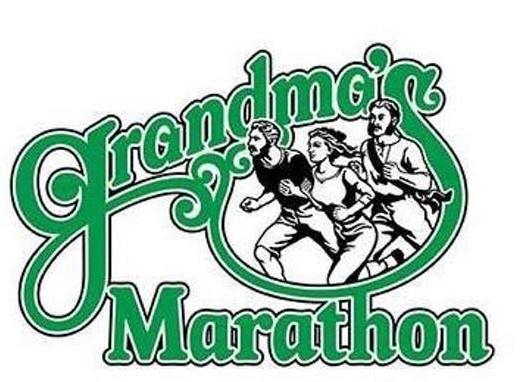
The logo was adapted from founding sponsor Grandma’s Saloon and Grill and features black-and-white drawings of three runners in a loop. The middle runner was replaced with a woman.
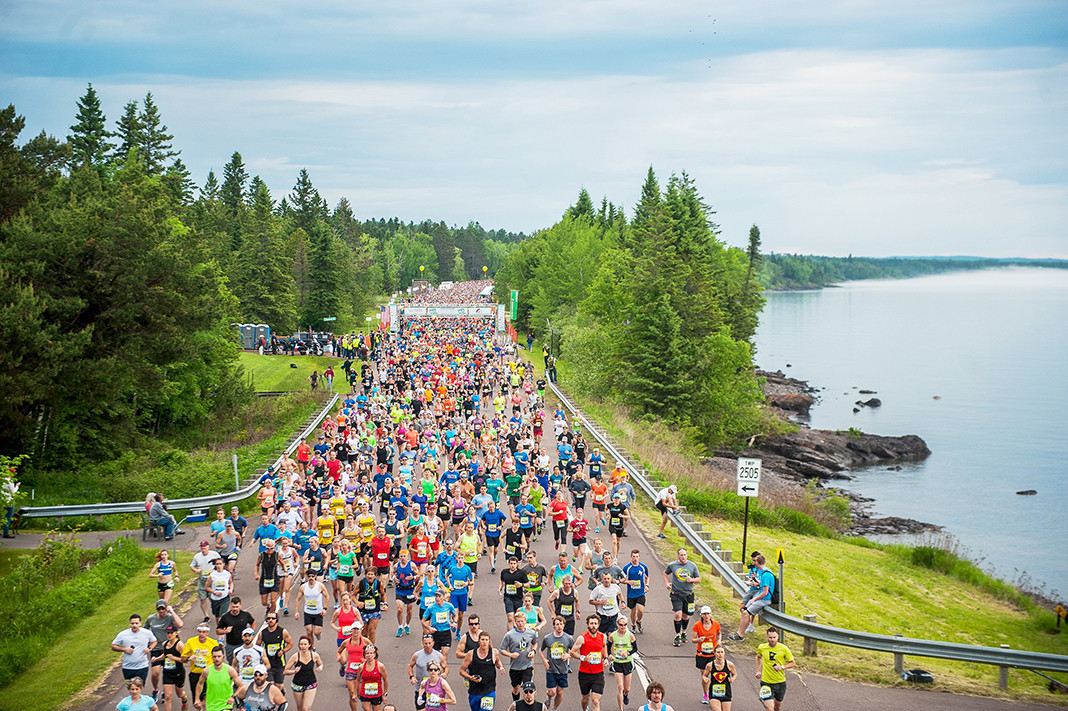
An increasing number of women have run Grandma’s nearly every year since it began in 1977, and a majority of half-marathon runners have been women since that event began in 1991.
“Thinking about Kathrine Switzer pushing her way into the Boston Marathon, that wasn’t so long ago,” Bauer said about the first woman to run that race in 1967.
“There has been quite the flip.”
Duluth native and Olympic long-distance runner Kara Goucher said she’s “proud” that organizers updated the branding.
“I think we women want representation and I think to have it in the logo is a really big deal,” said Goucher, who lives in Boulder, Colo., but was visiting Duluth this week.
“Those are small steps that make a huge difference for their audience.”
Goucher is an advocate for getting more women and girls into running. After handing out water at Grandma’s Marathon and “loving the race” as a spectator while growing up, the 42-year-old said it was important to “see what was possible.”
“I think it’s one of the great sports where there is equal representation — you’re never going to see that in football or basketball or soccer,” she said. “It’s one of the places where we have equal access most of the time.”
Bauer said that women have also played an important role in the Grandma’s Marathon organization, making up a majority of the paid staff.
“If you look at our history, women have really run the show,” he said. The logo change was prompted by Grandma’s Gazette, the official race publication from Grandma’s Restaurant, which added a woman to its line-art logo in 2019, Bauer said.
Next year’s marathon will be run at half capacity — 4,000 each for the full marathon and the half and 1,500 for the 5K. Race weekend typically draws 18,000 runners and is a major boost for Duluth’s tourism economy.
The race runs along the North Shore between Two Harbors and Canal Park in Duluth and is a Boston qualifier.
Bauer said “we’re choosing to be optimistic” about running the race in person next year, but the pandemic may have other plans.
The 2020 race scheduled for June 22 was canceled at the end of March, marking the first cancellation since the marathon began.
The 45th-annual Grandma’s Marathon and Garry Bjorklund Half Marathon are scheduled for June 19.
by Brooks Johnson
Login to leave a comment
Grandmas Marathon
Grandma's Marathon began in 1977 when a group of local runners planned a scenic road race from Two Harbors to Duluth, Minnesota. There were just 150 participants that year, but organizers knew they had discovered something special. The marathon received its name from the Duluth-based group of famous Grandma's restaurants, its first major sponsor. The level of sponsorship with the...
more...Berlin resident Sigrid Eichner, 79, has run 2,200 marathons and she didn’t start running until age 40
Kathrine Switzer meets a lot of runners. The 261 Fearless founder (who was the first woman to run the Boston Marathon with an official bib, back in 1967) travels the world, promoting women’s empowerment through running. But even she was shocked, during her visit to the Berlin Marathon last month, to meet a woman who has run 2,200 marathons which quite possibly is more than any other woman alive.
Born in 1940, Sigrid Eichner’s running began metaphorically–as an infant, she “ran” from Allied bombs, and from the Russians, with her family. Her passion for physical activity was born after the war, when, as a talented gymnast, she was sent to a boarding school for athletes. It wasn’t until she was a working mother of 40 that she started running, to take time for herself and escape domestic life (and possibly an unhappy marriage), according to one report.
After the fall of the Berlin Wall in 1989, running became a way for her to explore the world.
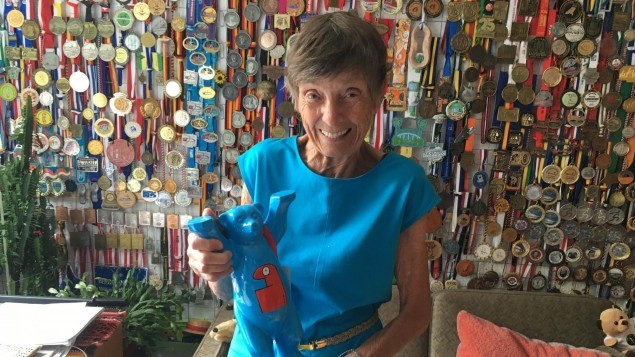
When we tried to verify the number, we found her entry on the Association of Road Racing Statisticians (ARRS) site, which shows 681 marathon results between November 29, 1981 and October 31, 2017, and includes the 2003 Niagara Falls Marathon and New York City Marathon during her only visit to North America.
(The ARRS site has been in limbo since the death of its driving force, Ken Young, in 2017.) The German ultramarathon site D-U-V.com lists between one and 23 ultra results for Eichner every year between 1981 and the present. It’s fair to say that Eichner has done more running than anything else, with the possible exception of breathing, during the last 40 years of her life.
Her children now grown, she admits she runs to escape loneliness. She has a literal curtain of race medals in her home, a room full of trophies from her younger days, and a closet full of race shirts.
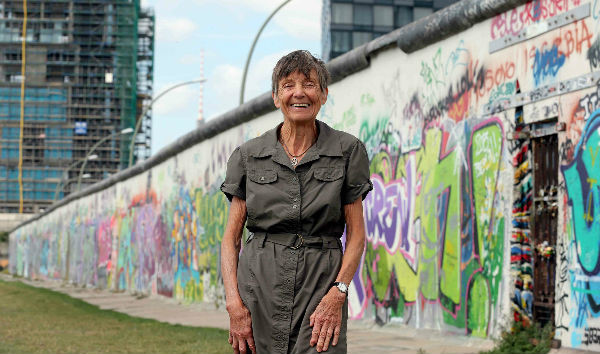
It is sometimes suggested that people who race a lot must have money in order to afford the constant travel and race entries, but this does not appear to be the case for Eichner, most of whose races nowadays are in her native Germany.
She favors hostels over hotels, and has occasionally slept on the floor of the race expo to save money. Last year she spent just over 3,000 euros ($3310US) on 88 races, including travel and accommodation. She spoke of contacting the Guinness World Records organization in the hope of attracting a sponsor, but so far there is no official Guinness record.
She is rarely injured, though one report says she was once badly hurt in a car accident, and now has four screws in her back.
Occasionally running multiple marathons in a single weekend, Eichner says, “The first 30 minutes are the hardest.”
by Anne Francis
Login to leave a comment
60 years ago, Arlene Pieper Stine was the first woman to run to the top of Pikes Peak and first US woman to finish a marathon
In white shorts, sleeveless blouse and dime-store tennis shoes, Arlene Pieper Stine, 29, stood on the start line of the 1959 Pikes Peak Marathon looking more like Marilyn Monroe than a mountaineer.
But Pieper Stine, then a Colorado Springs health club owner, not only finished the 26-mile race, with its grueling 8,000 feet of vertical gain to the 14,115 summit, she became the first woman to complete a sanctioned marathon in the United States.
Eight years later, Kathrine Switzer would be the first woman to cross the finish line at the Boston Marathon in a dramatic act of gender defiance.
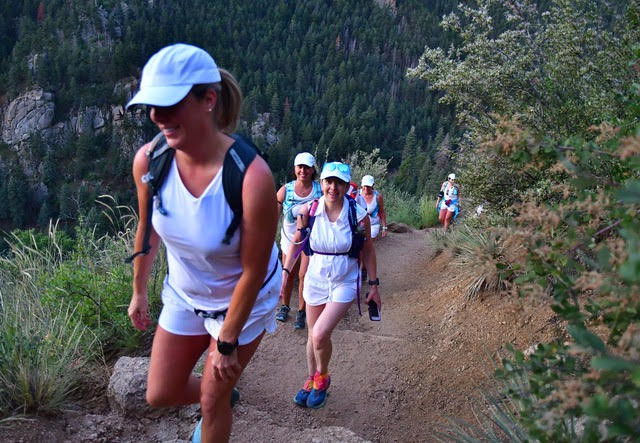
This weekend, 60 years after Arlene Pieper Stine conquered Pikes Peak in 9 hours and 16 minutes, hundreds of women will line up at the Pikes Peak Ascent and Marathonstart, following her path on one of the country’s toughest and highest altitude race courses.
In 2009, after a long search, a Pikes Peak Ascent and Marathon historian trackeddown Pieper Stine, who had long ago moved away and was living near Fresno, California.
She had no idea of her place in running history.
“I still remember it like it was yesterday,” she said in a 2014 interview. “You can be a wonderful wife and mother, but doing the race showed me that if there’s something you really want to do, you should go for it.”
A black-and-white photo of that race start shows Pieper Stine along with her 9-year-old daughter, Kathy, and her husband, who ran with her to offer moral support.
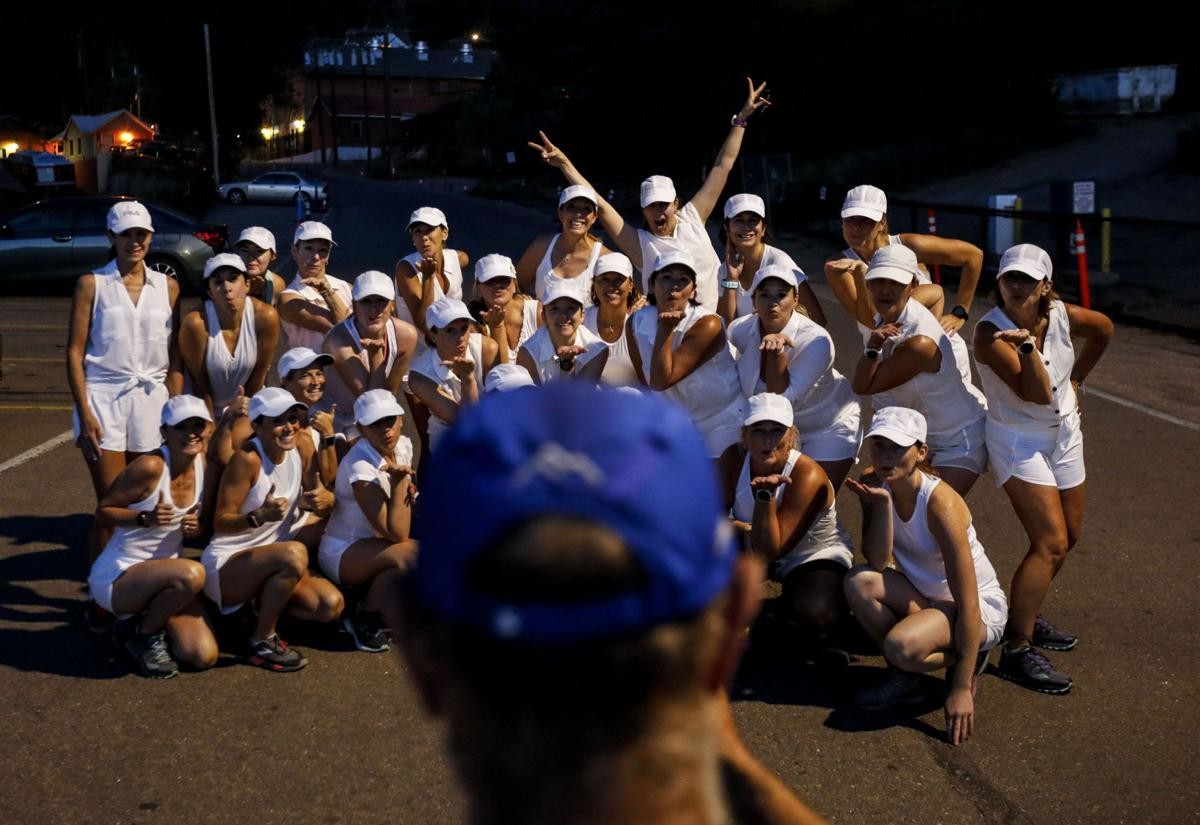
Pieper Stine said she got the idea to do the race as a way to promote Arlene’s Health Studio. The Pikes Peak Marathon never prohibited women from participating.
“In those days, we had no aid stations like there are now, and my running shoes were actually just those sneakers you get from the five and dime,” she said. “And about a week after the race, all 10 of my toenails fell off!”
Pieper Stine, now 89, sometimes returns to Manitou Springs to mark the official start of the race. “What a thrill to look out and see all these people getting ready to run.”
She was inducted into the Colorado Springs Sports Hall of Fame in 2016 and has became a cult figure in the local racing community, inspiring a group of women runners to dress as Pieper Stine did in 1959 in the inaugural “She Moves Mountains” run up the peak last weekend, race organizer Alicia Pino said.
by Jill Rothenberg
Login to leave a comment
Pike's Peak Marathon
A Journey to the Top and Perhaps Back The Pikes Peak Ascent® and Pikes Peak Marathon® will redefine what you call running. Sure, they start out like a lot of races on Any Street, USA. But your first left turn will have you turning in the direction of up! During the next 10 miles, as you gain almost 6,000...
more...Running Revolutionary Kathrine Switzer's Life Is Being Made Into a Movie
Kathrine Switzer's best-selling memoir, Marathon Woman, is set to be adapted into a film by Chastain Film Capital. Switzer, now 72, is best-known for becoming the first woman to officially register and run the Boston Marathon. She also played a key role in establishing the first women's Olympic Marathon in 1984.
Login to leave a comment
The Great North Run, will honor five women who played a part inspiring an unstoppable wave of female runners
Login to leave a comment
80-year-old Florence Barron sets a record at the Tely 10
Login to leave a comment
Running Legends Celebrate NYRR’s 60th Anniversary on Global Running Day
Login to leave a comment
Many struggled with the heat at the hottest London Marathon on Record
Login to leave a comment
Switzer named Female Masters Runner of the Year 2017 by RRCA
Login to leave a comment
Pioneering marathon runner Switzer to race London Marathon
Login to leave a comment
Kathrine Switzer shares her 2018 running goal
Login to leave a comment
Kathrine Switzer celebrates her 71st birthday
Login to leave a comment
Who was the first Women to Officially Run Boston?
Login to leave a comment


